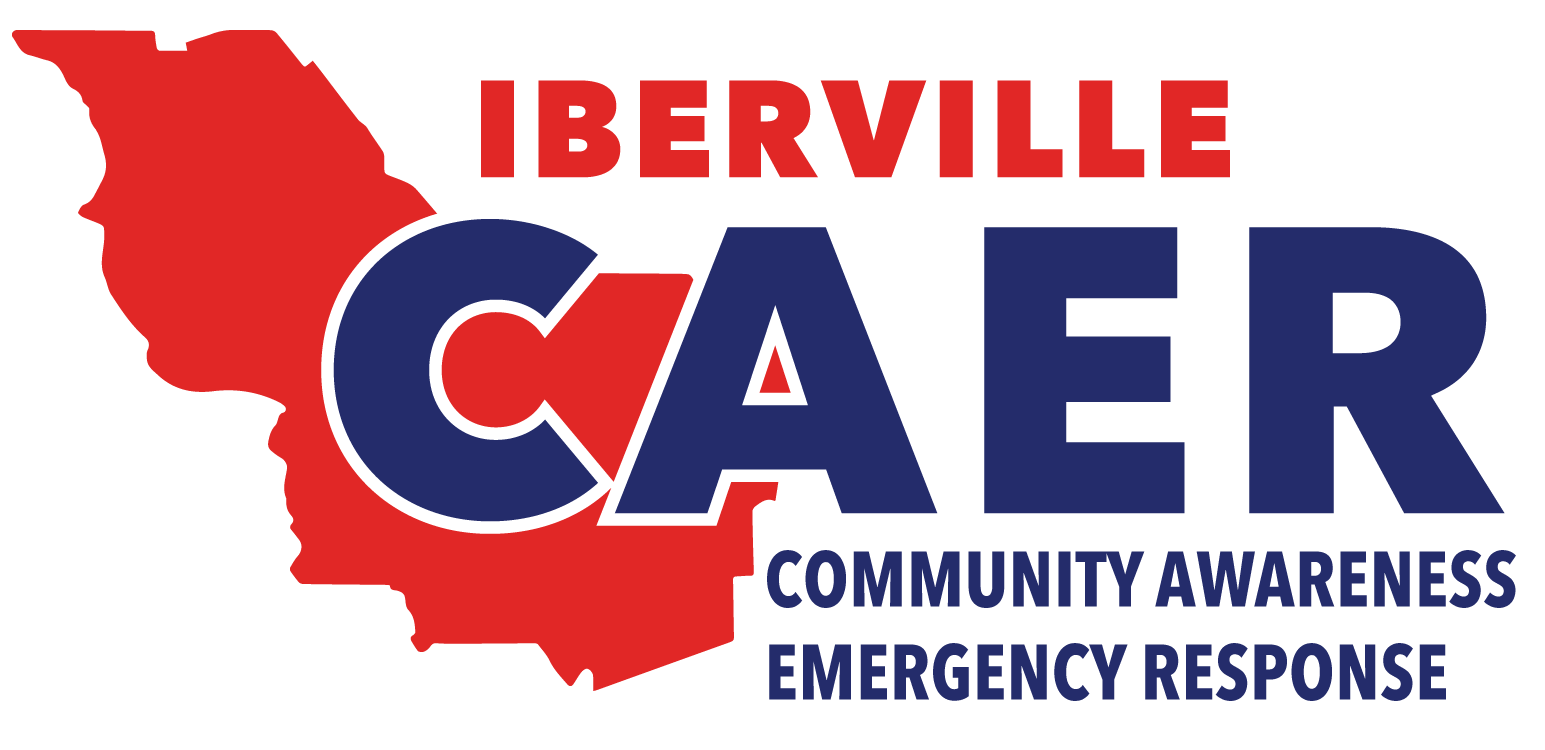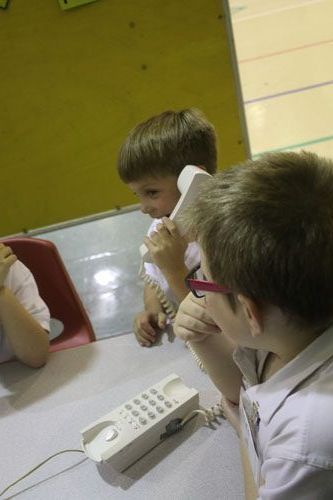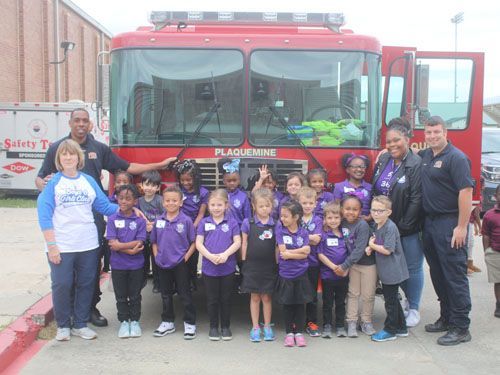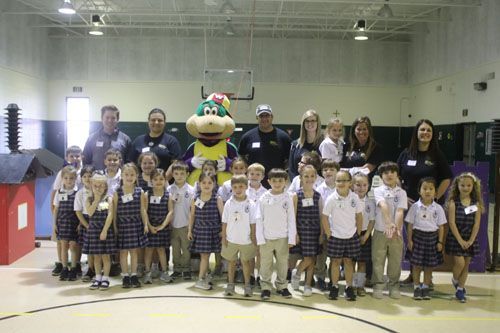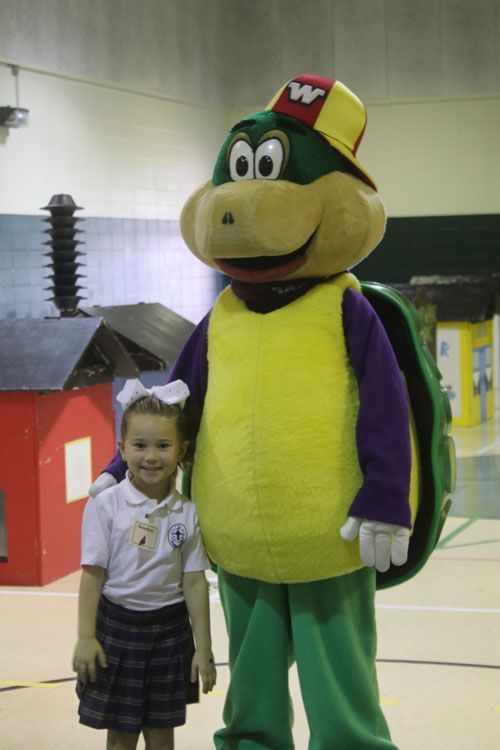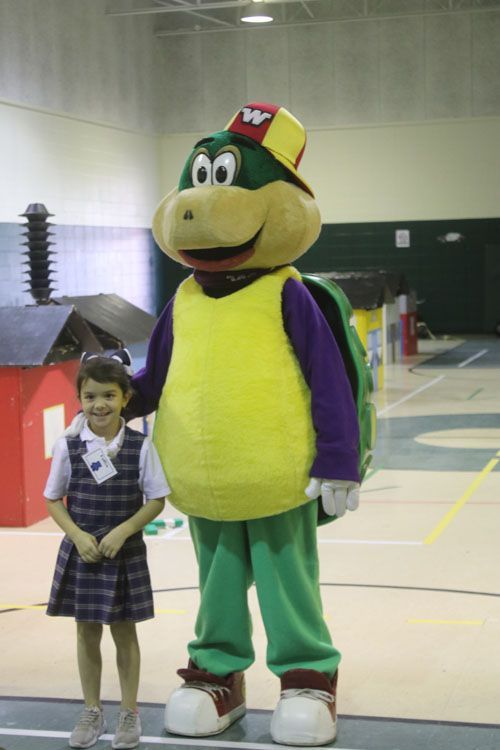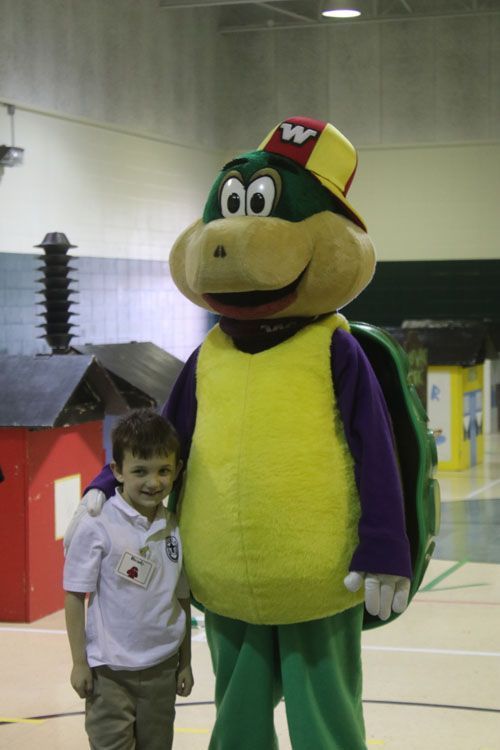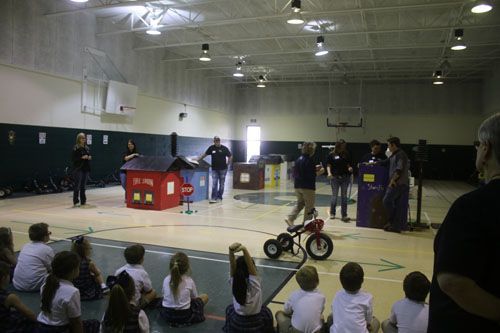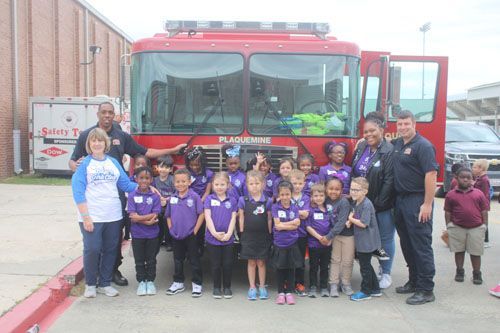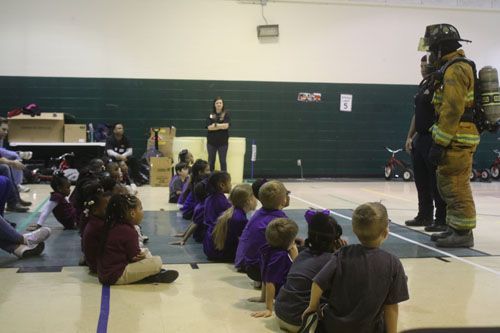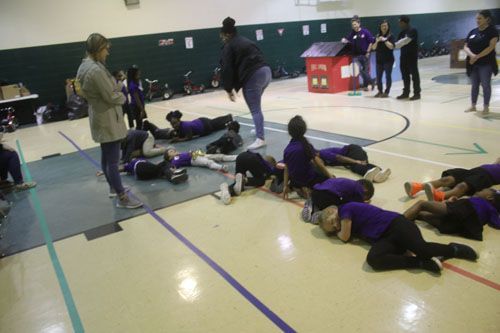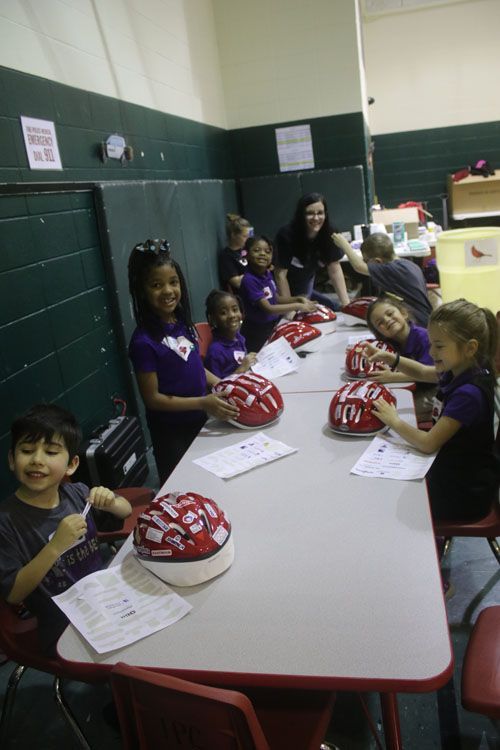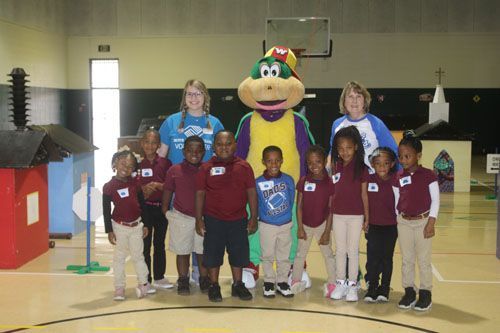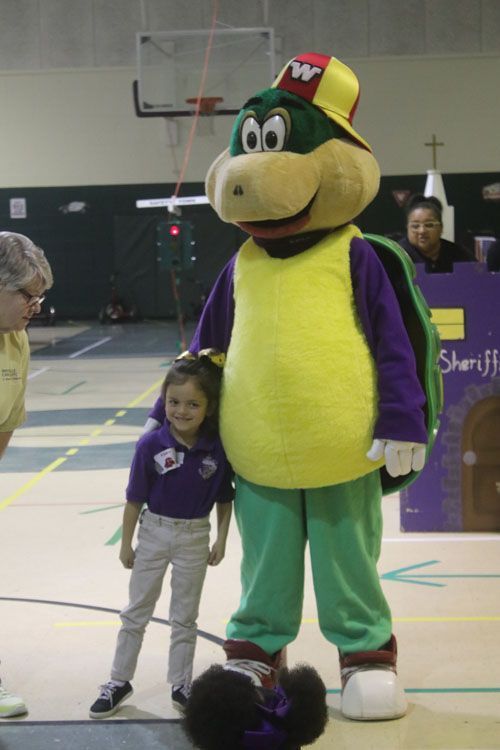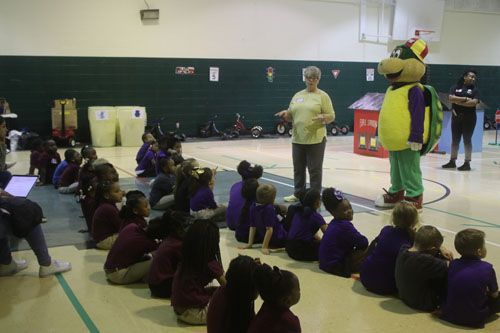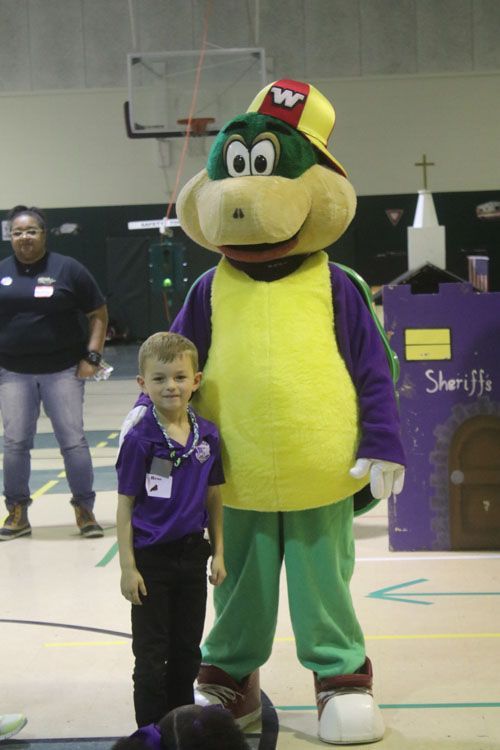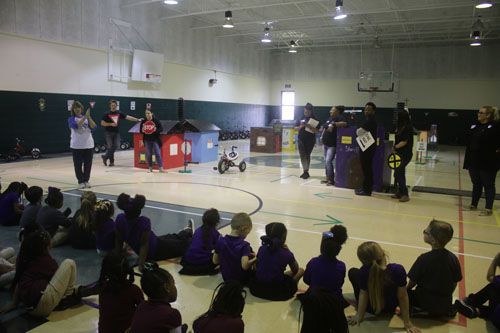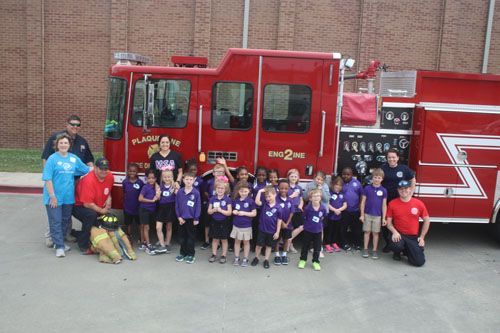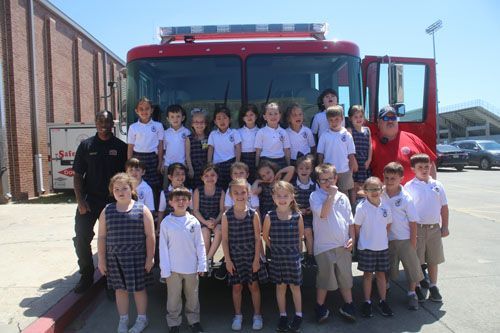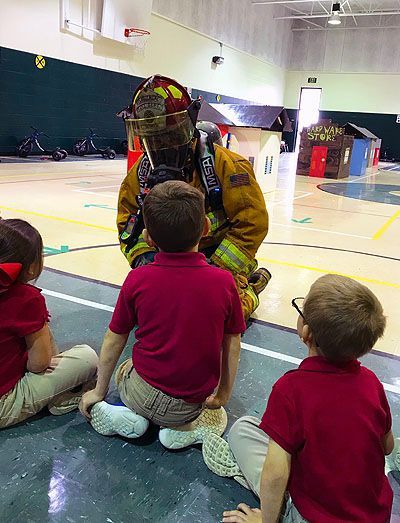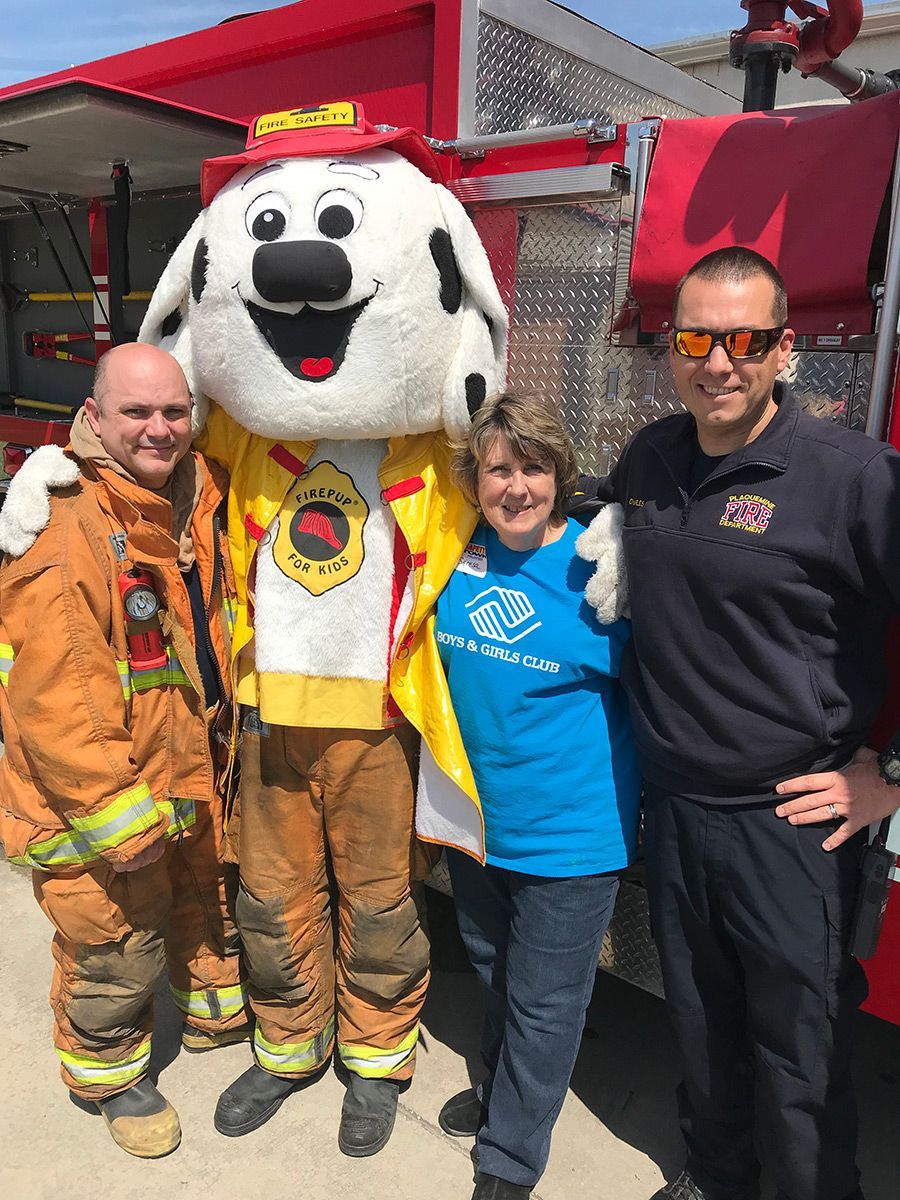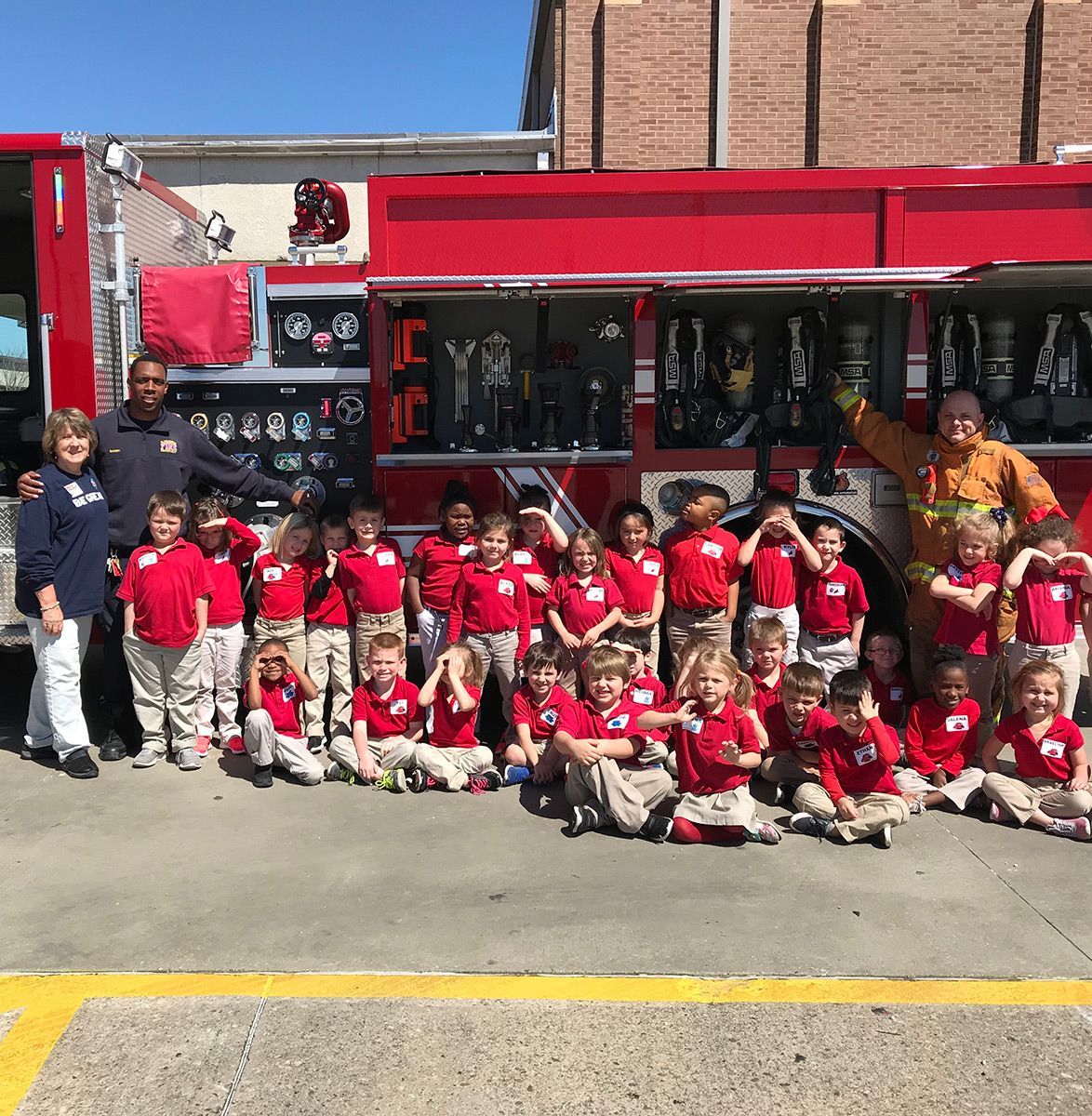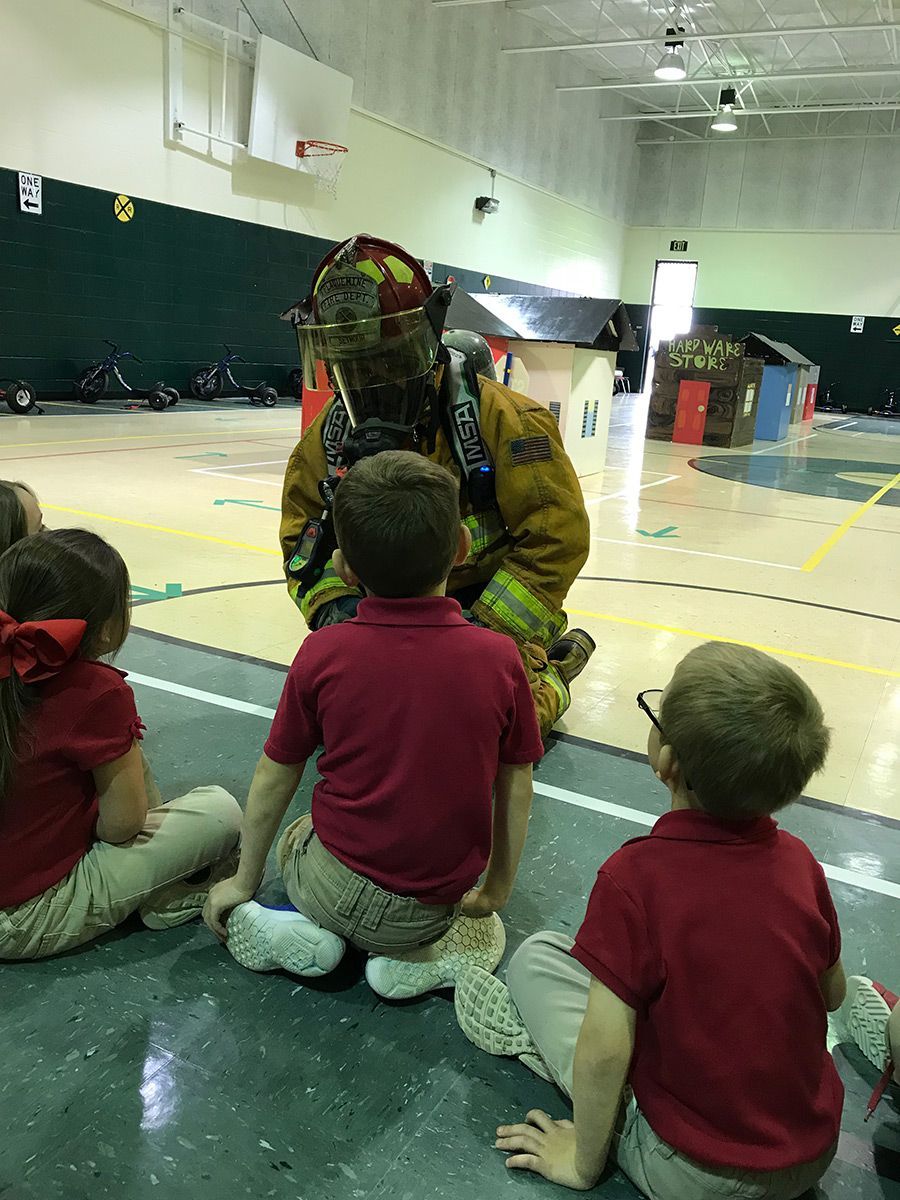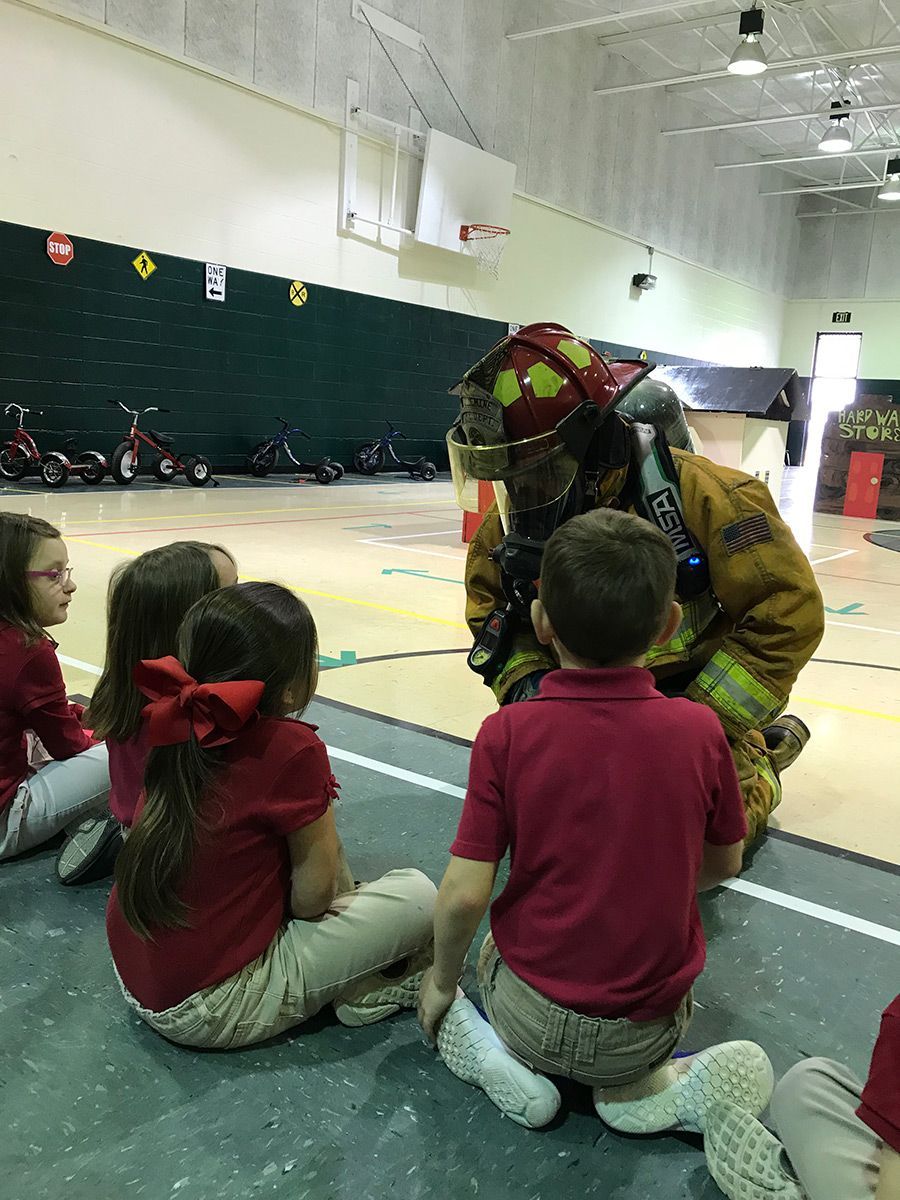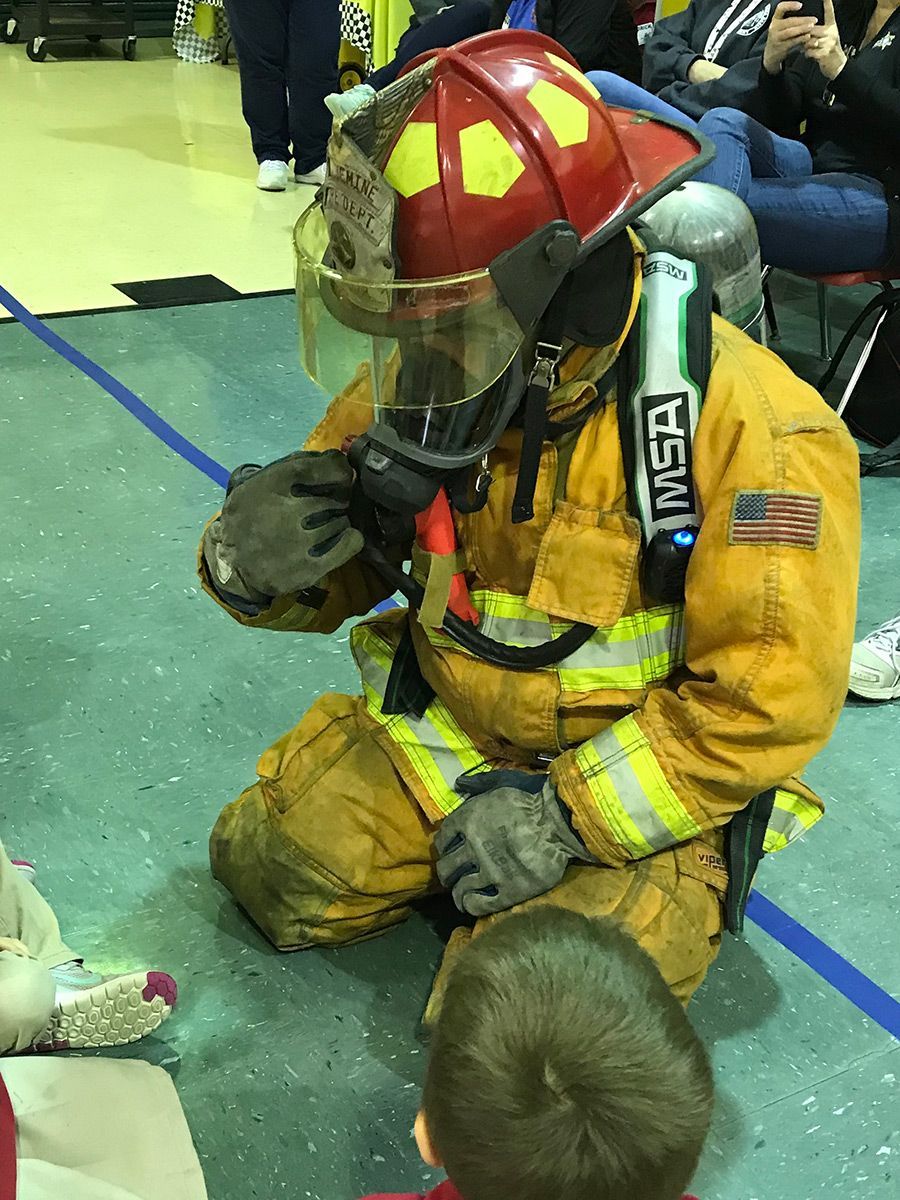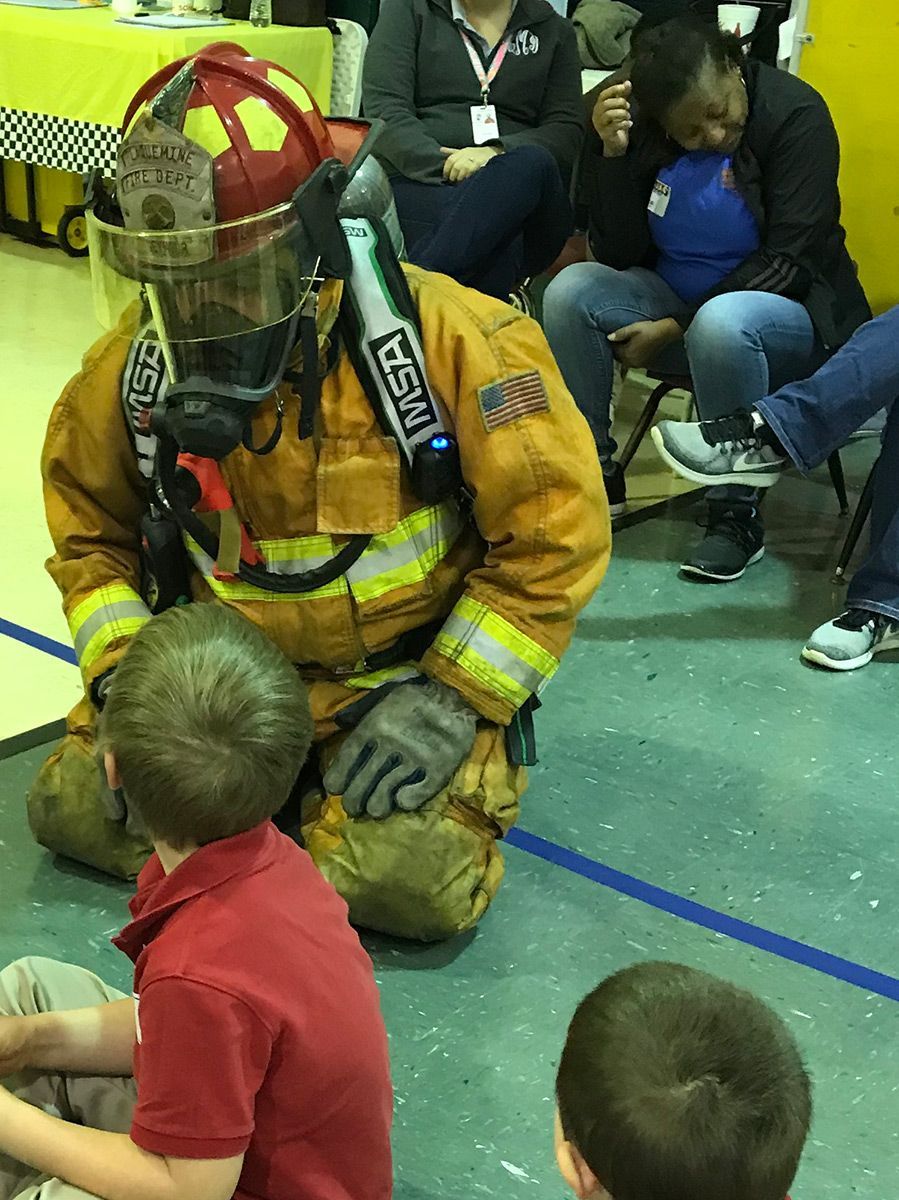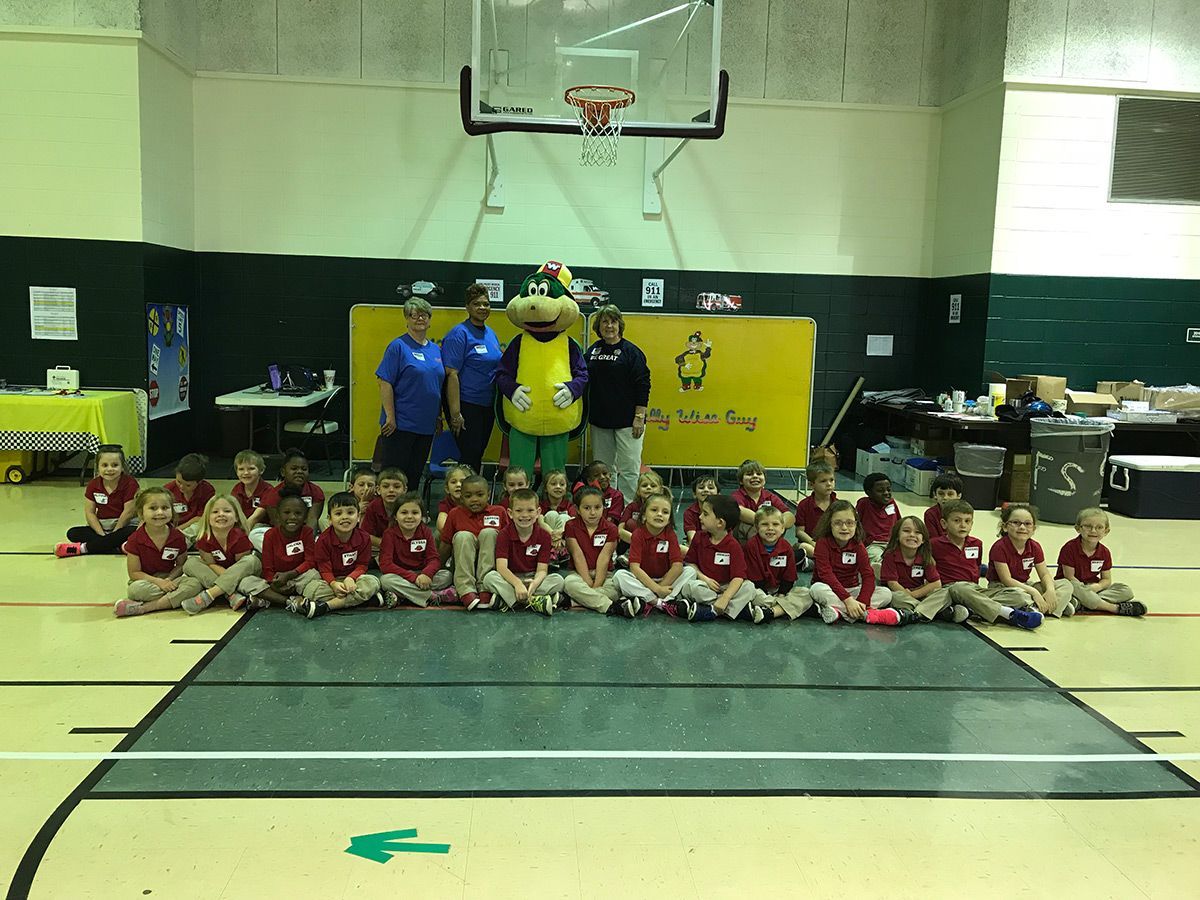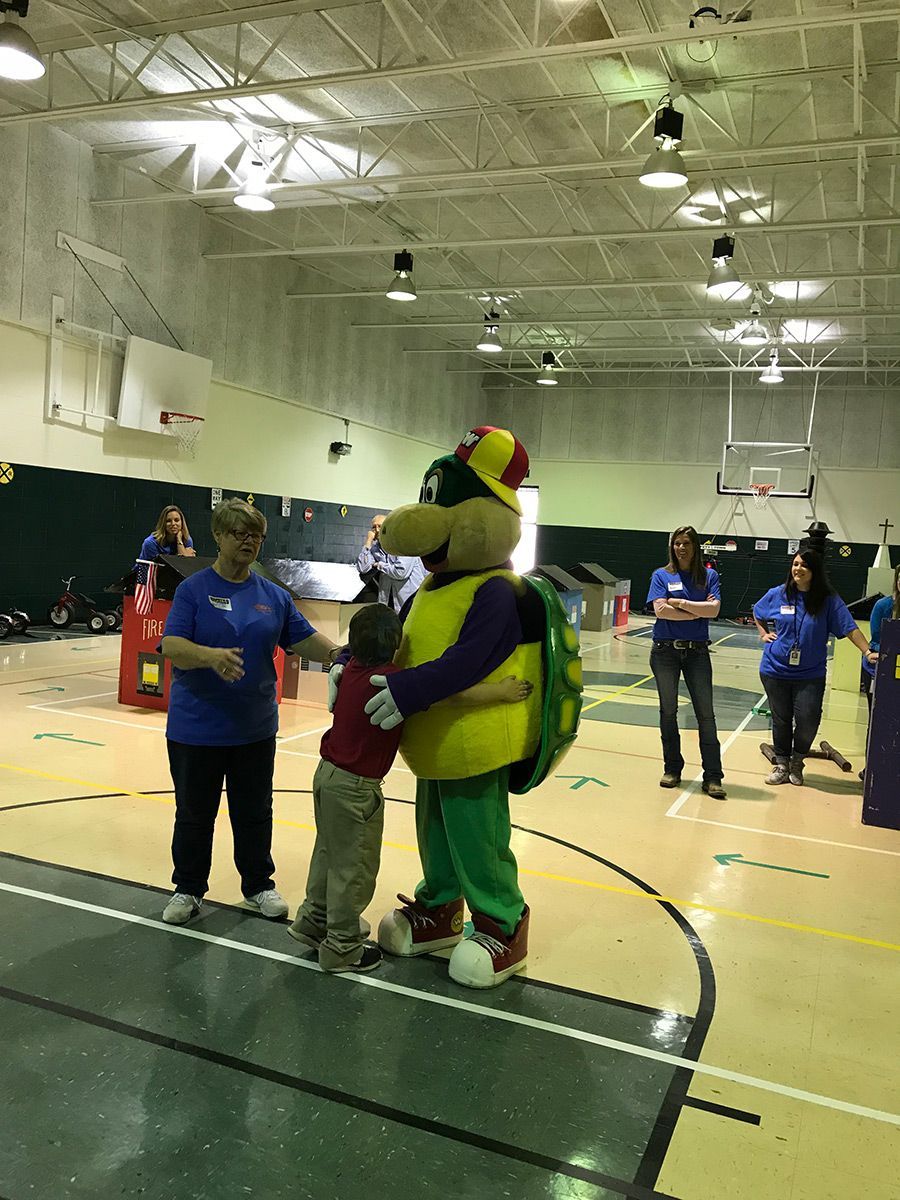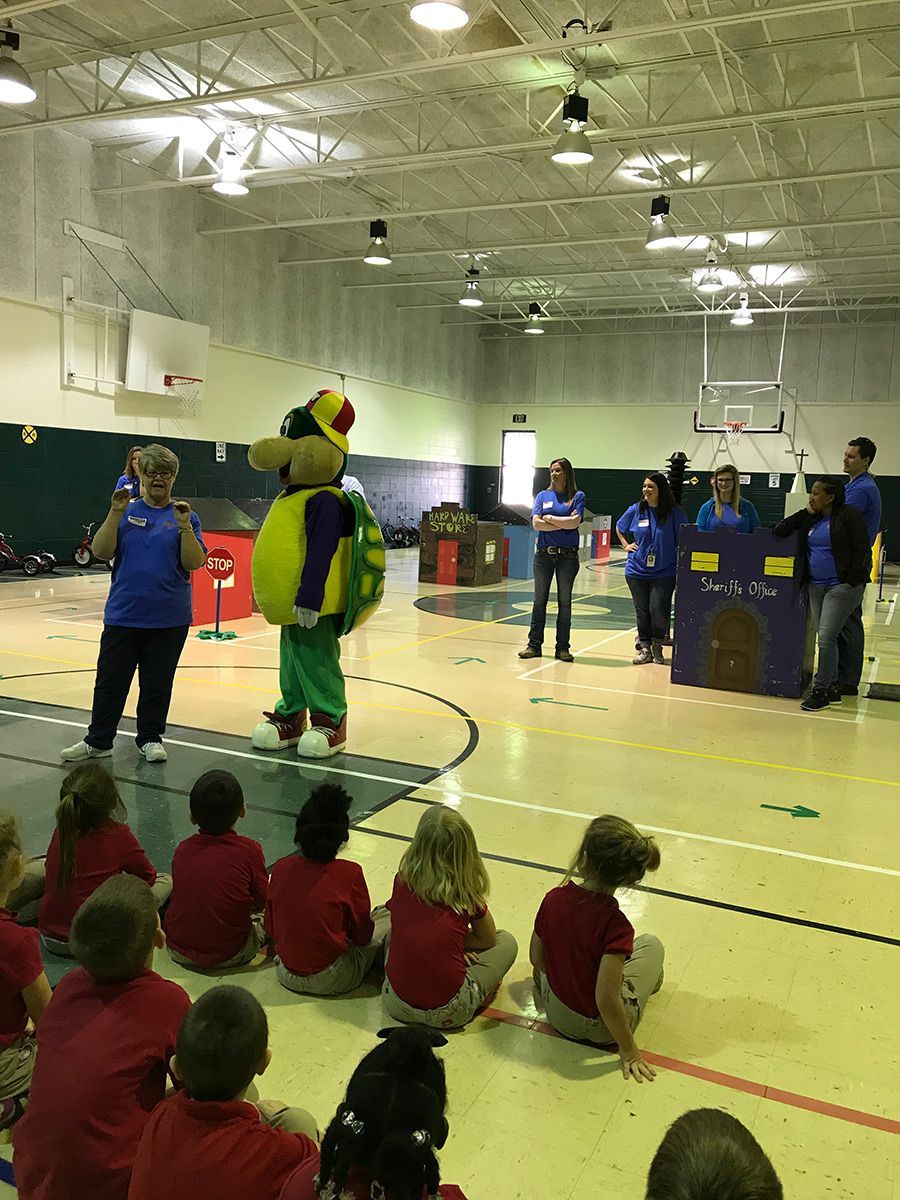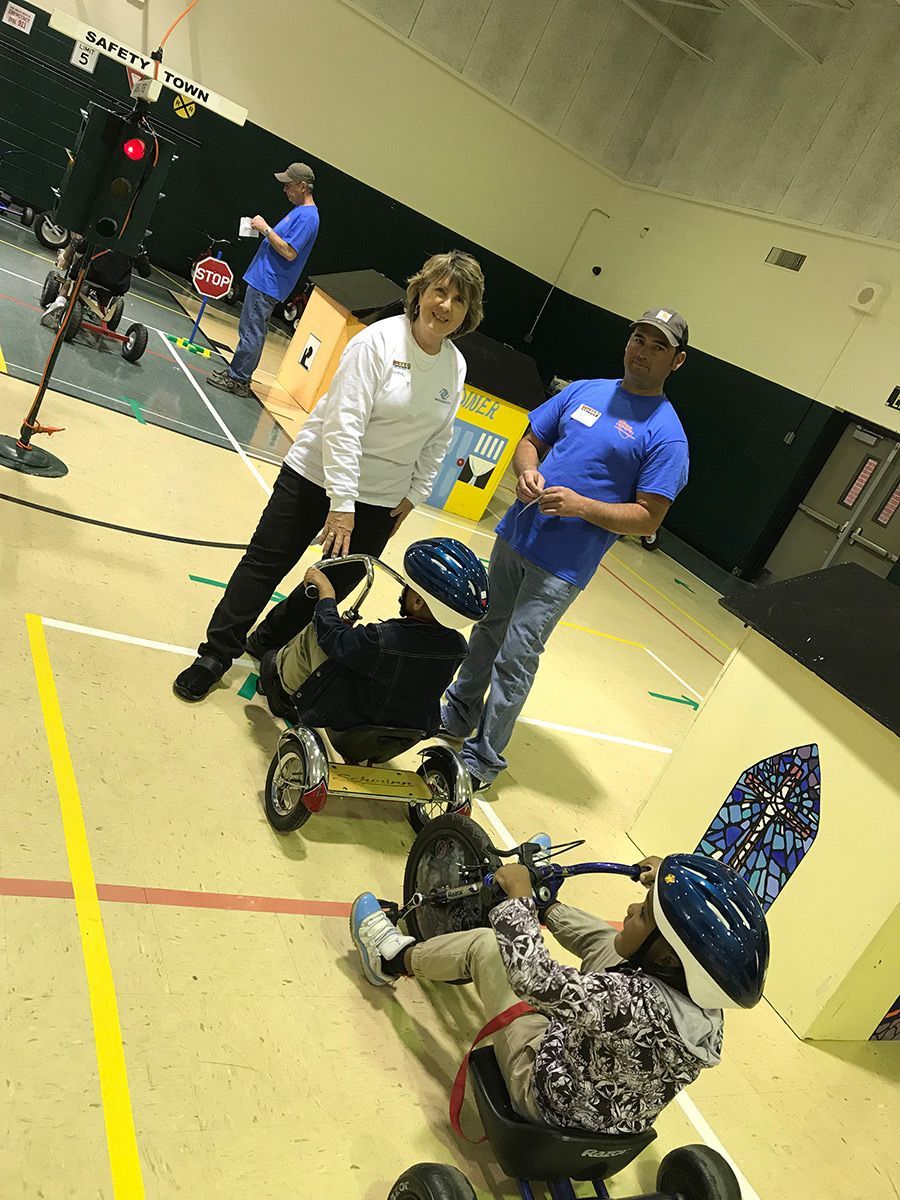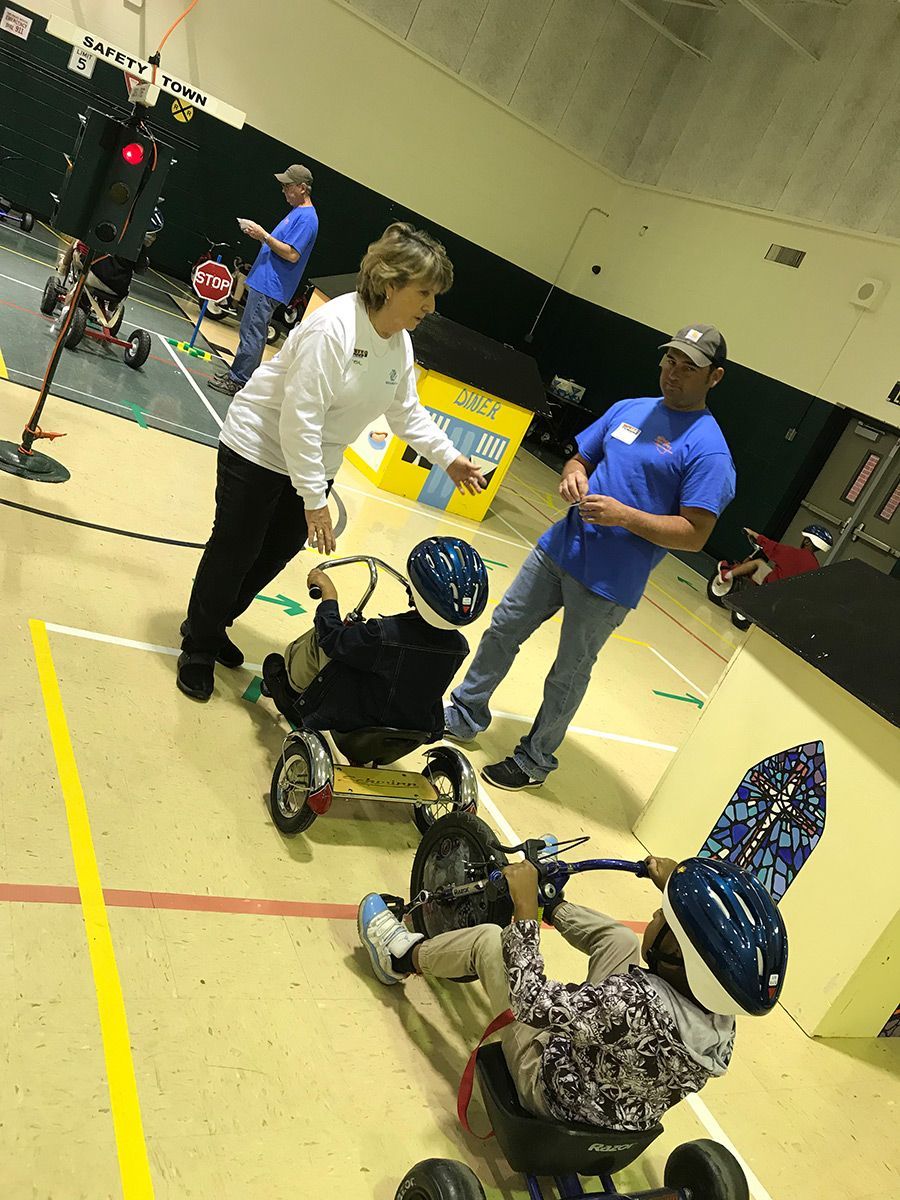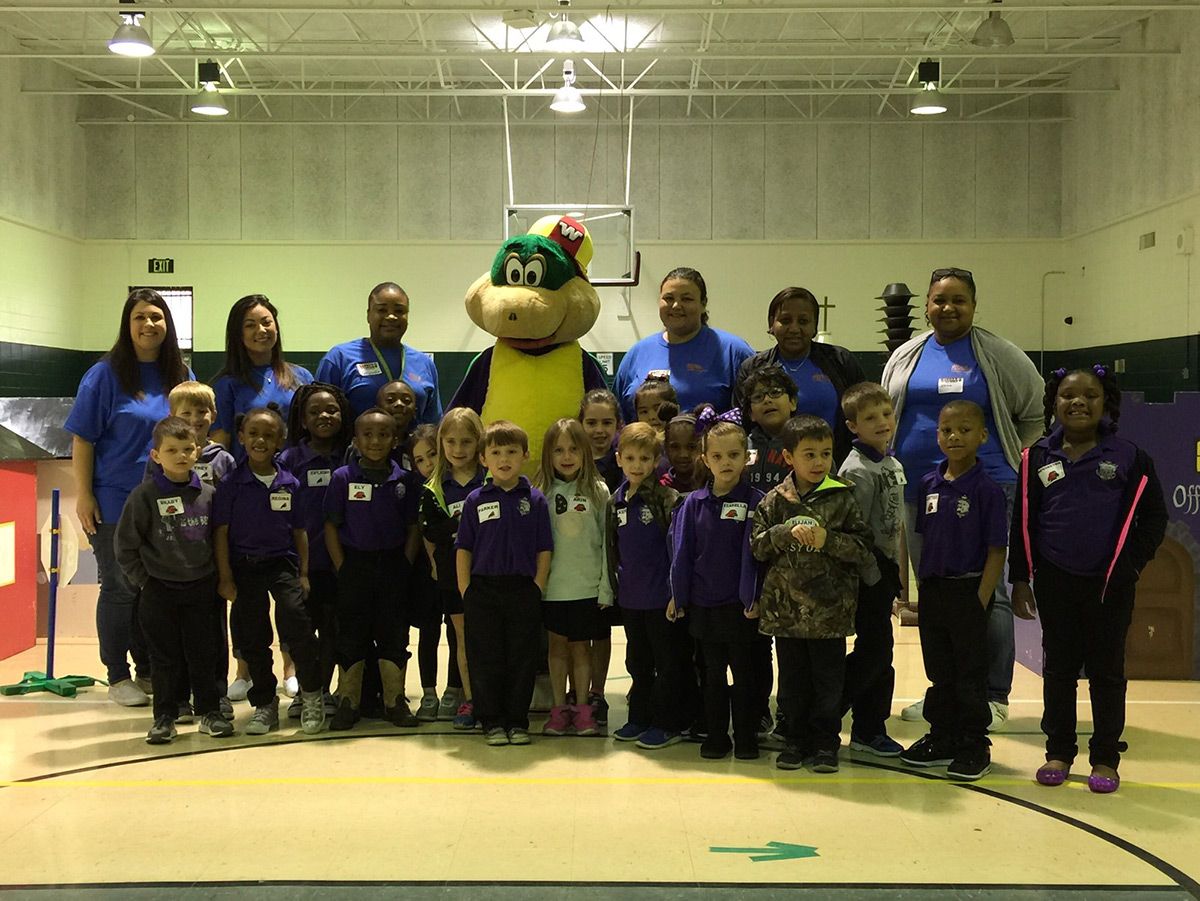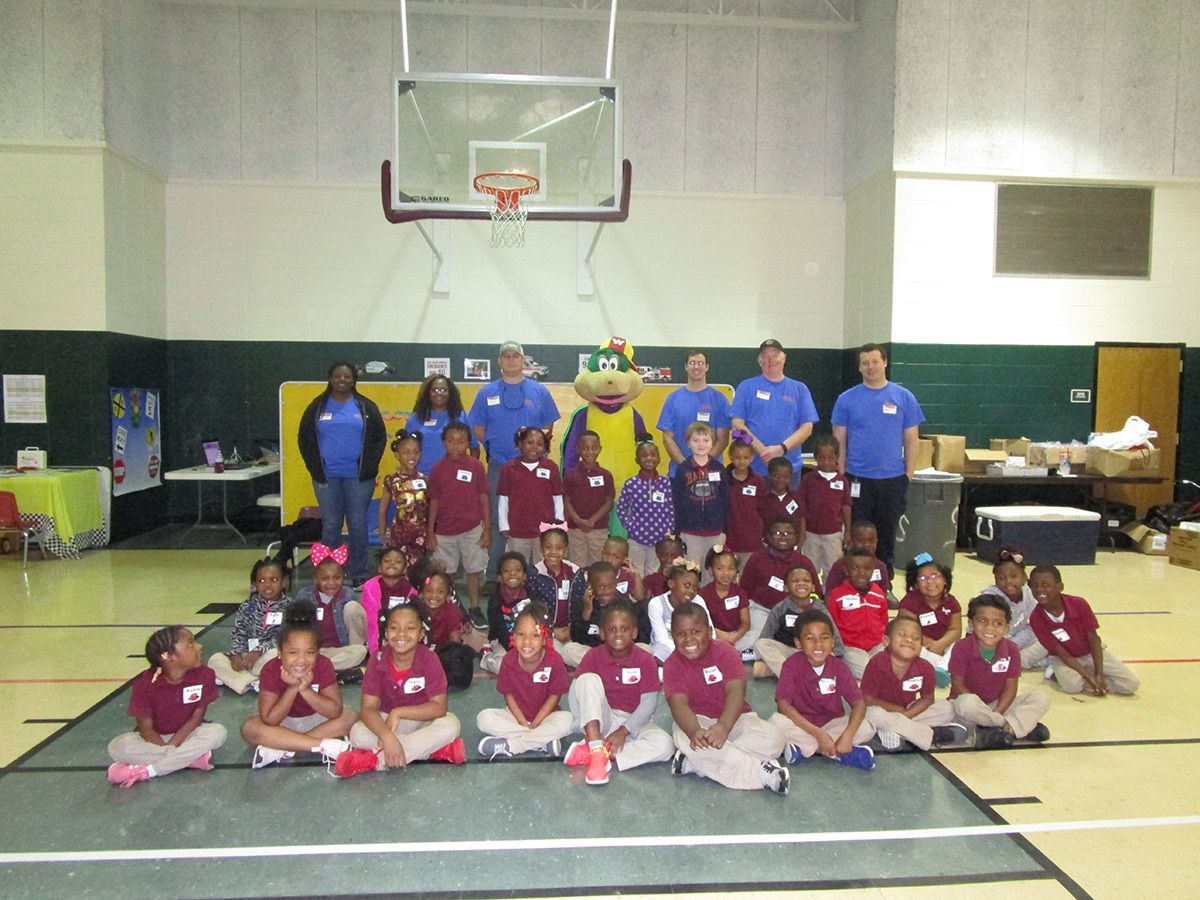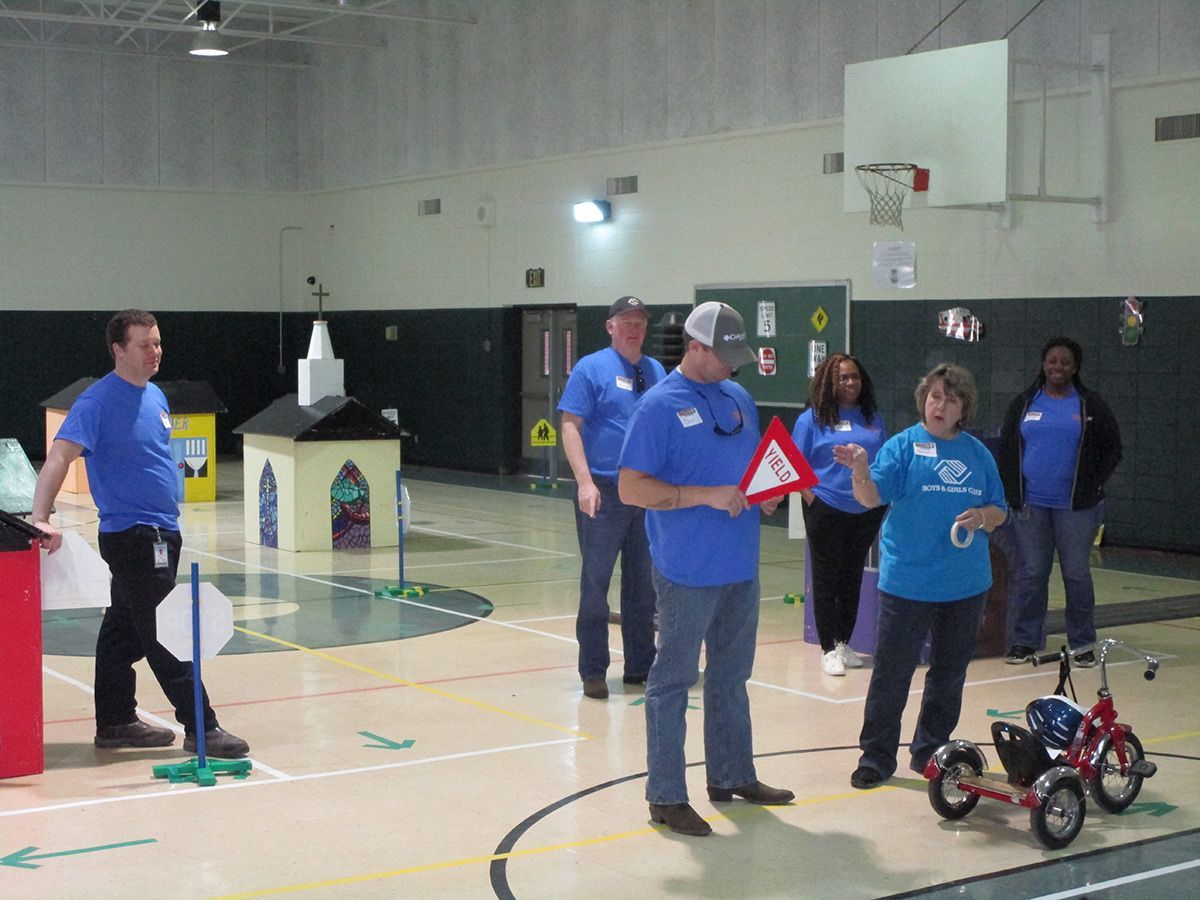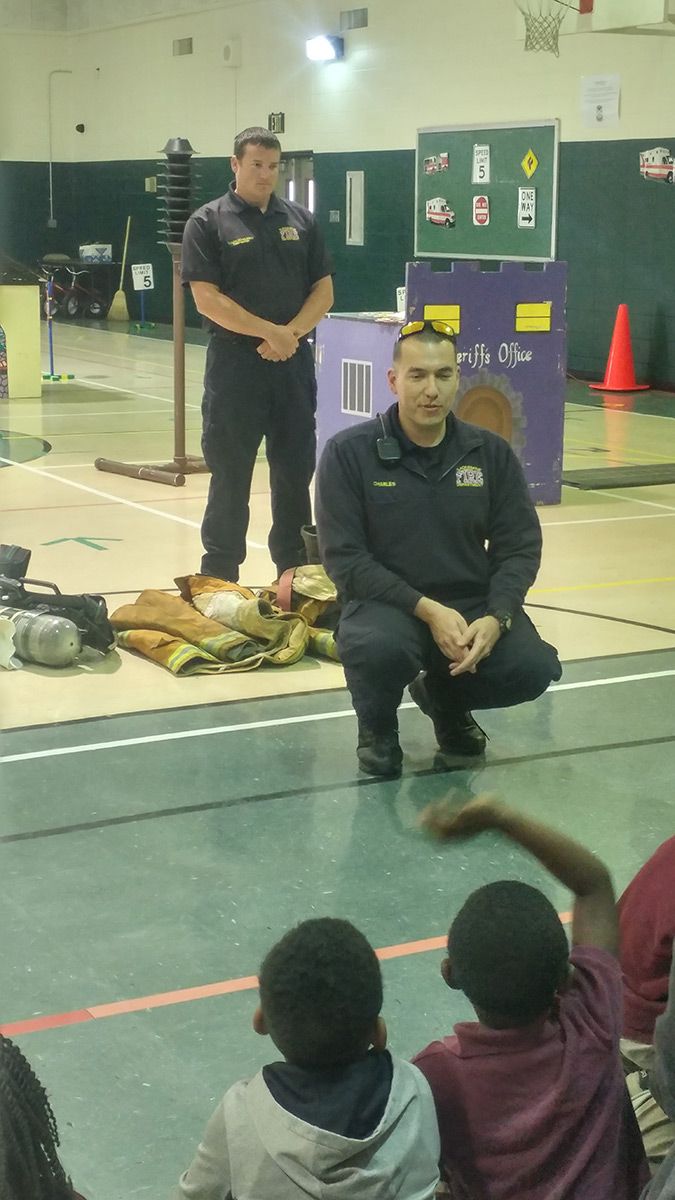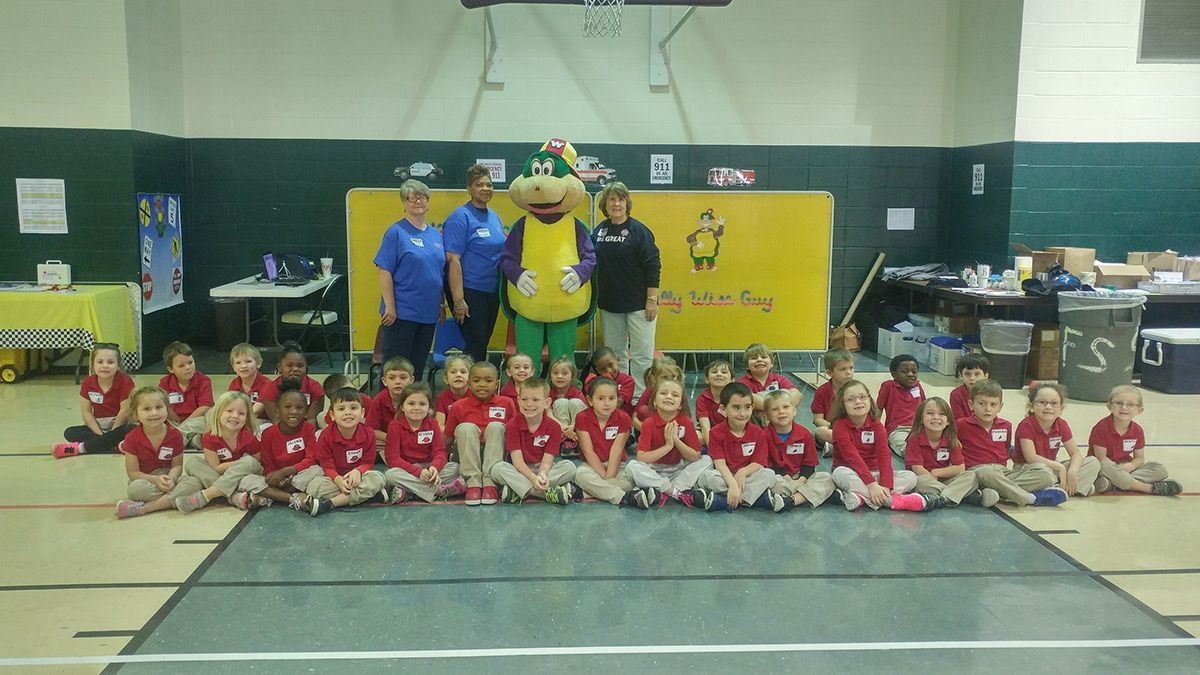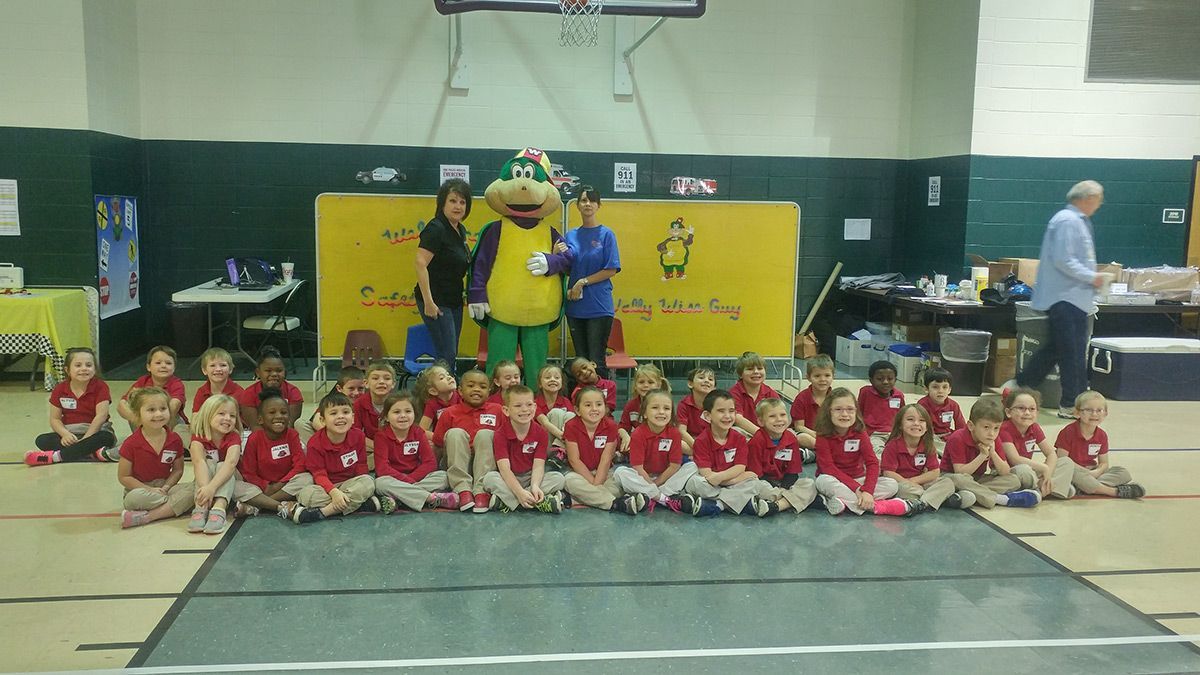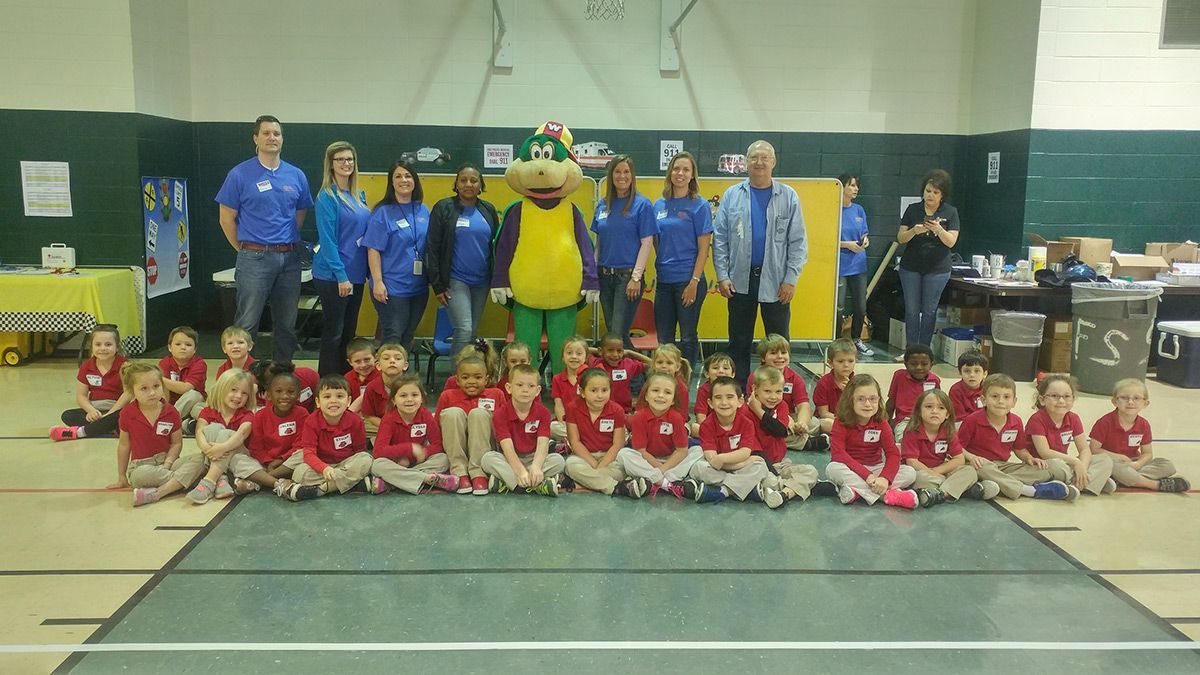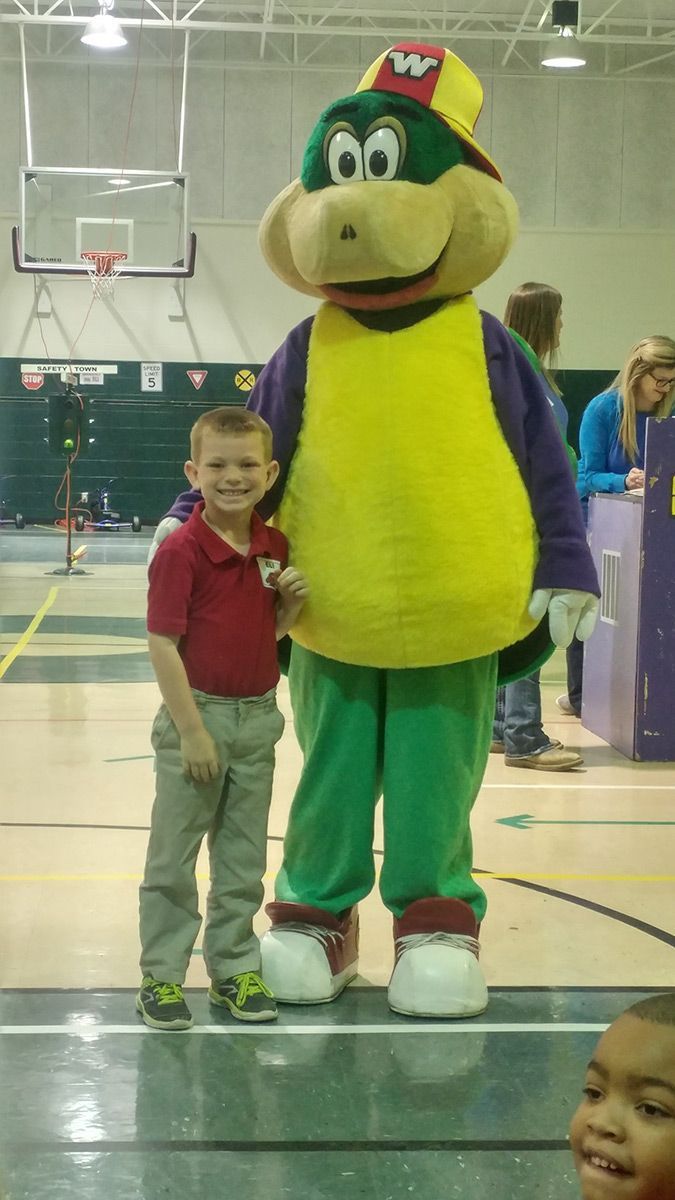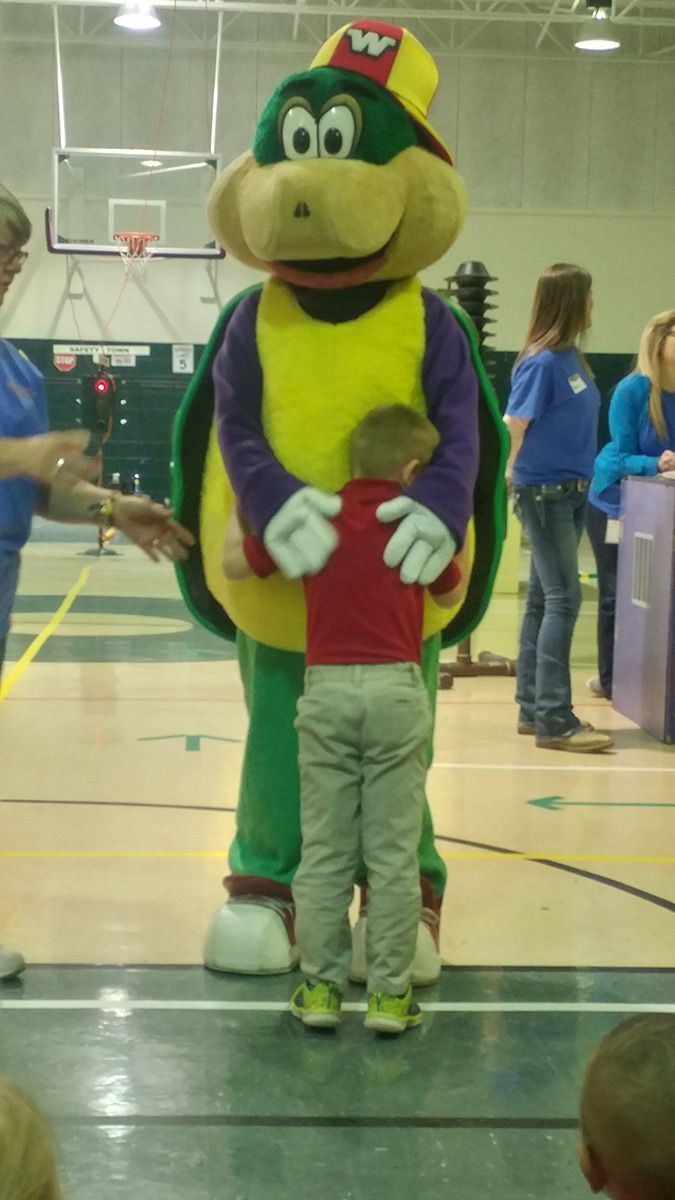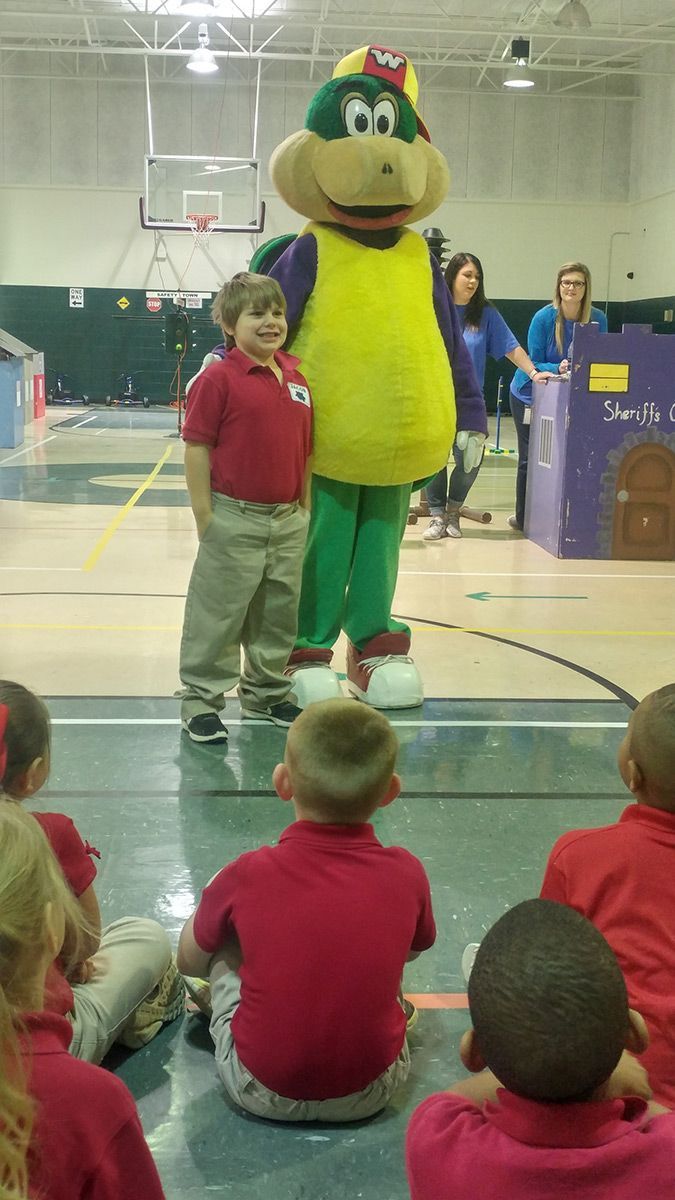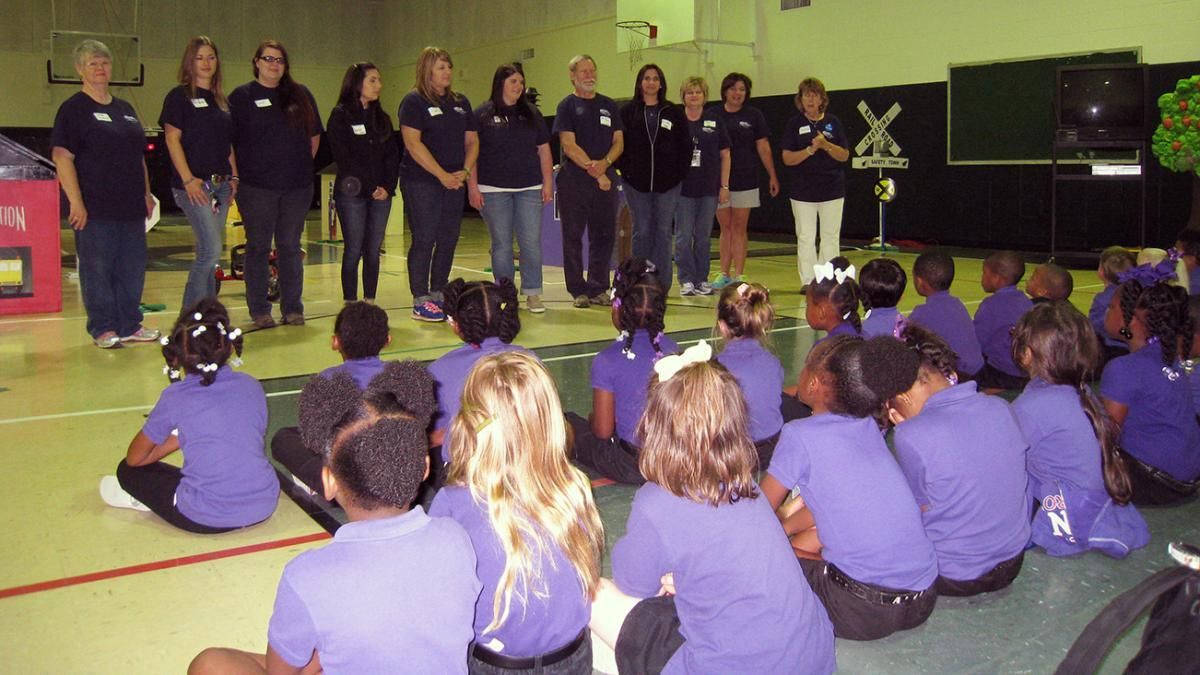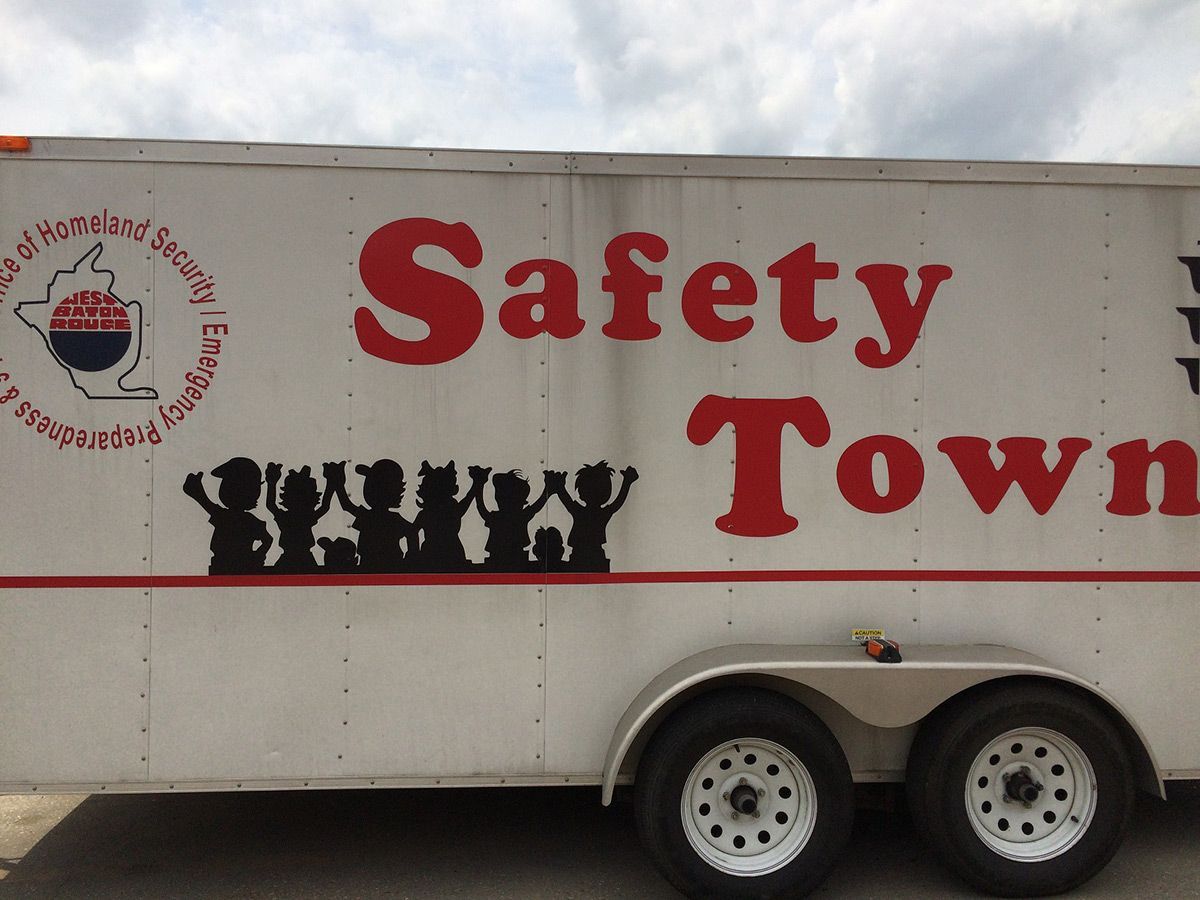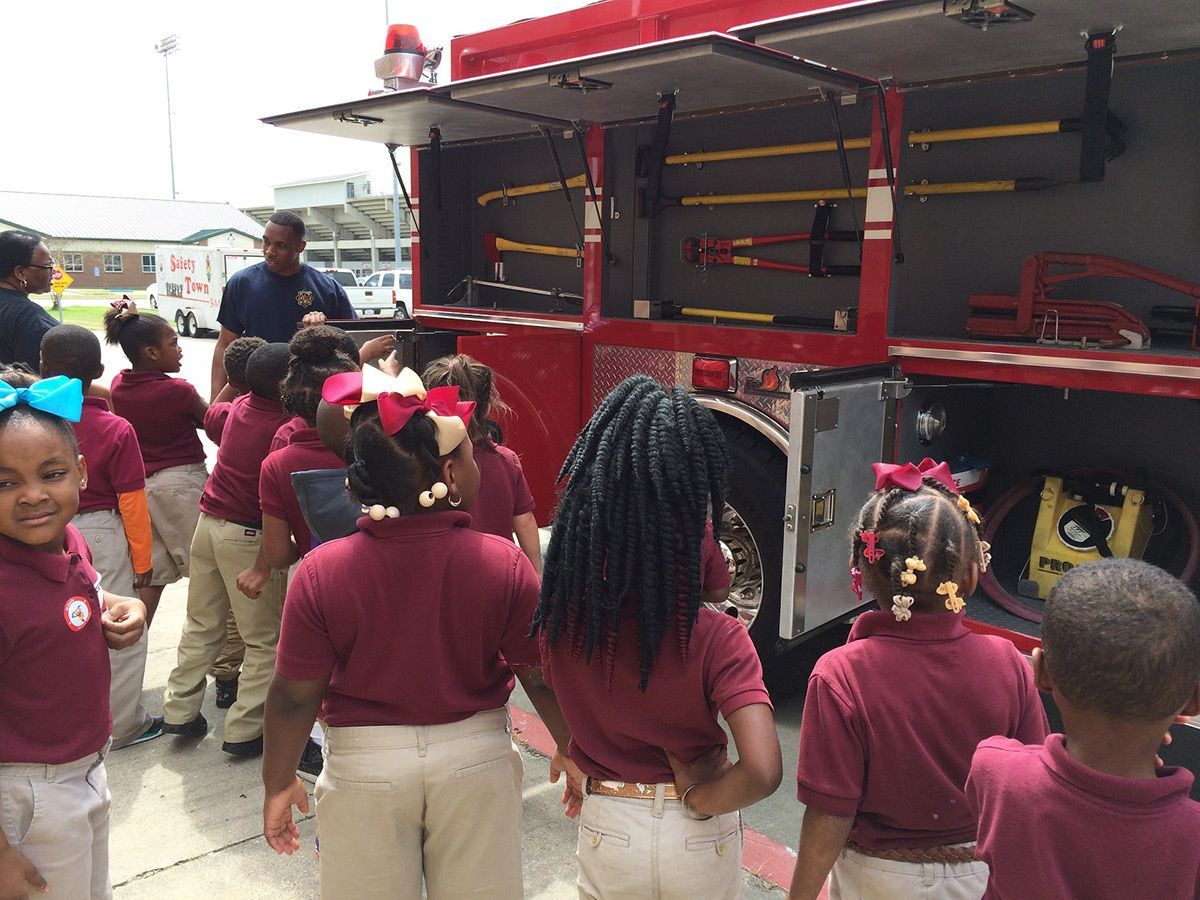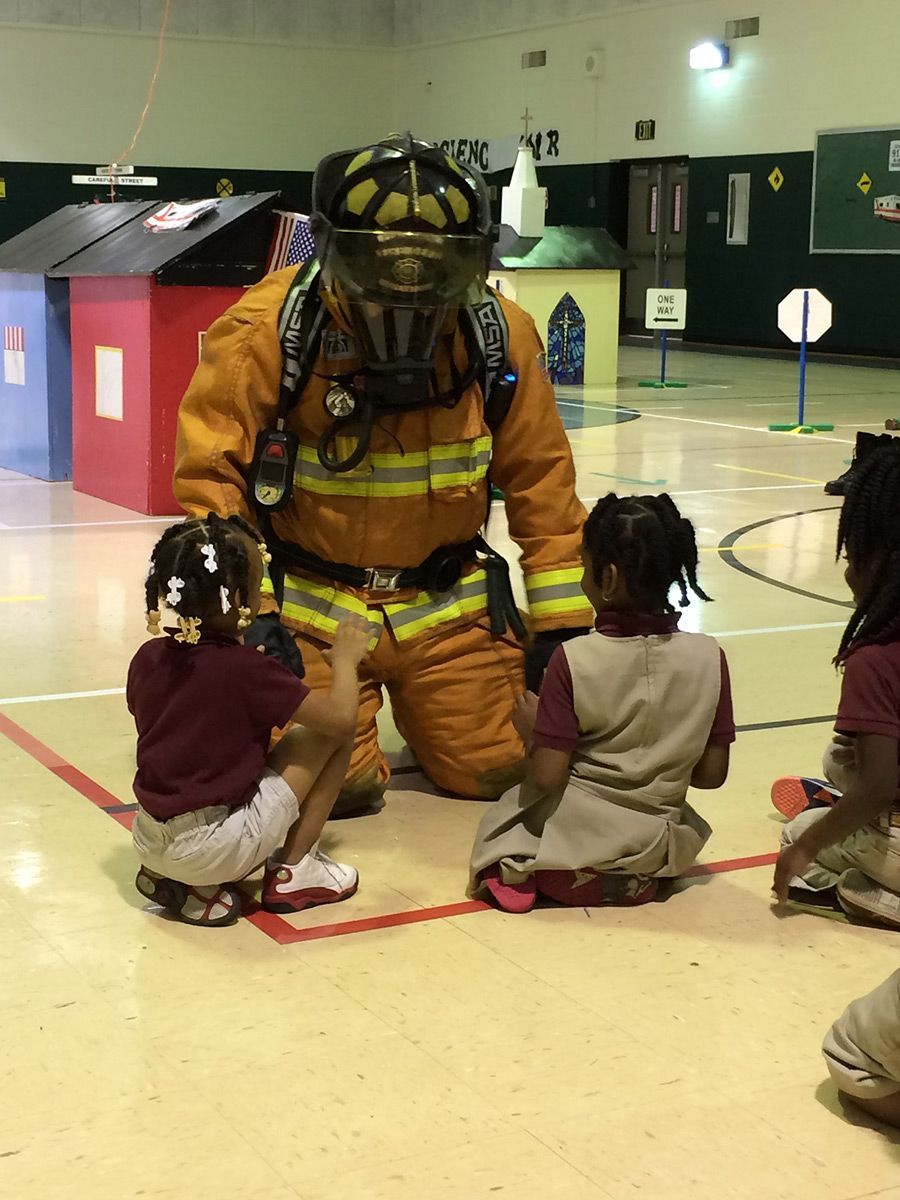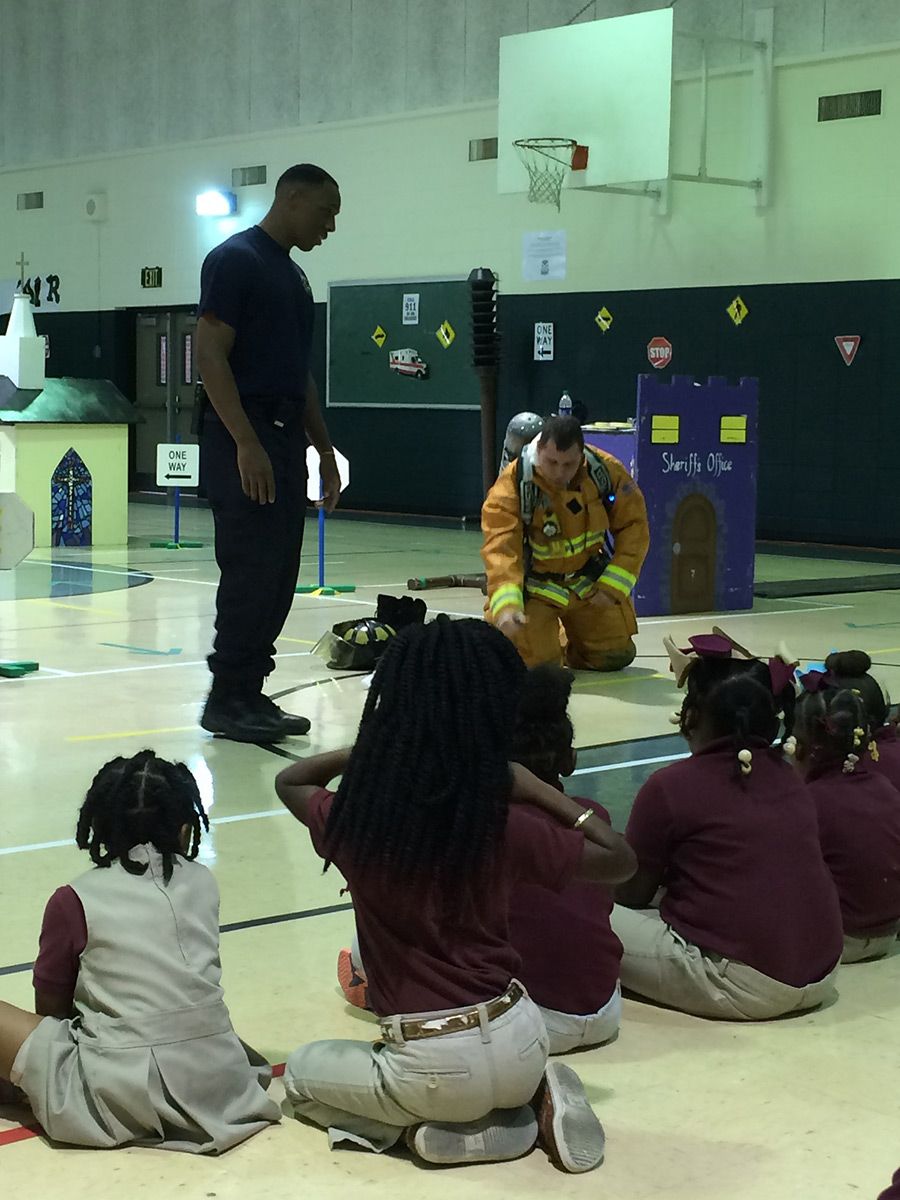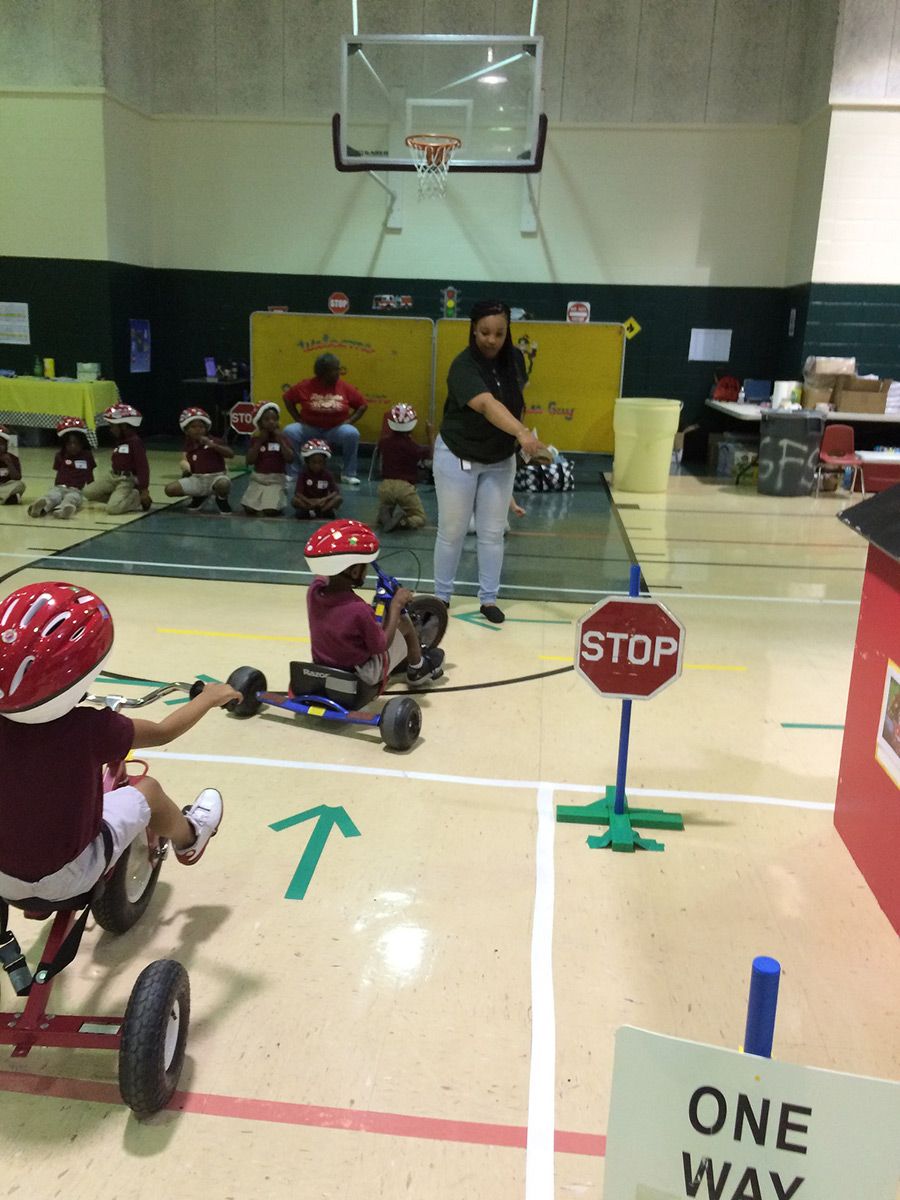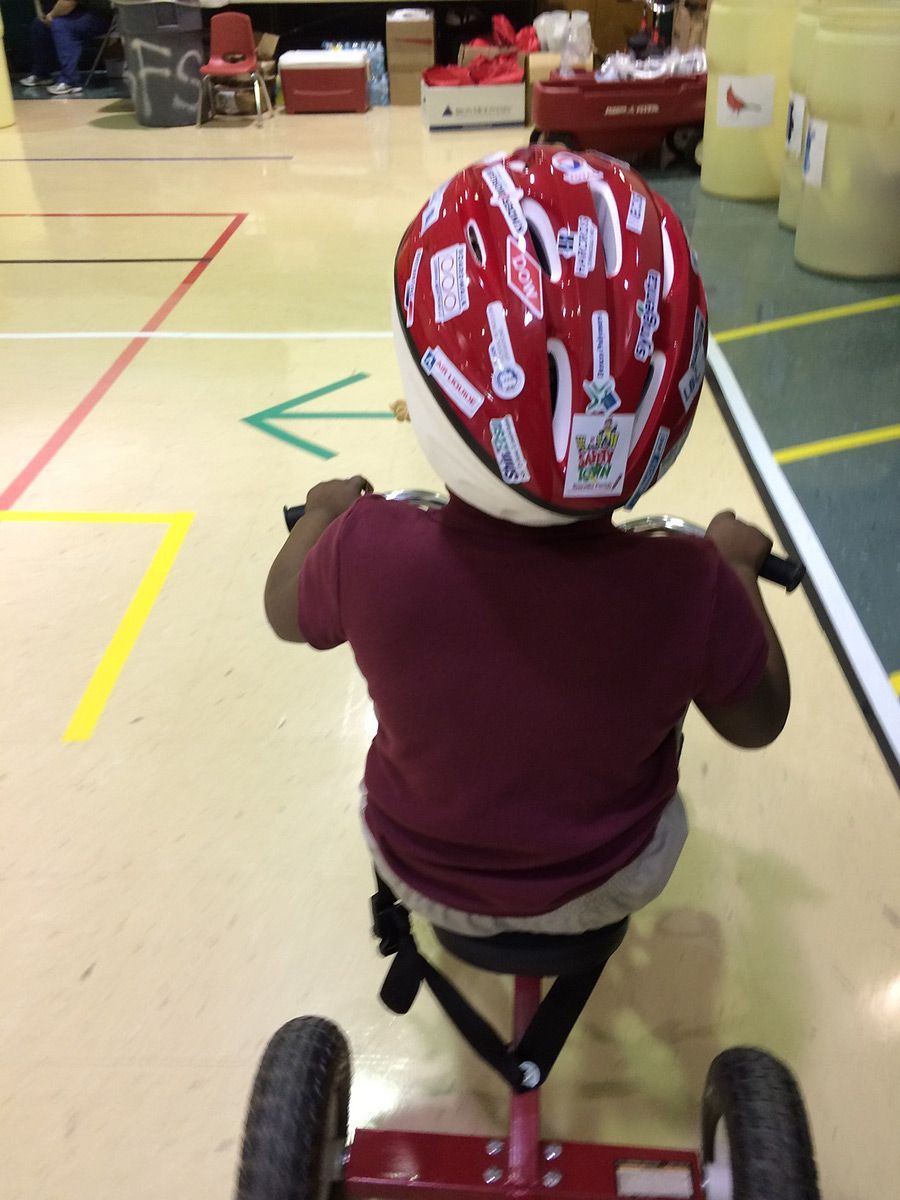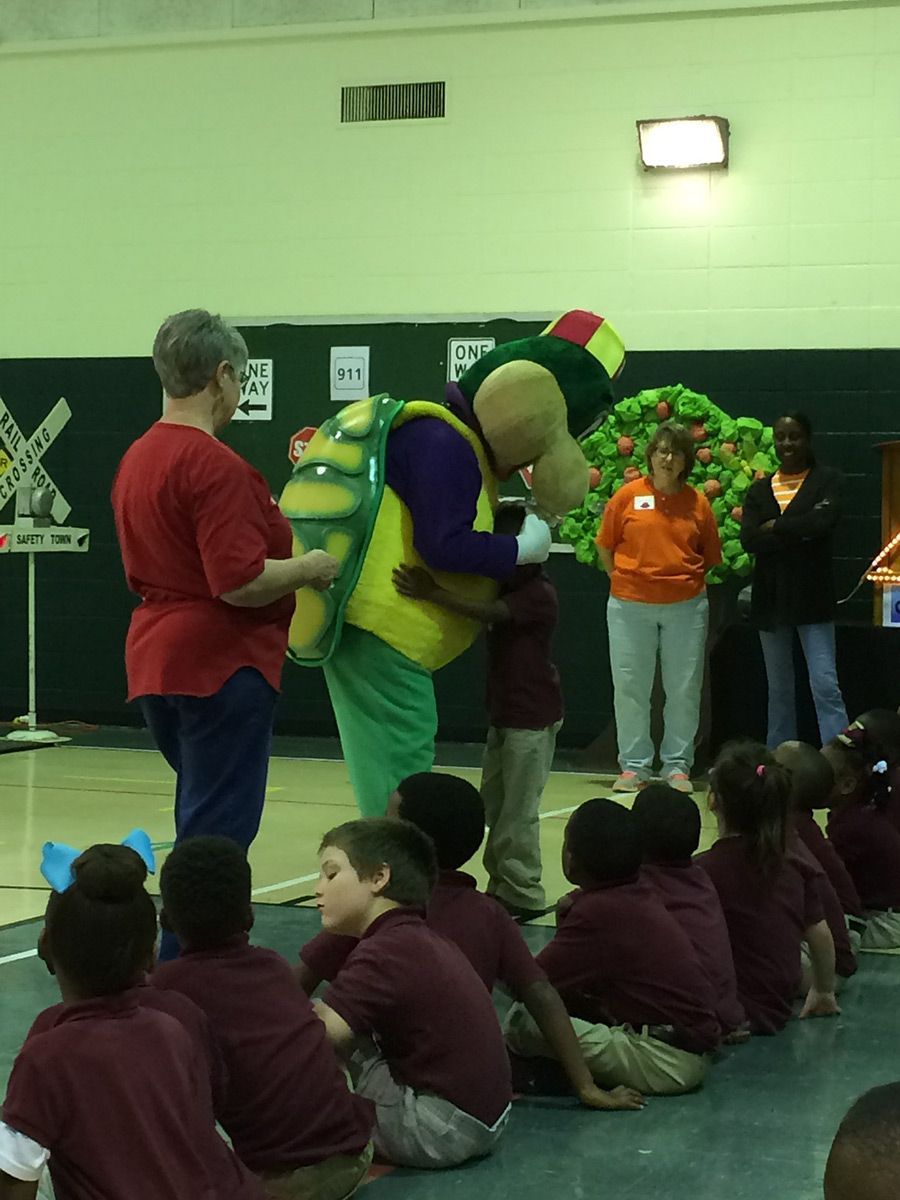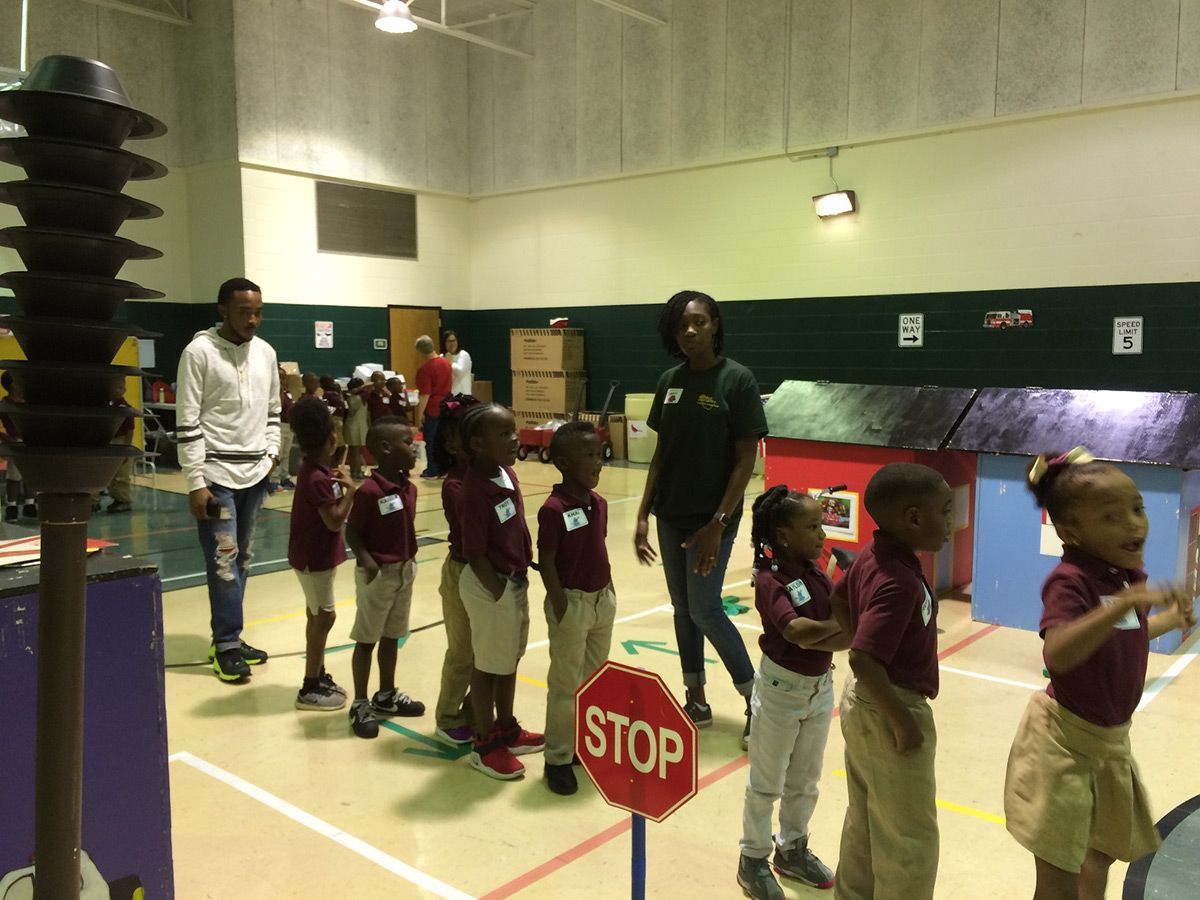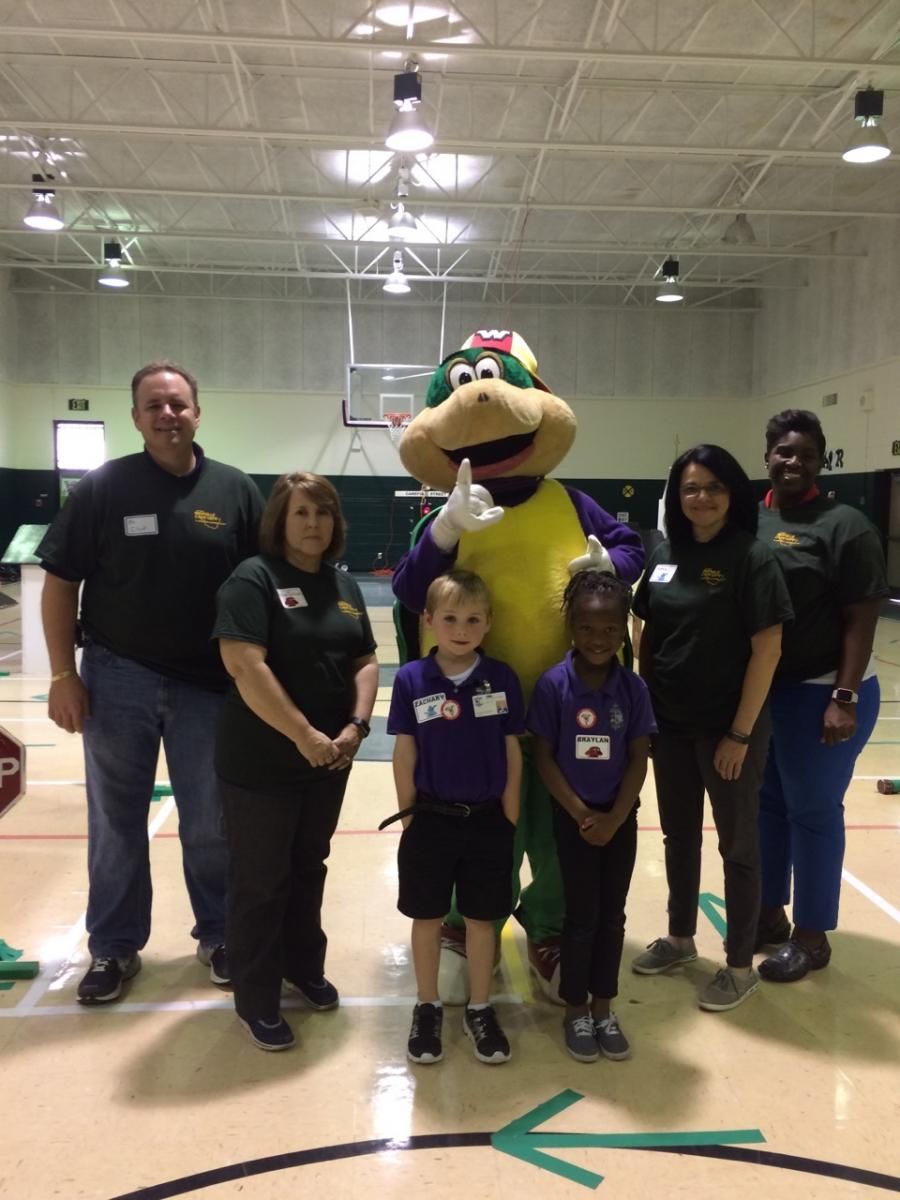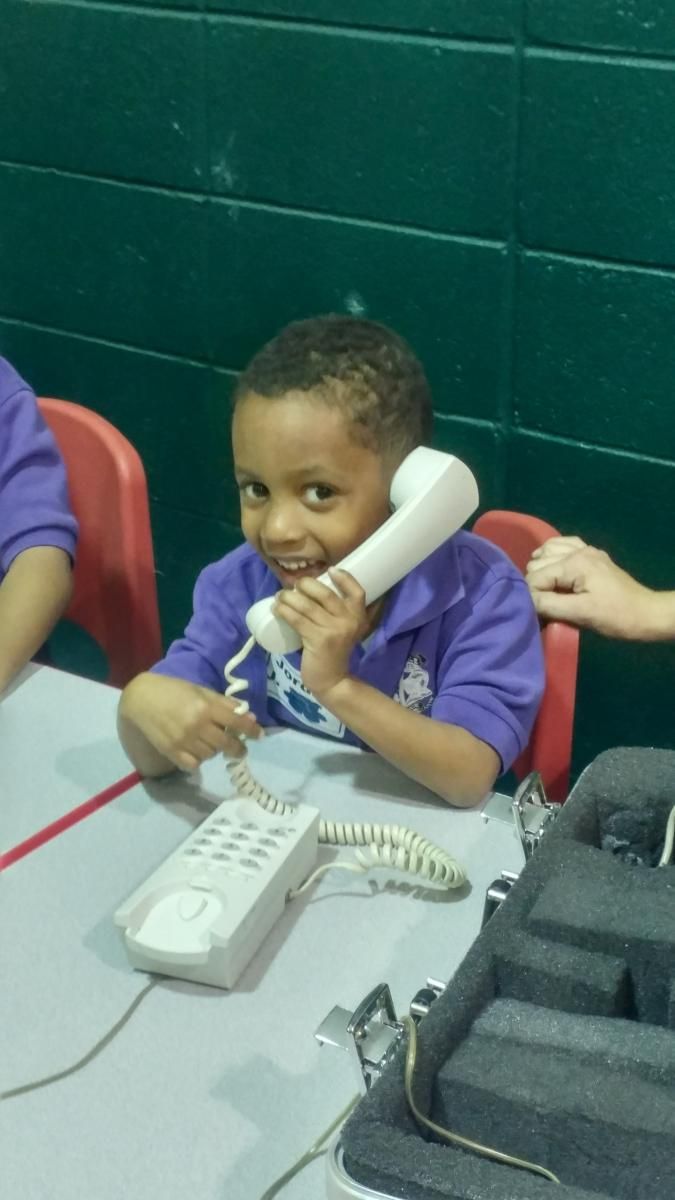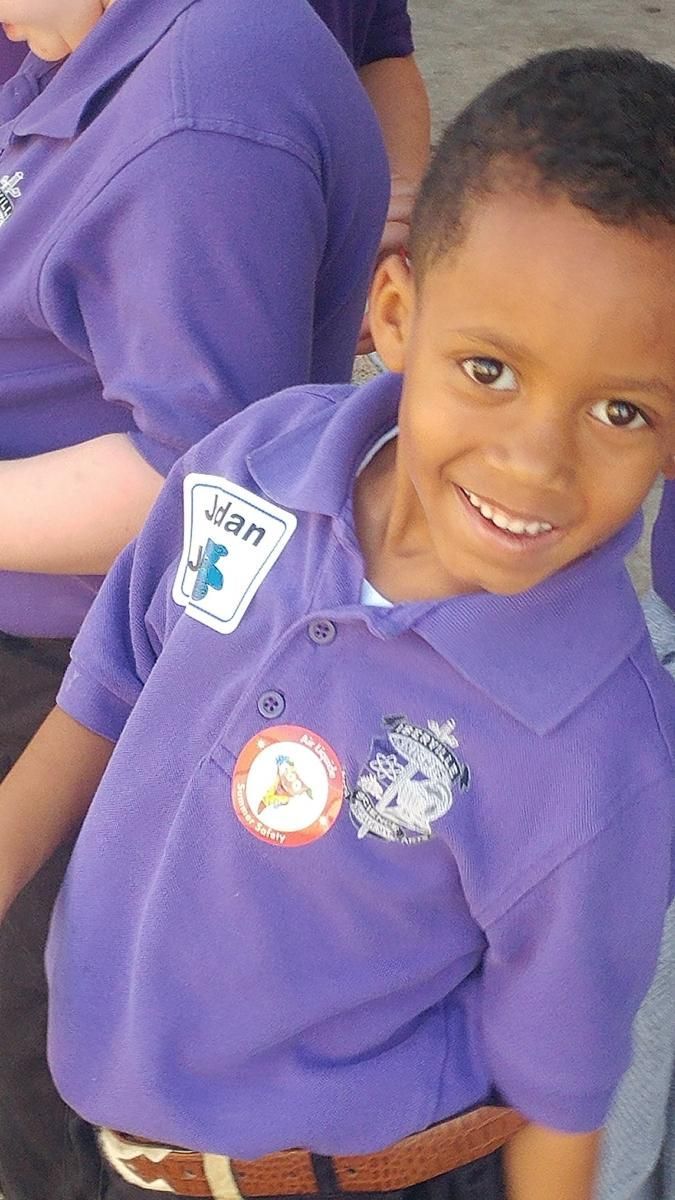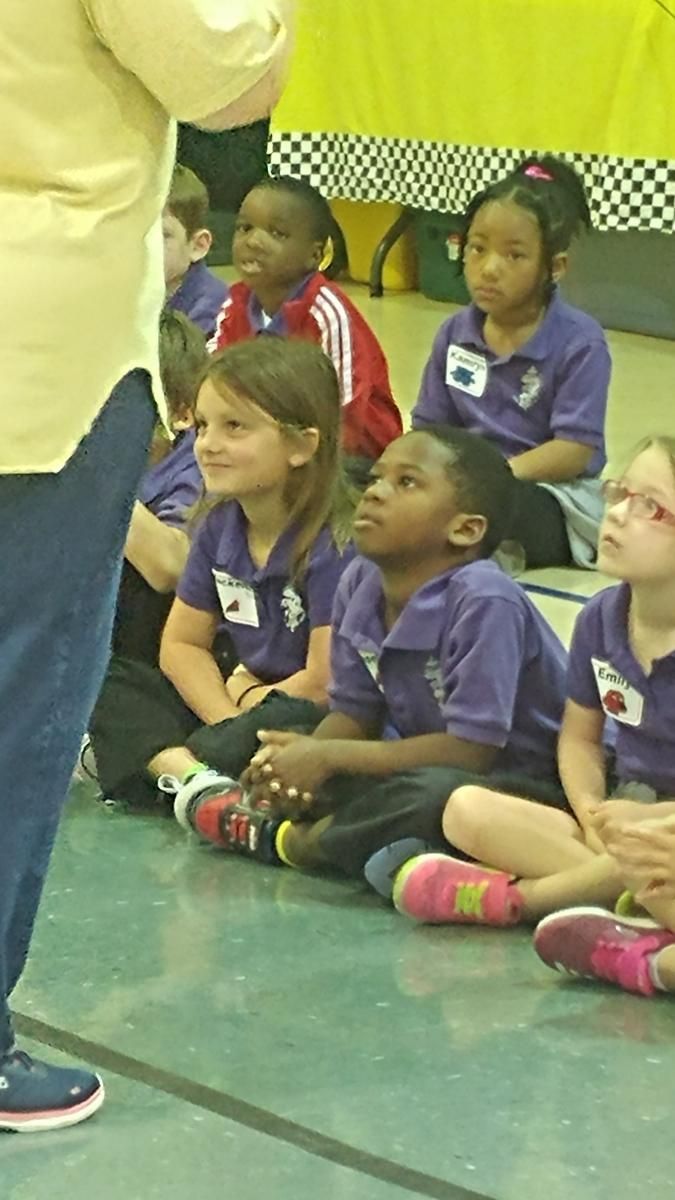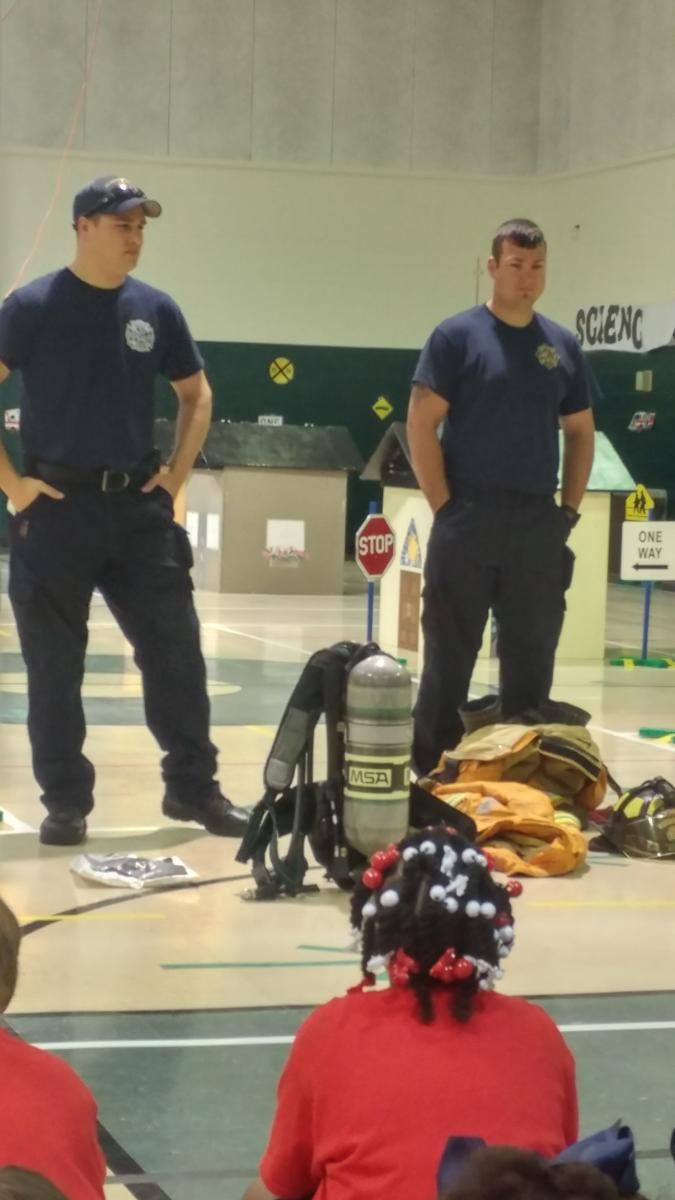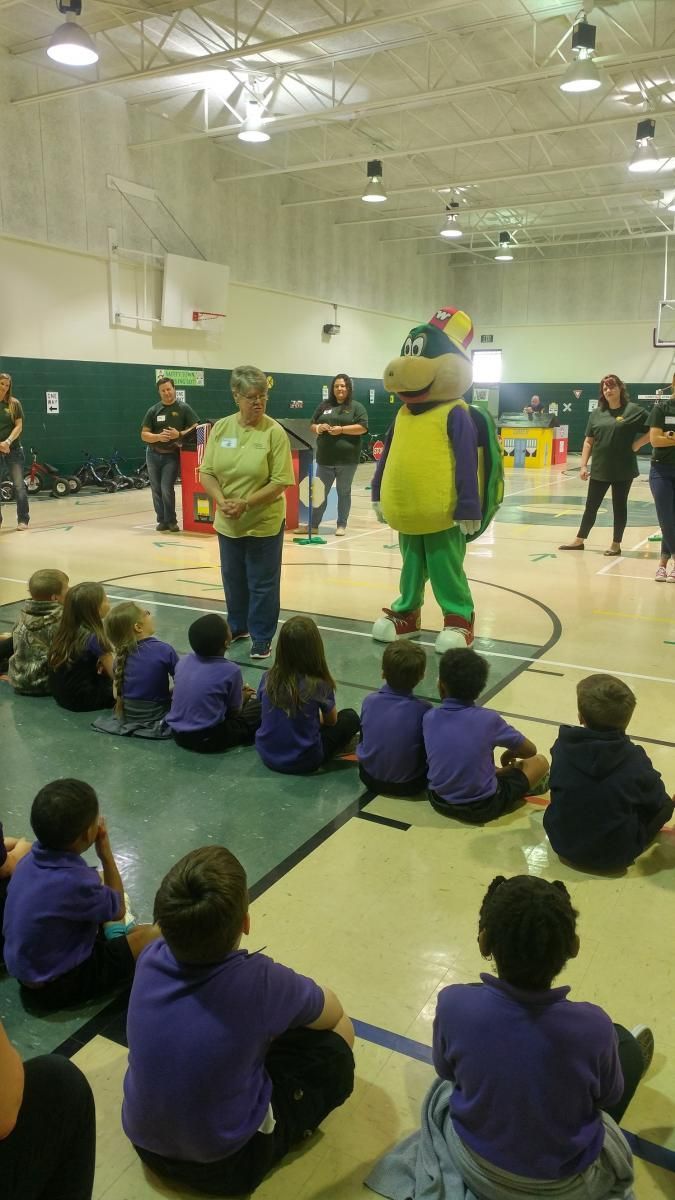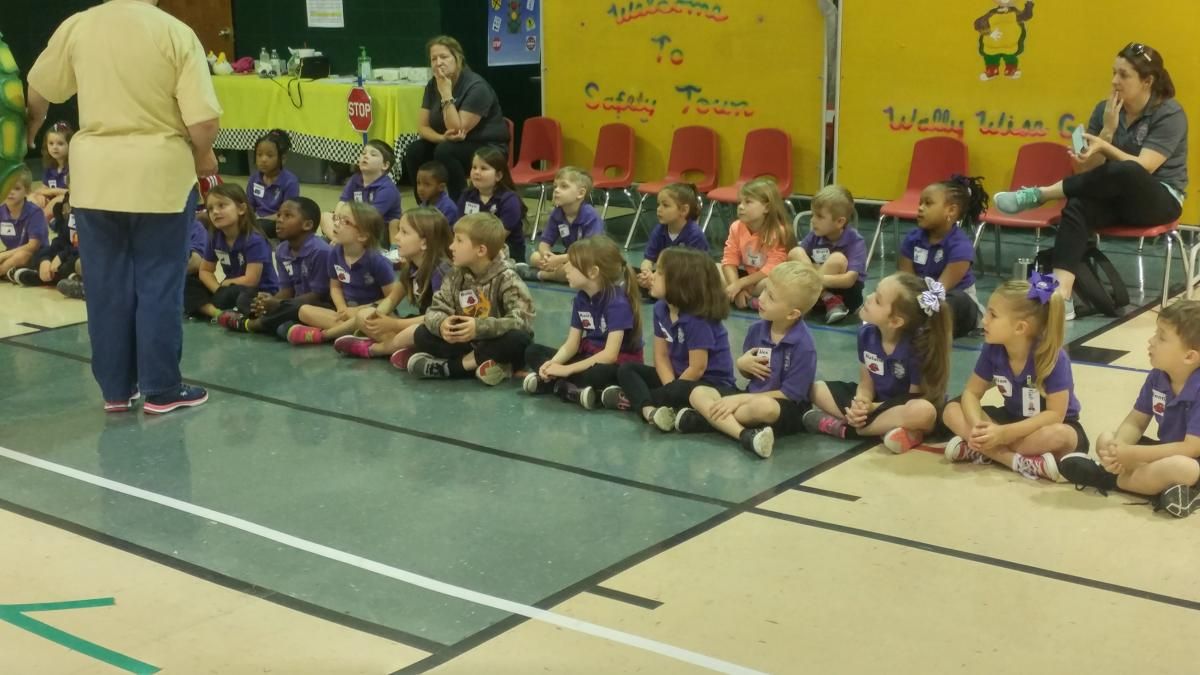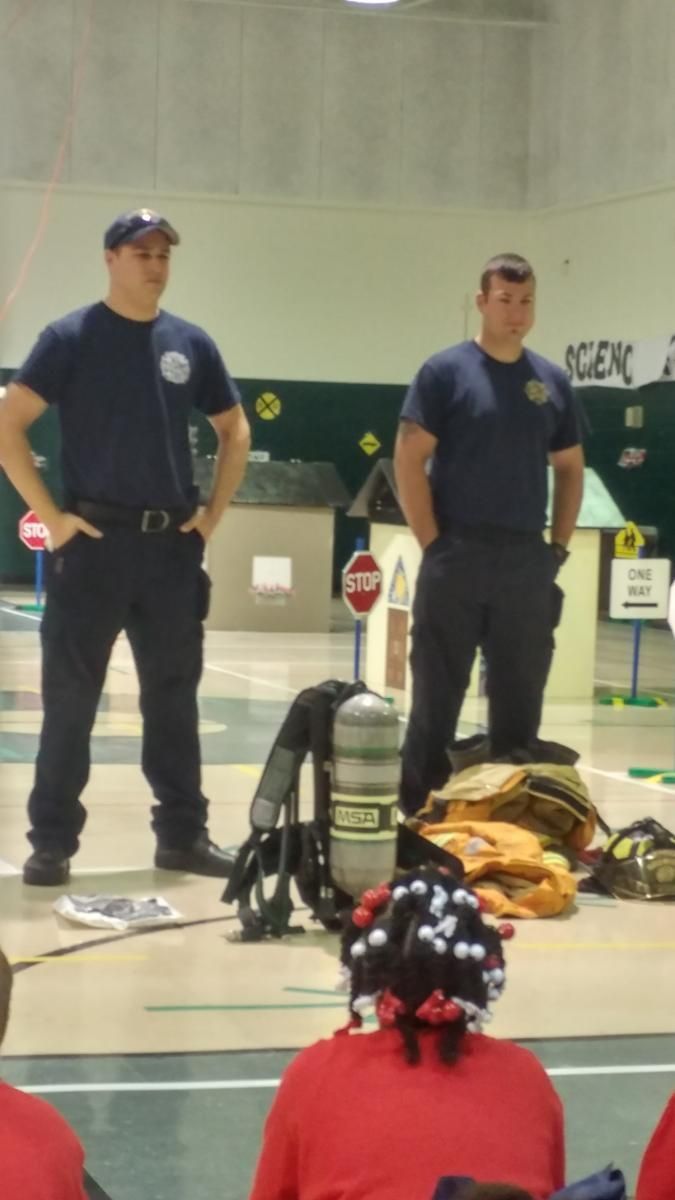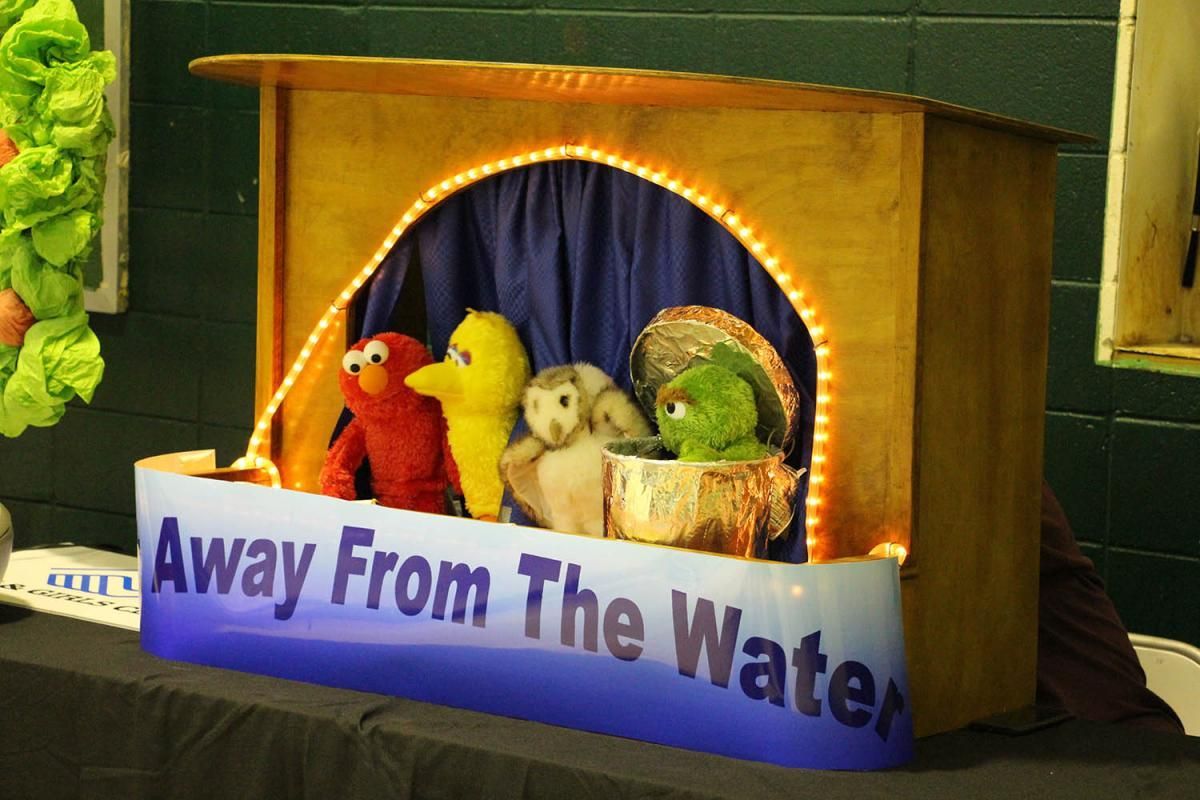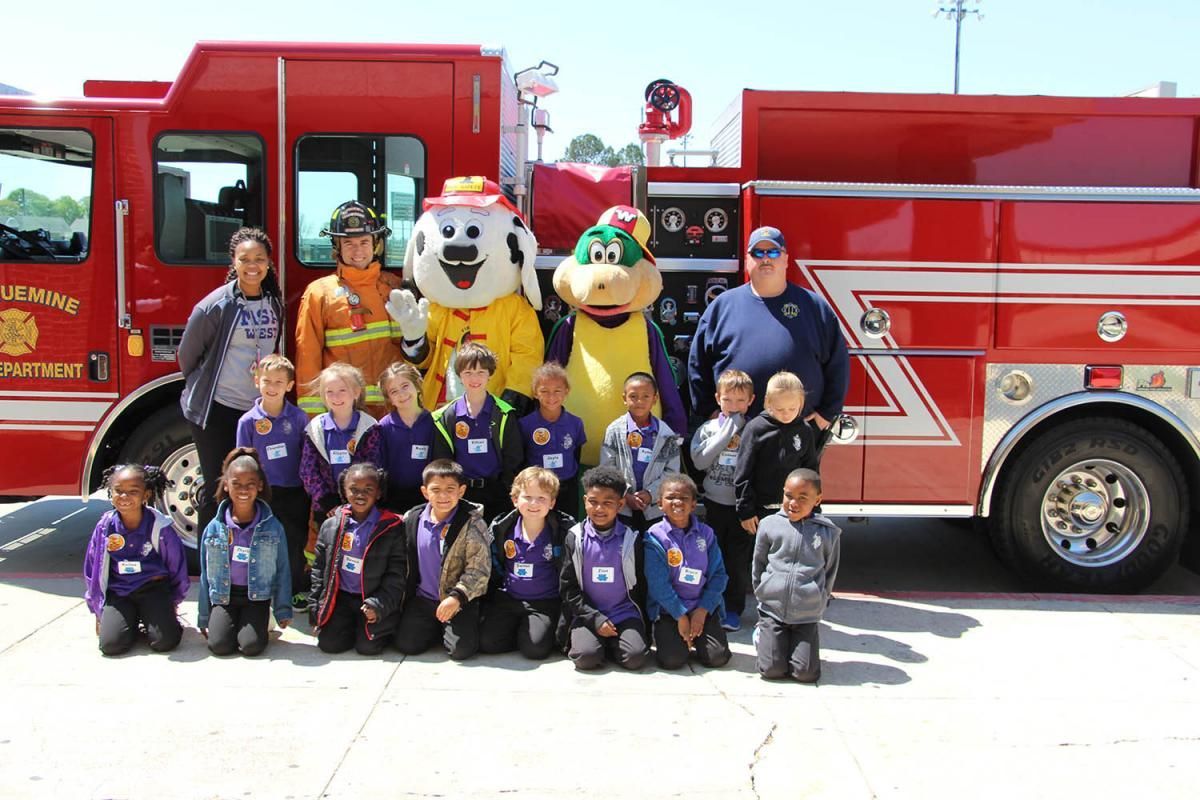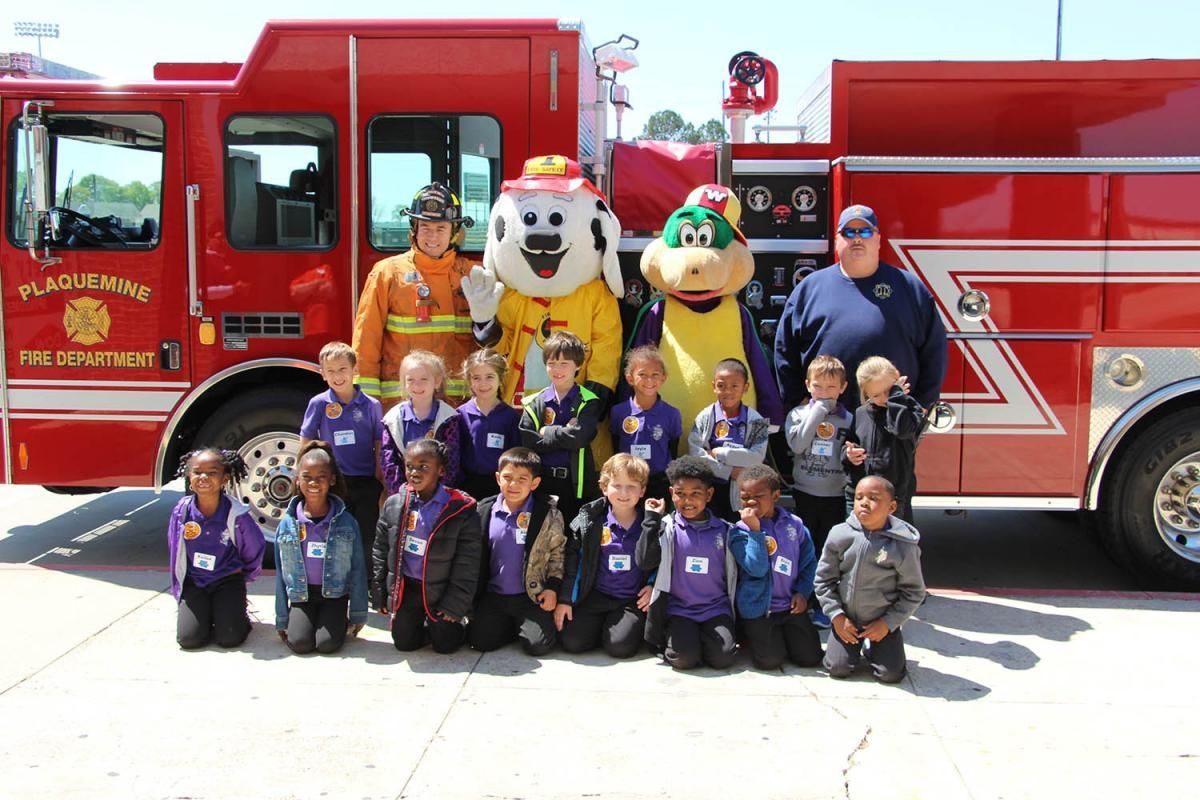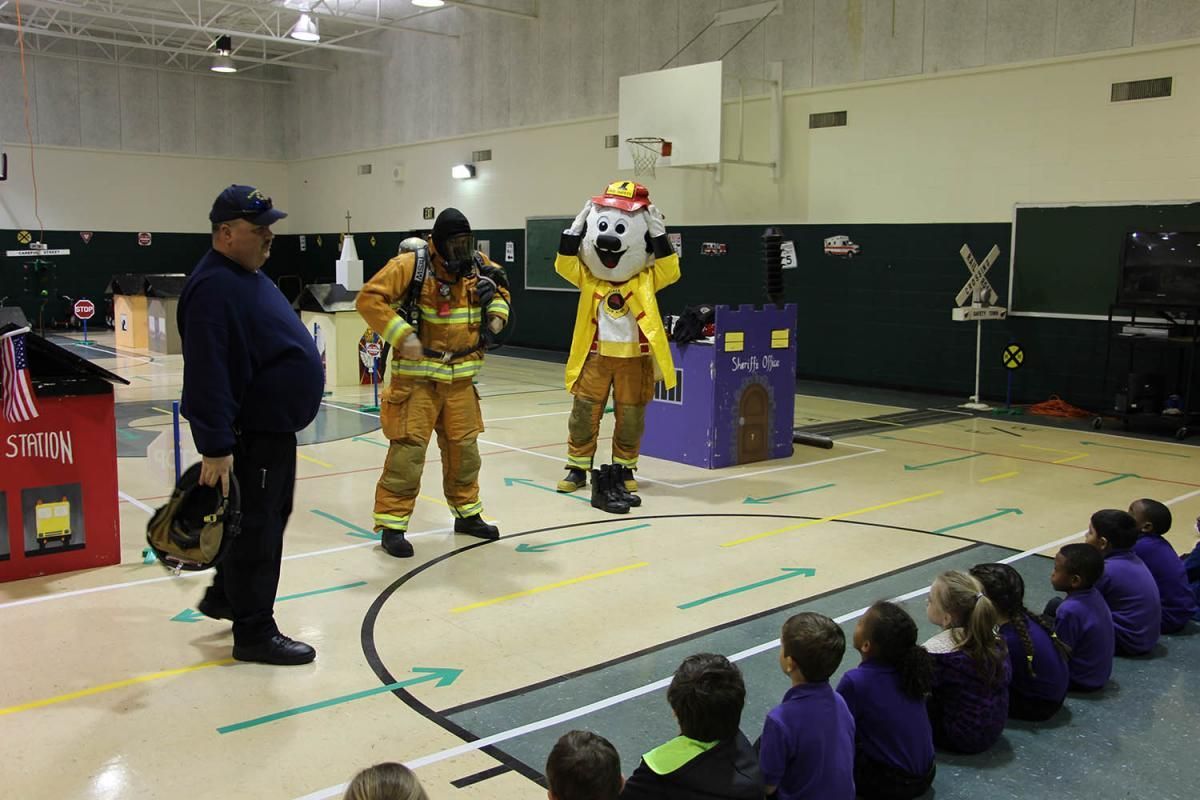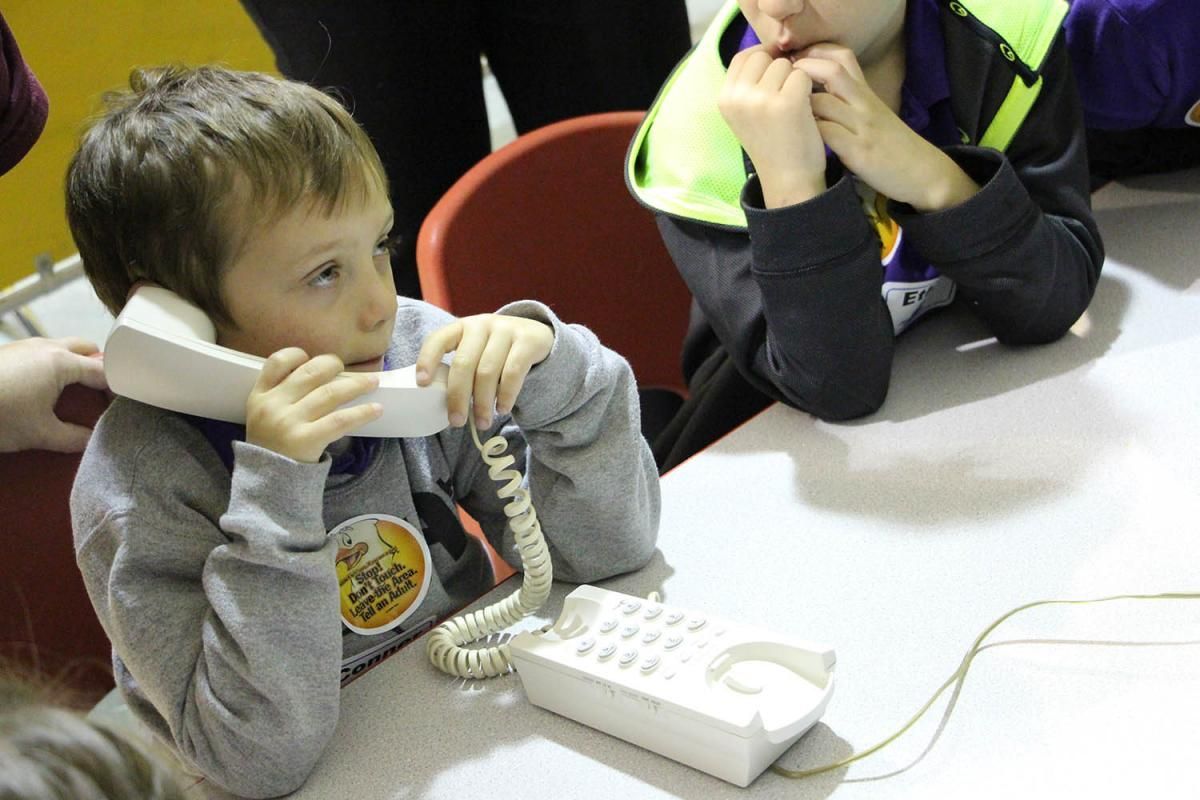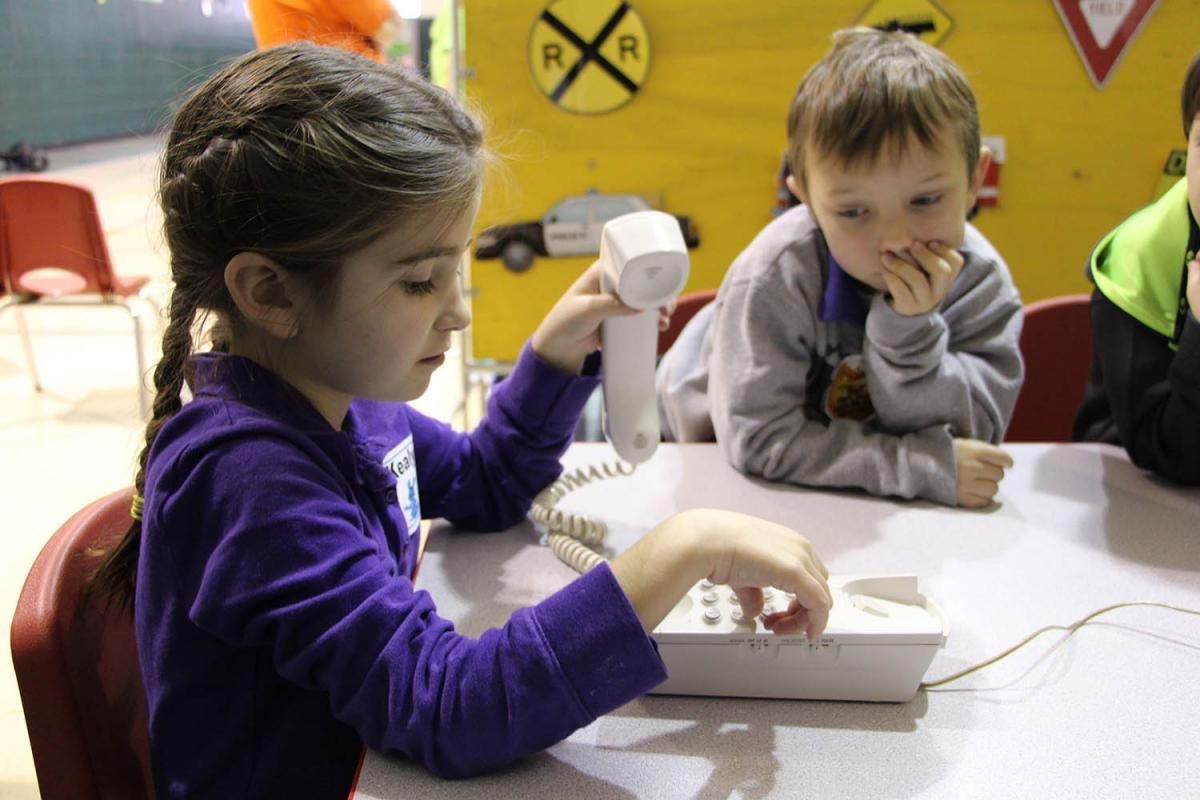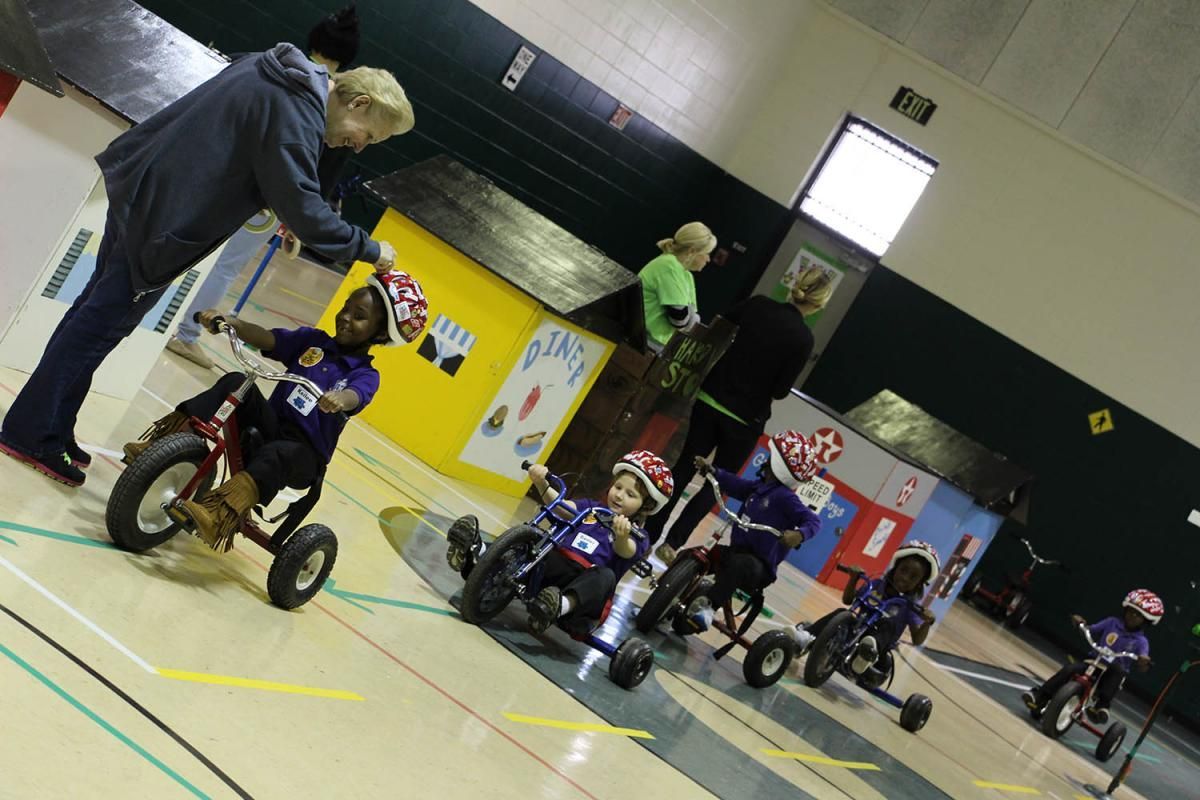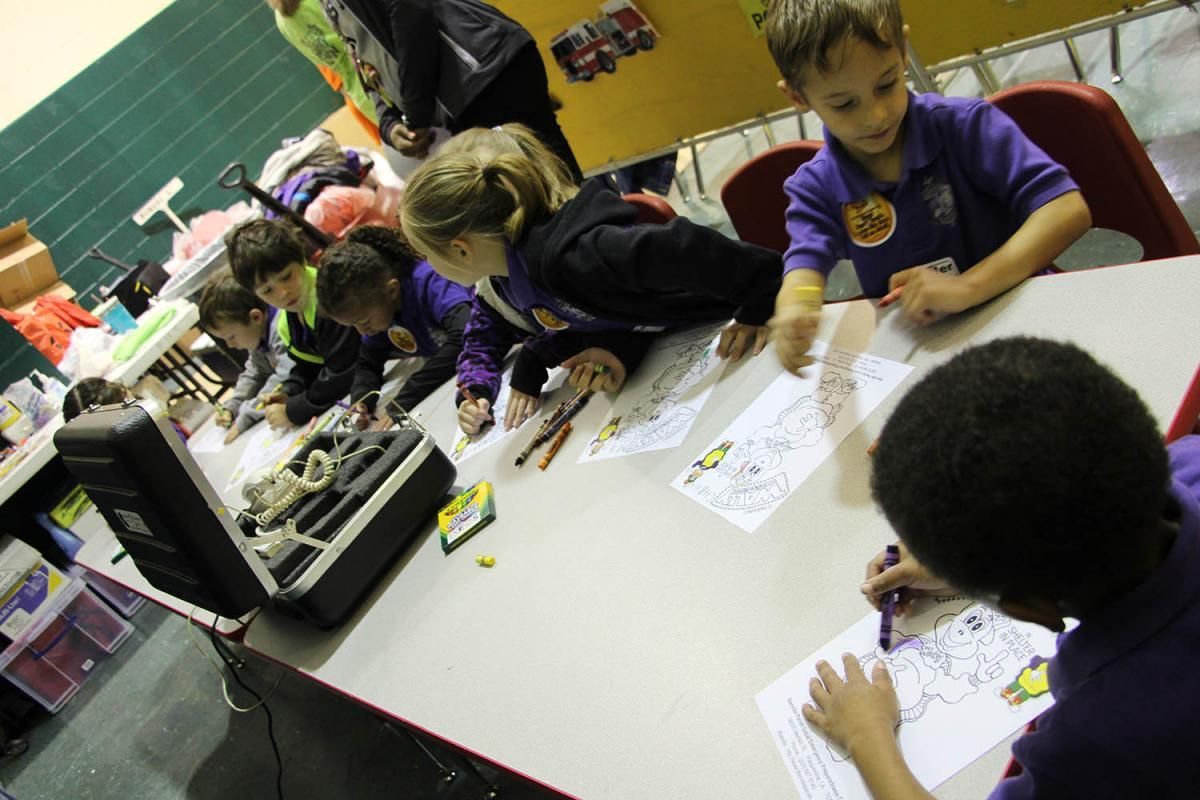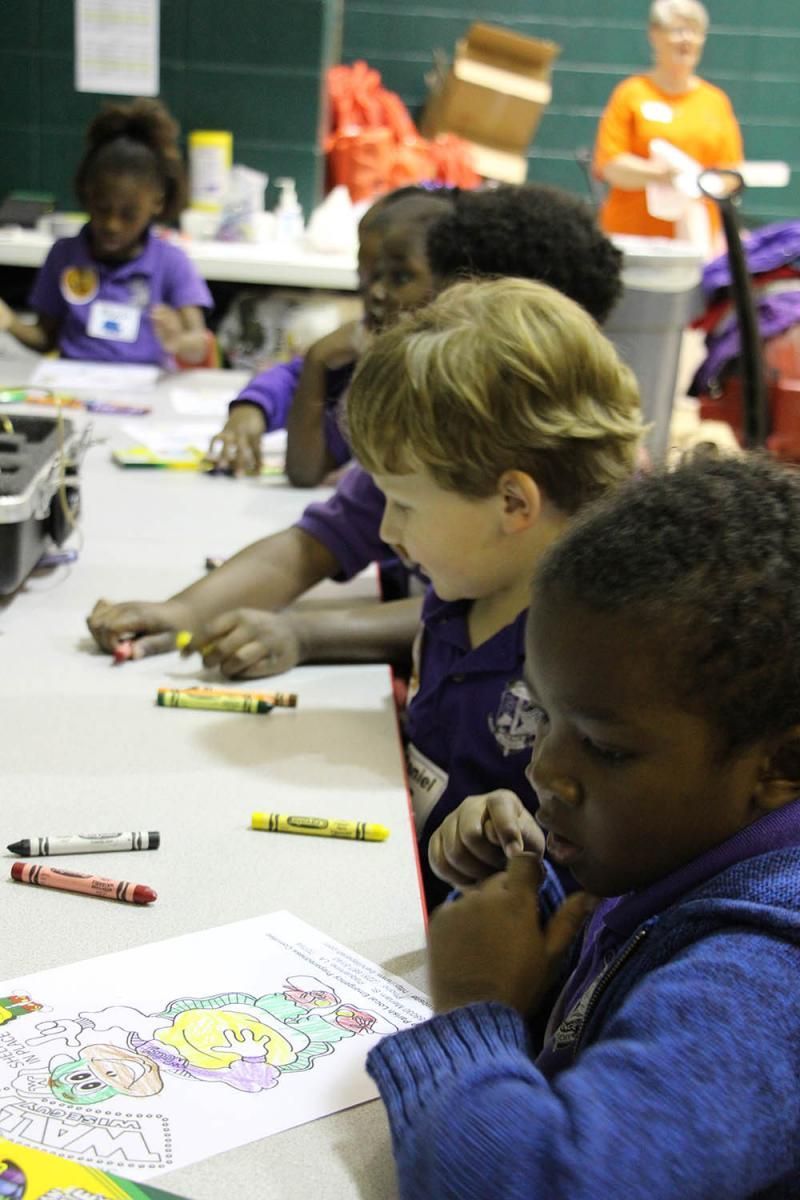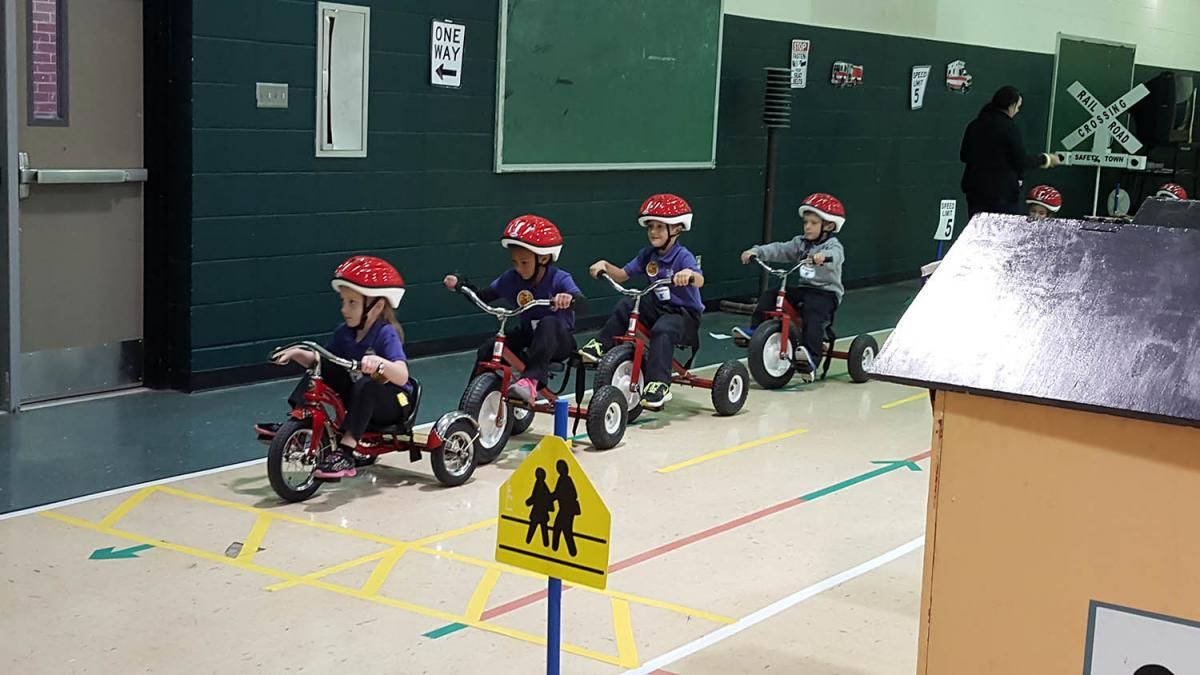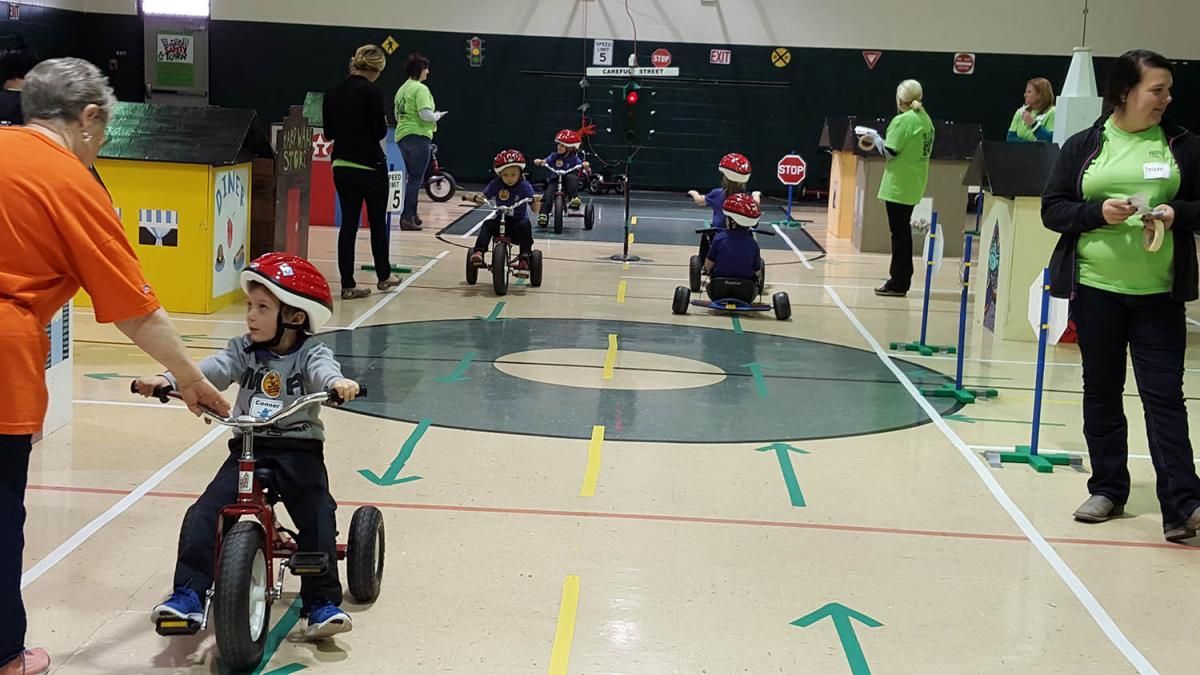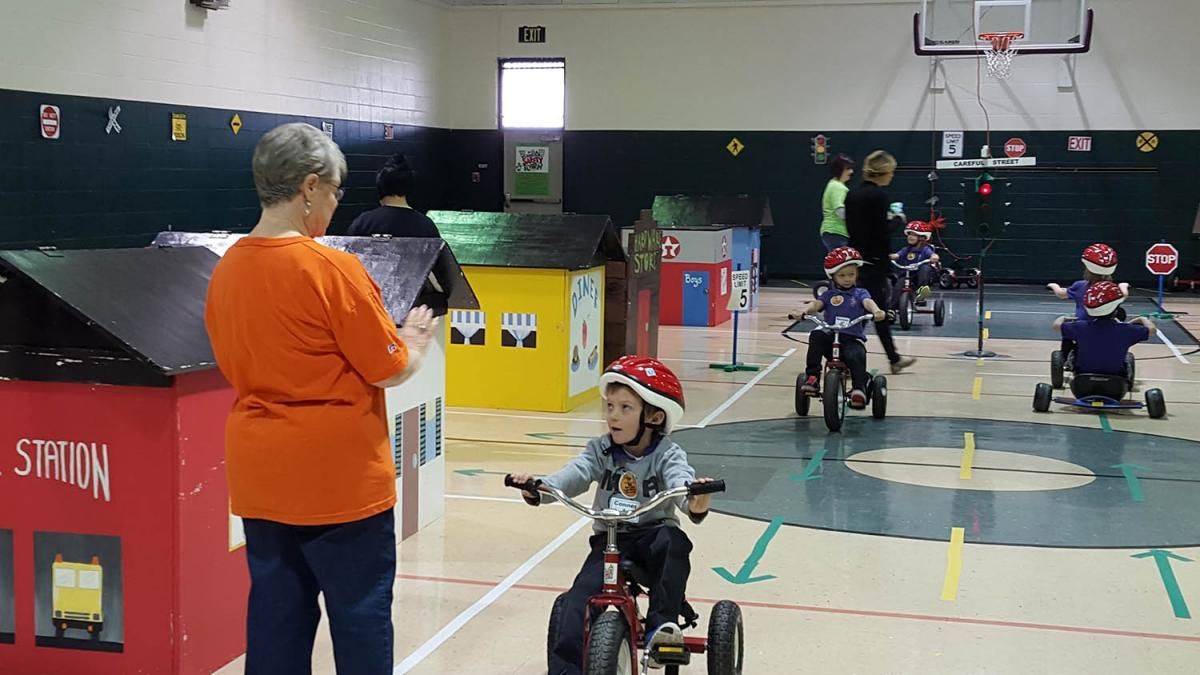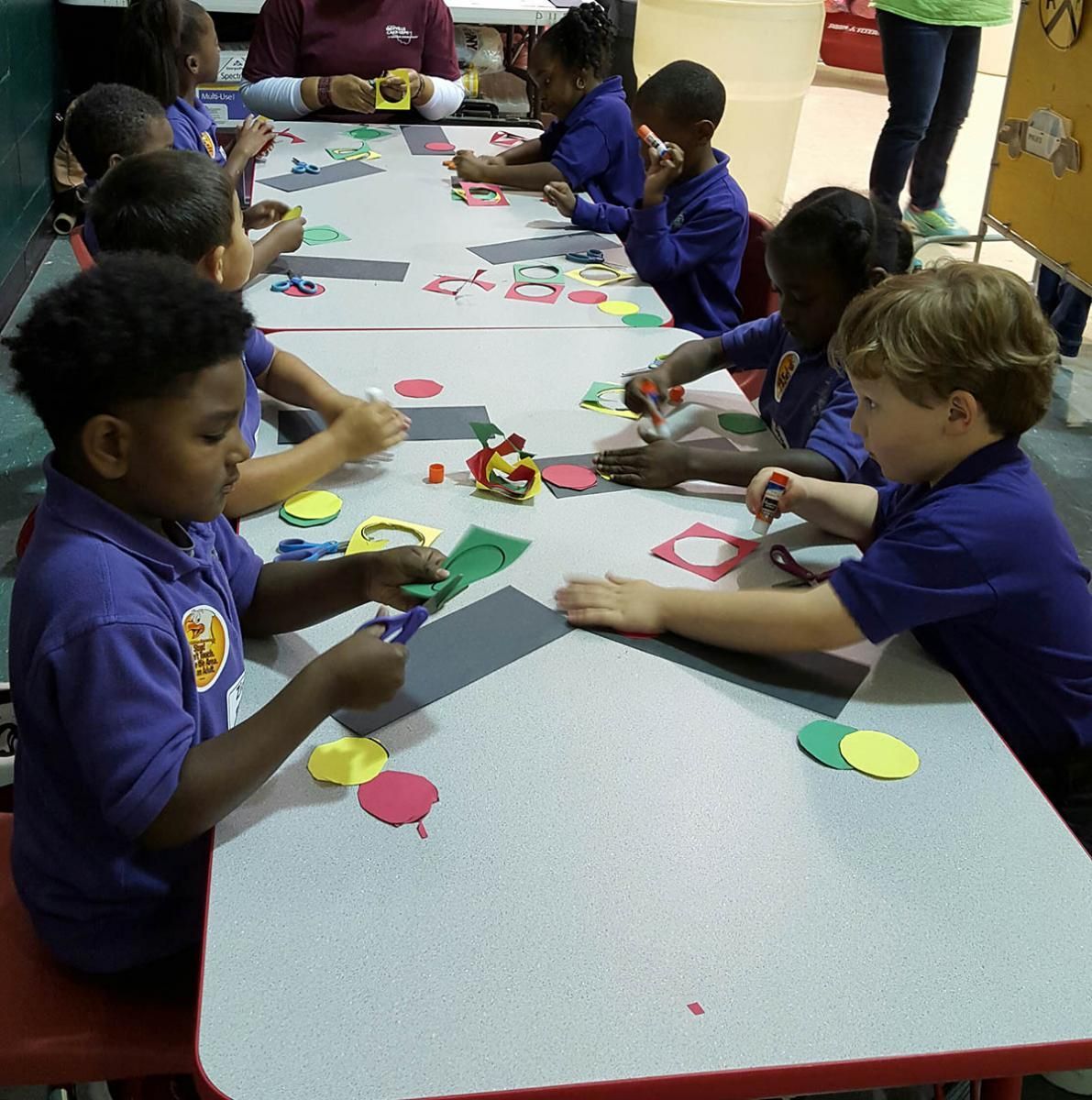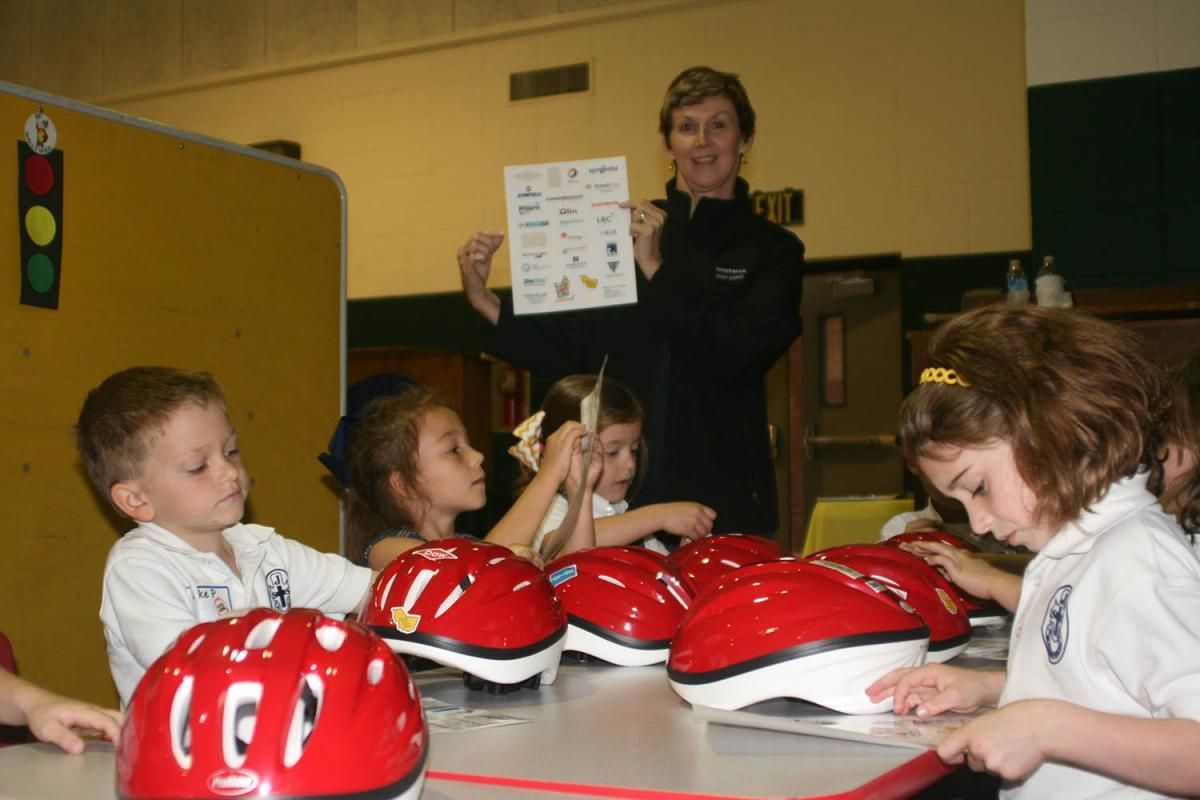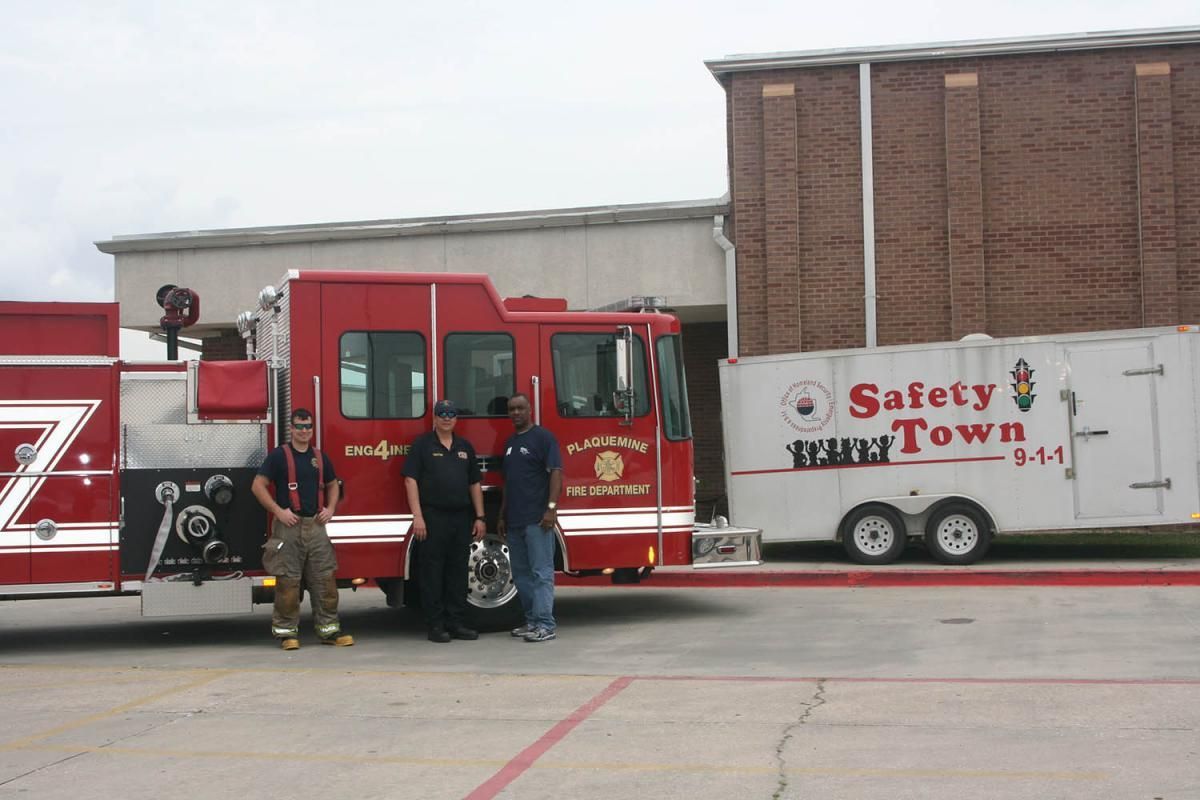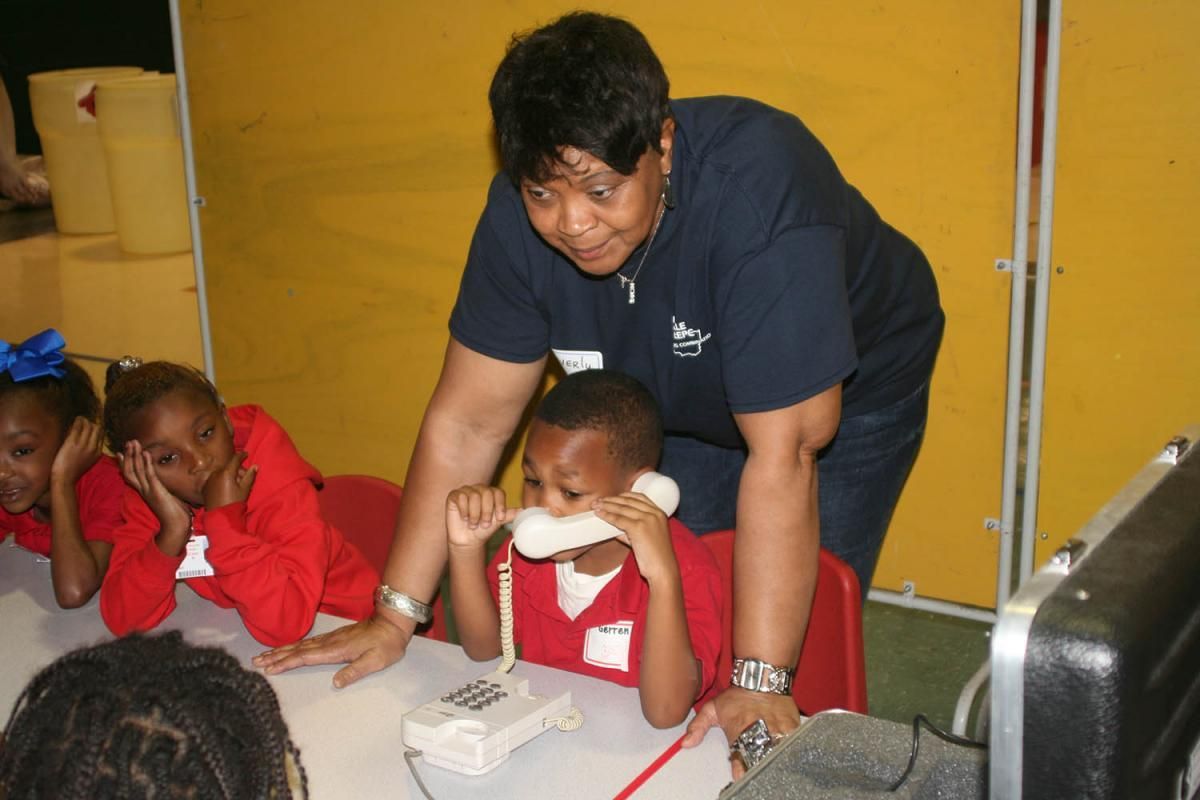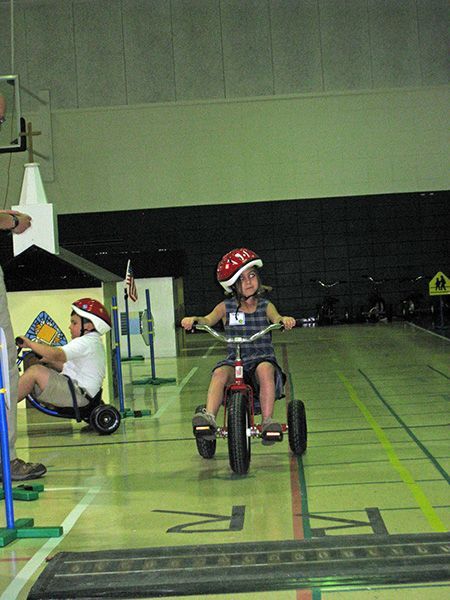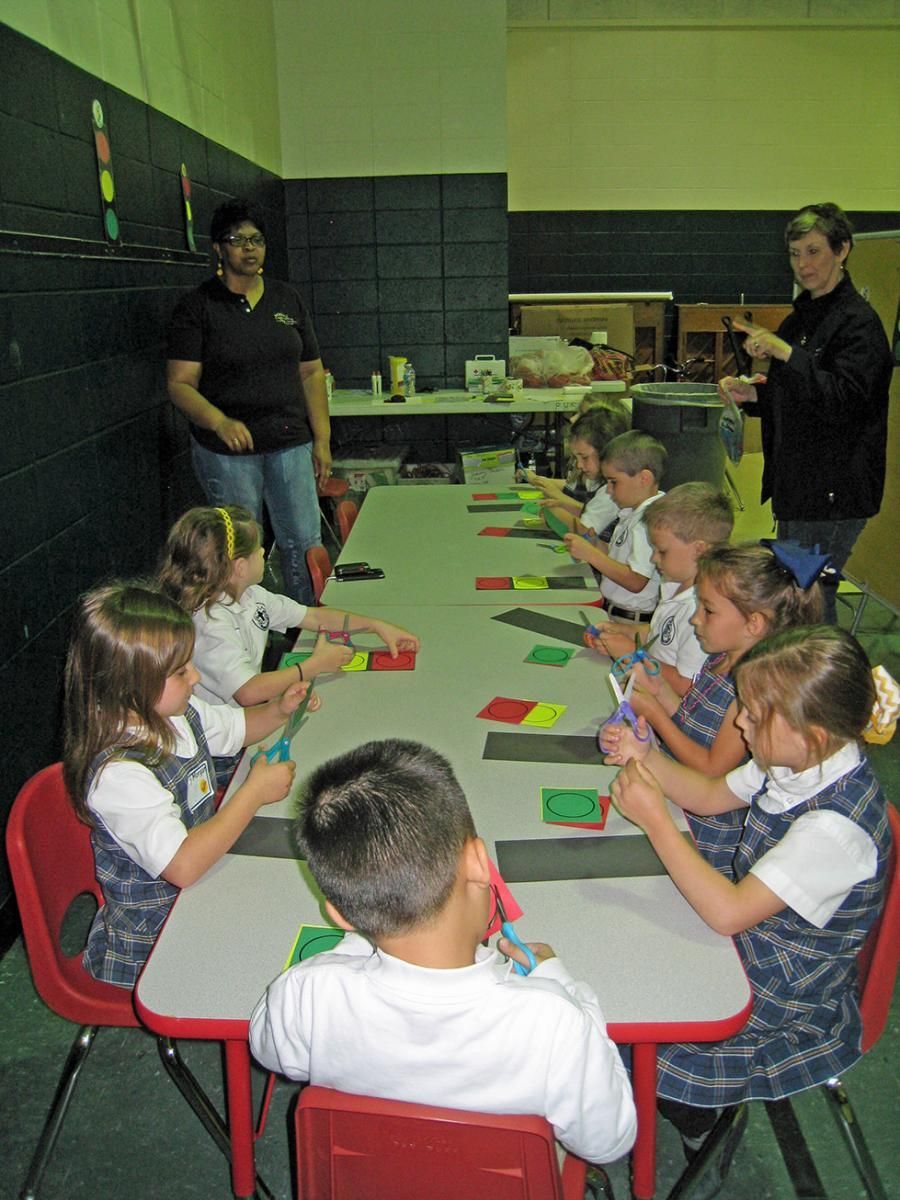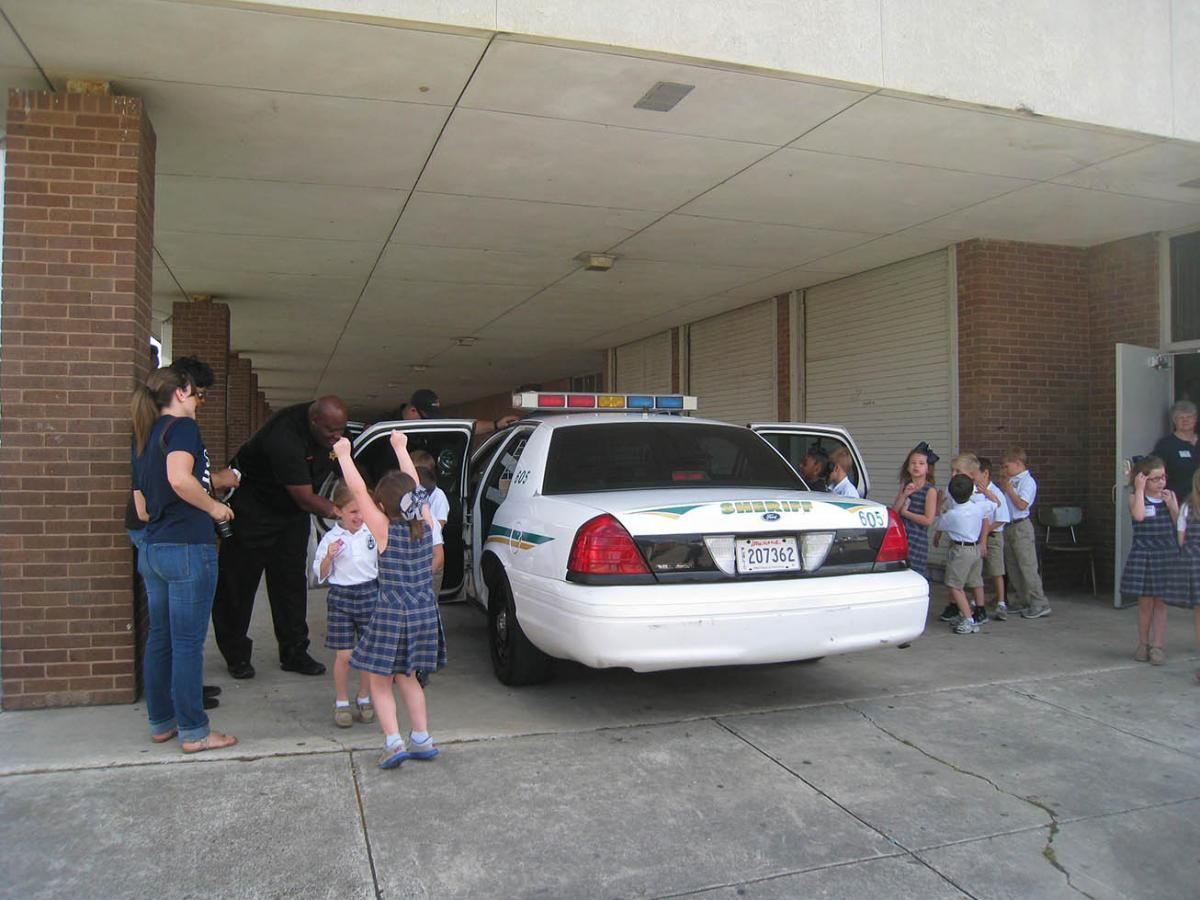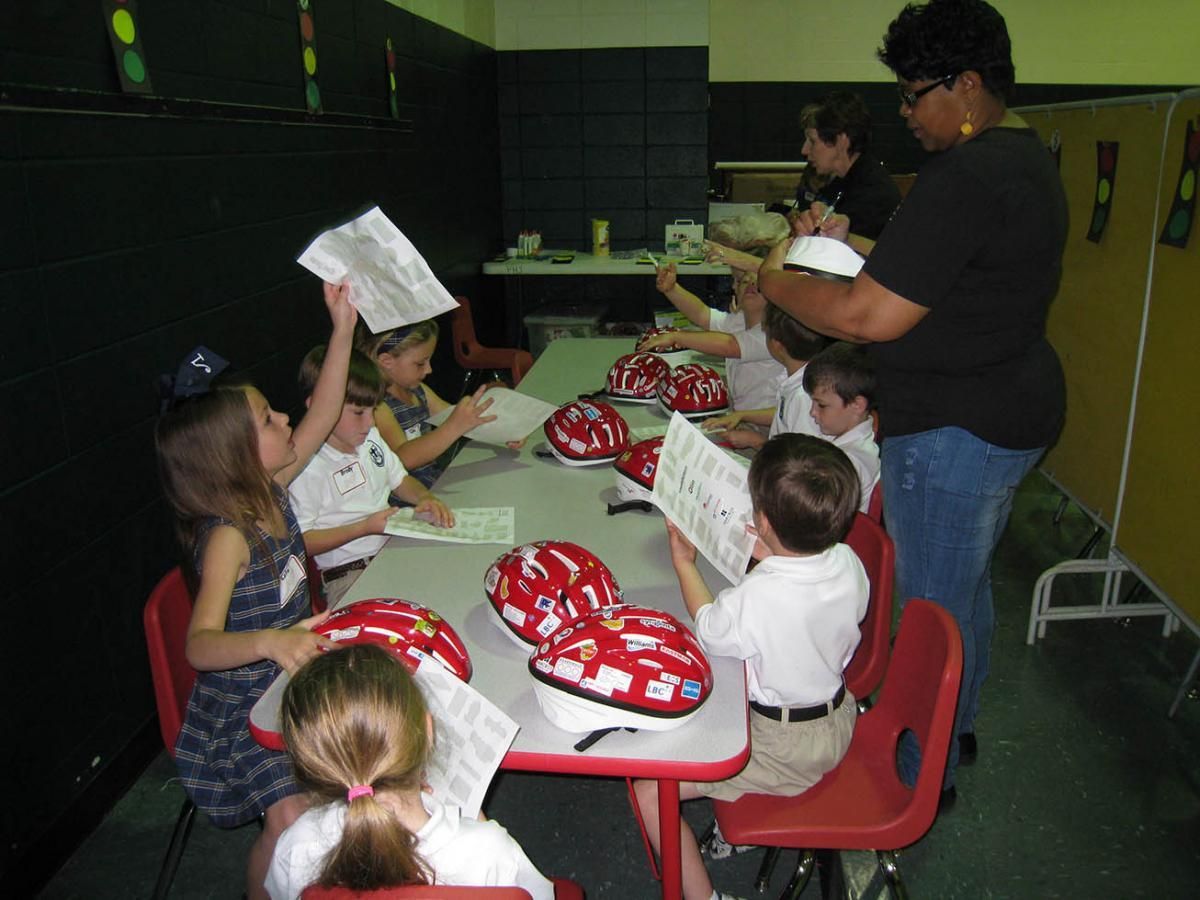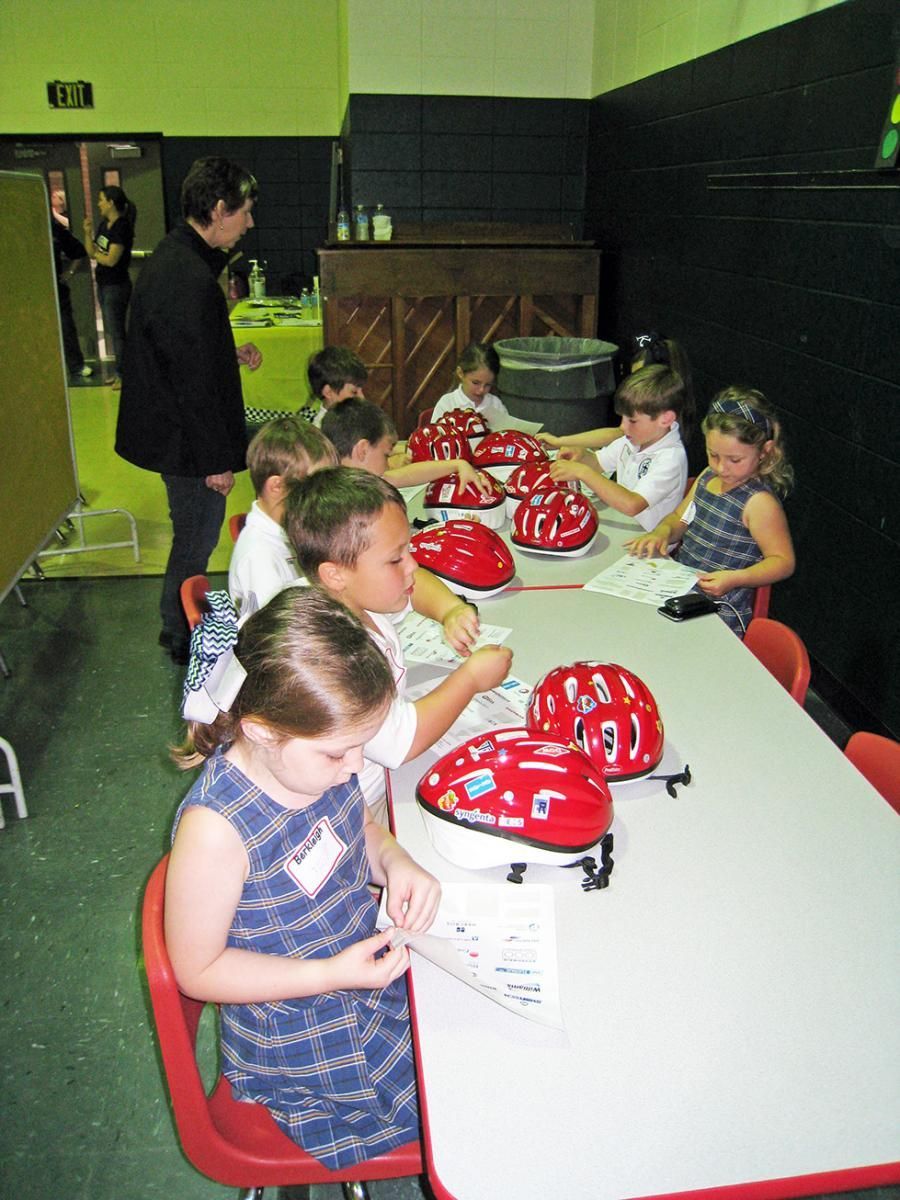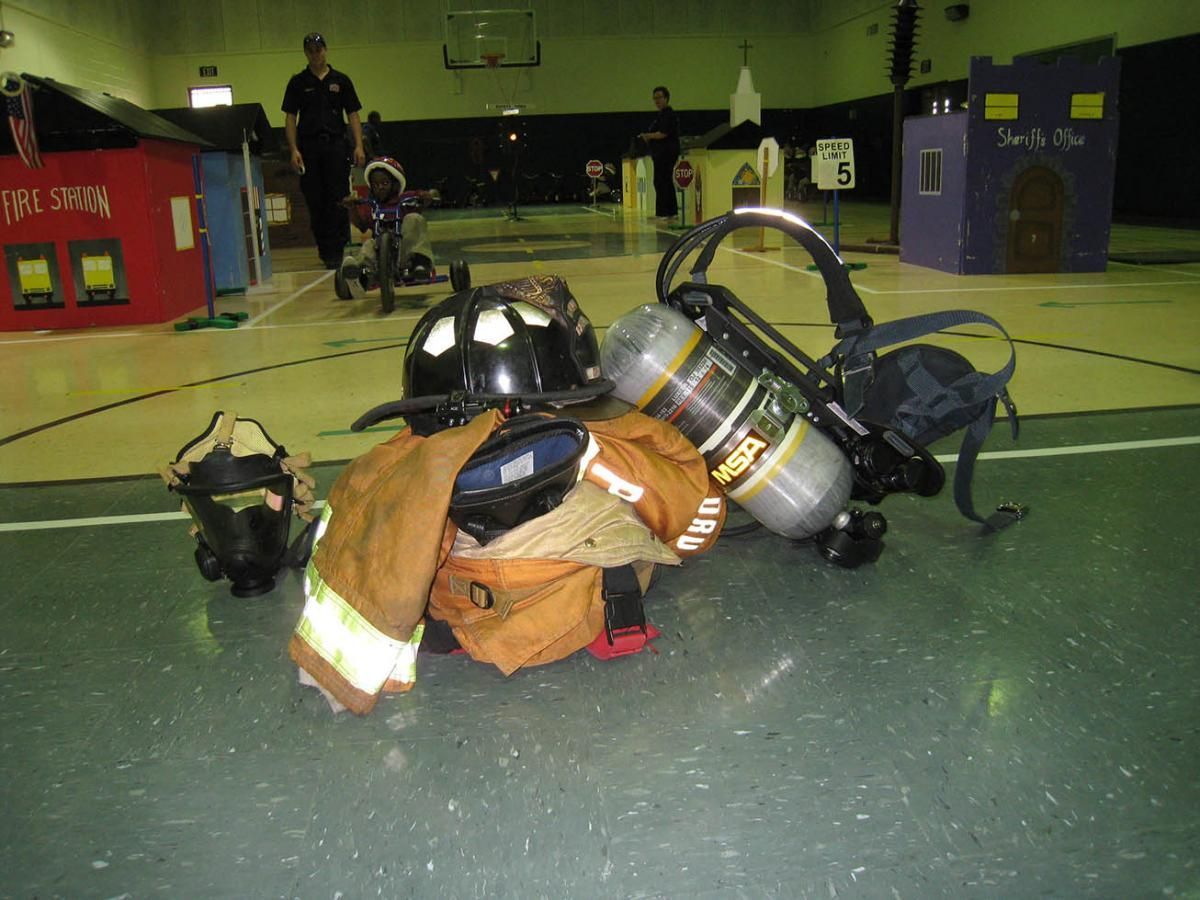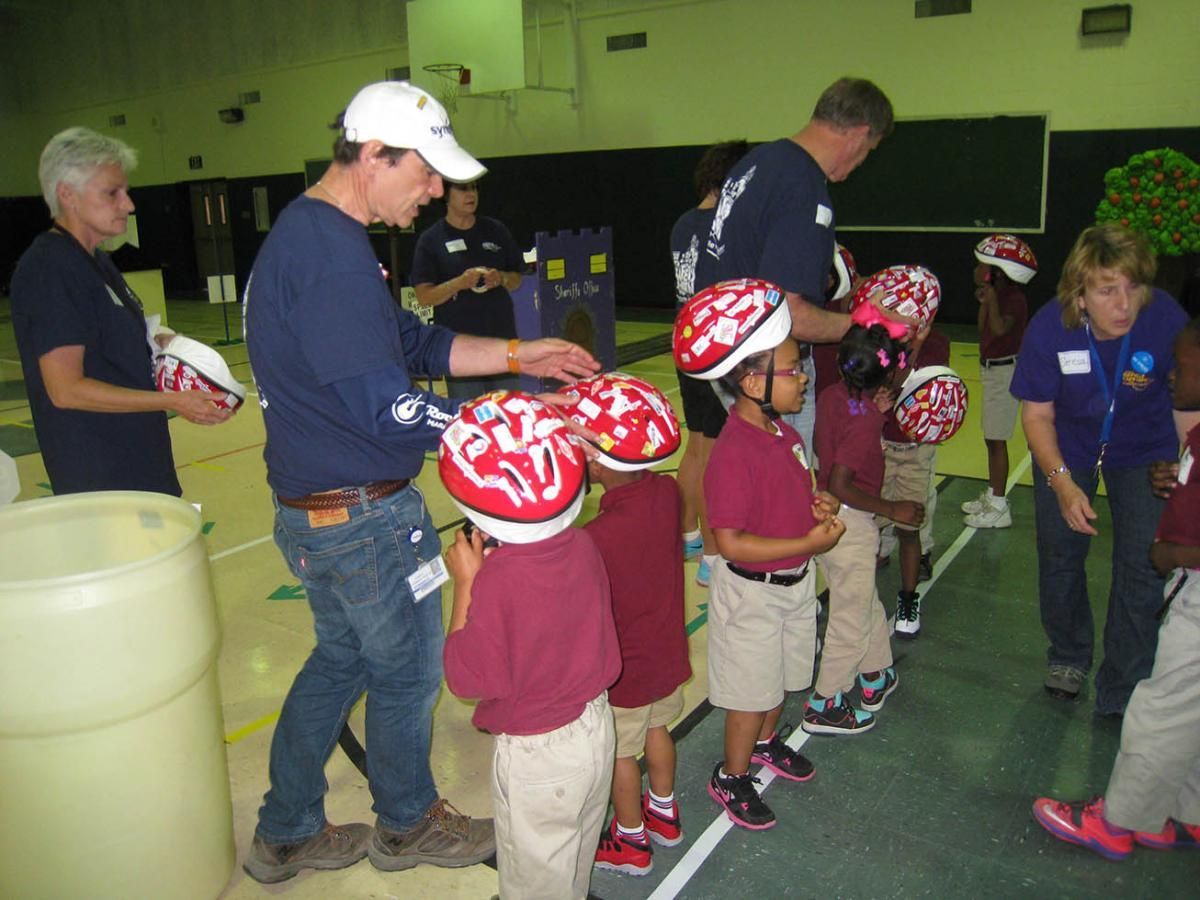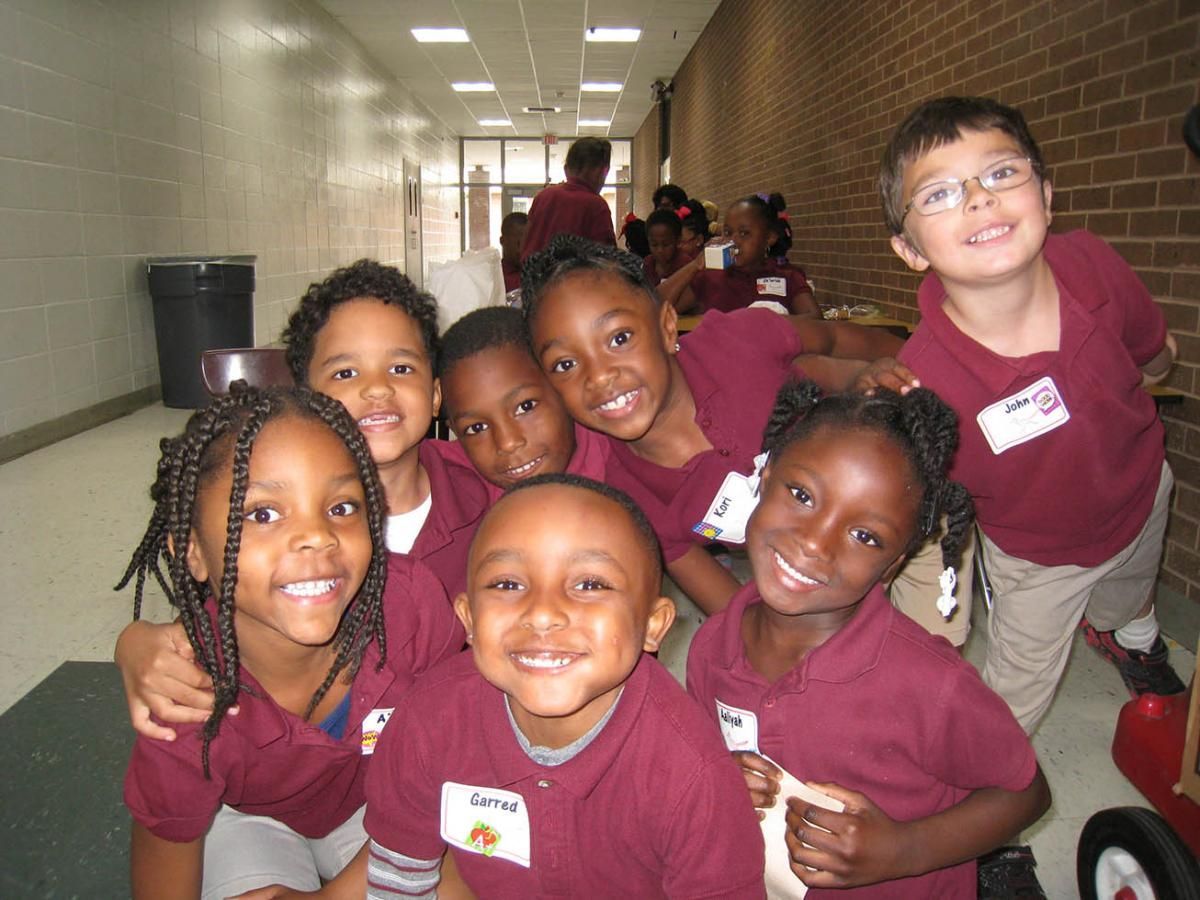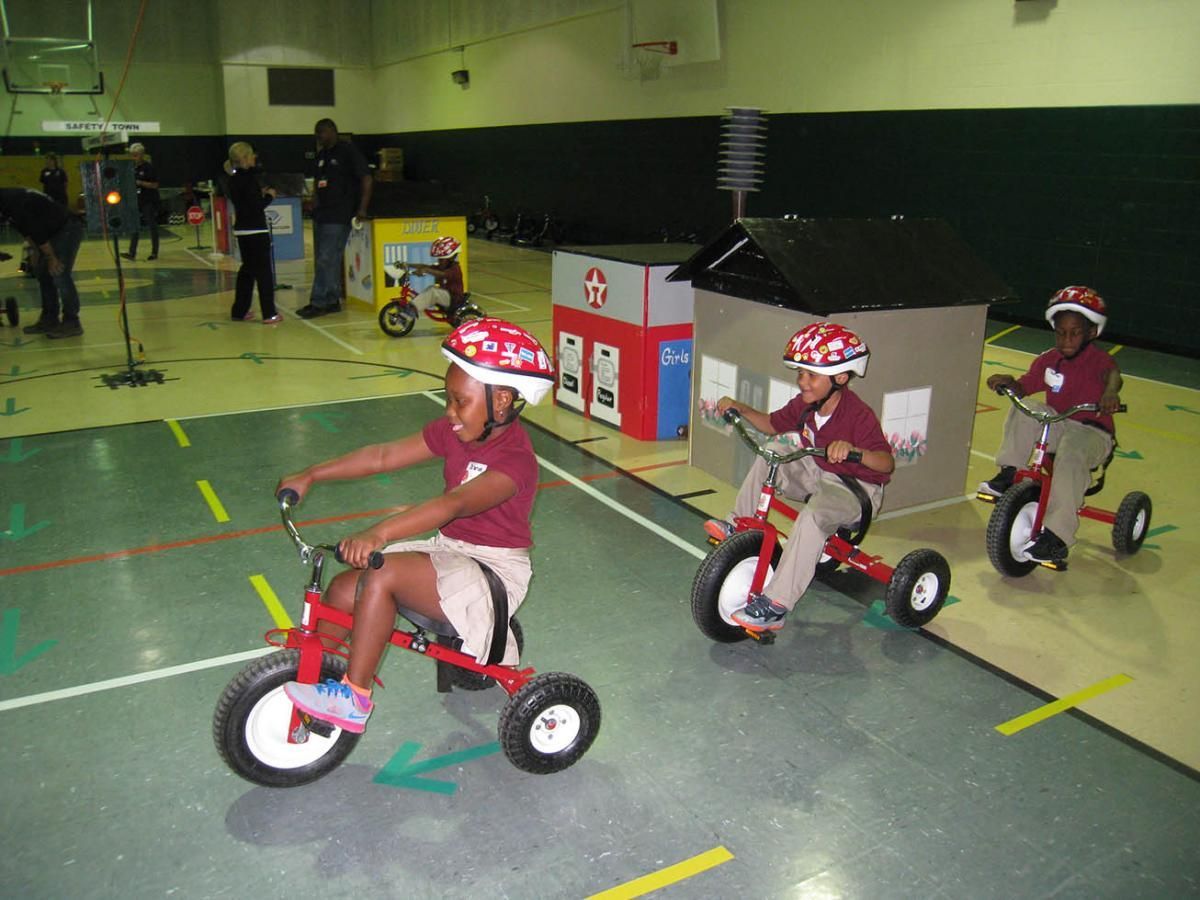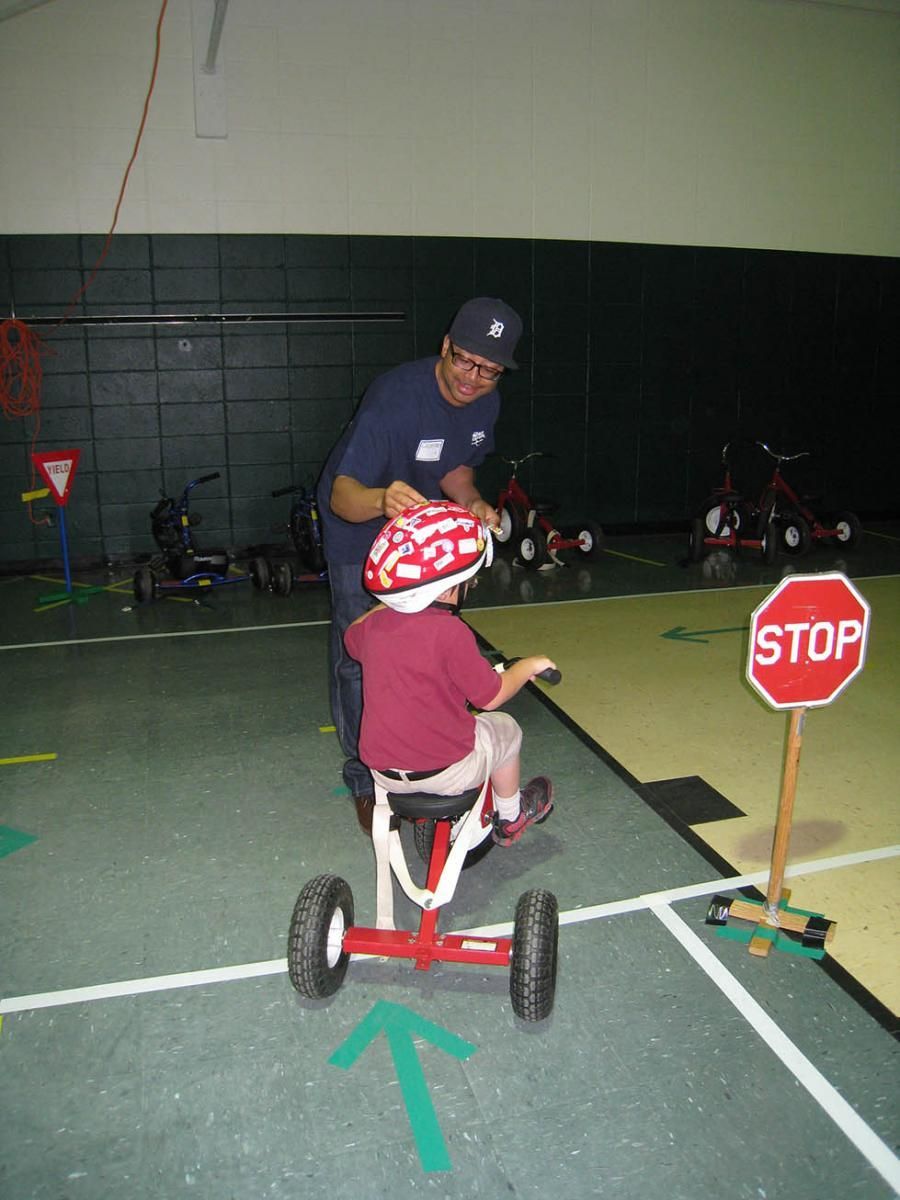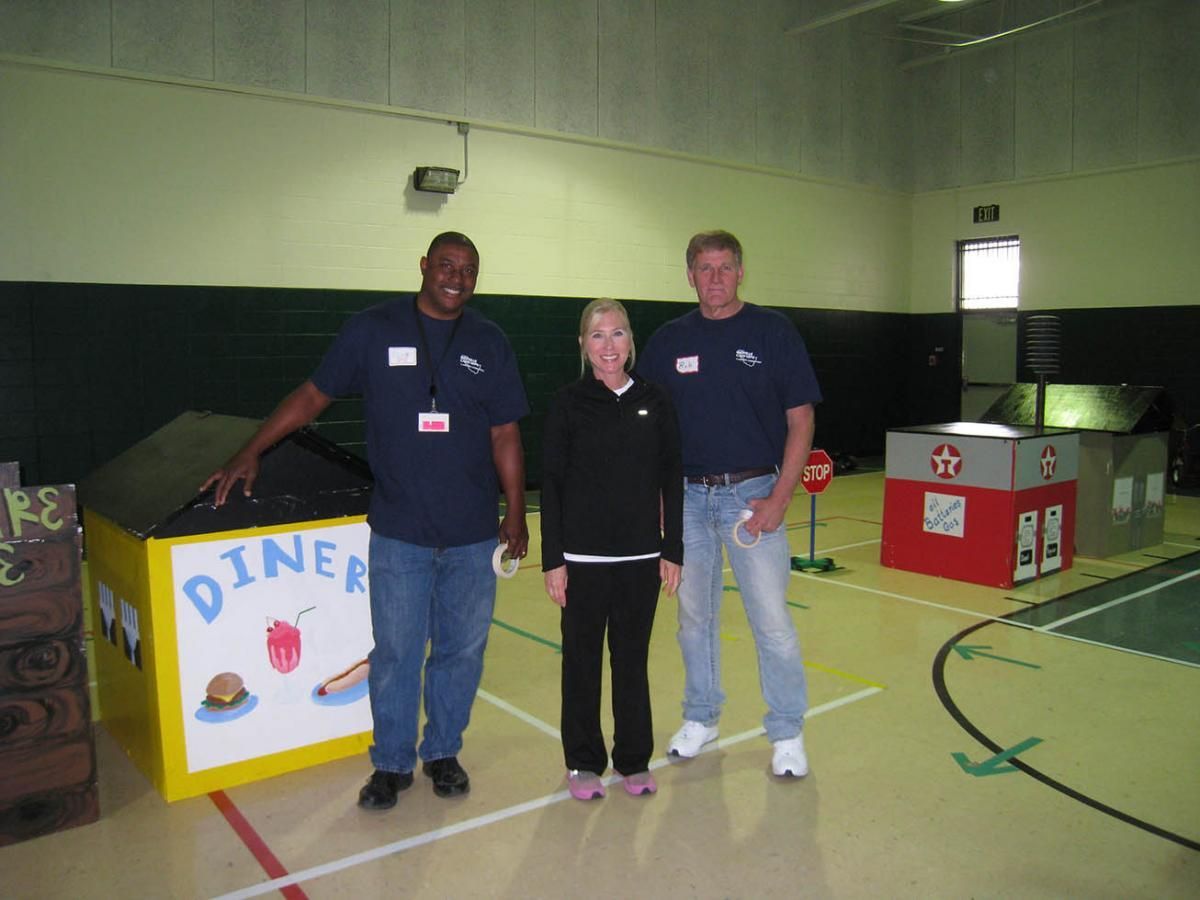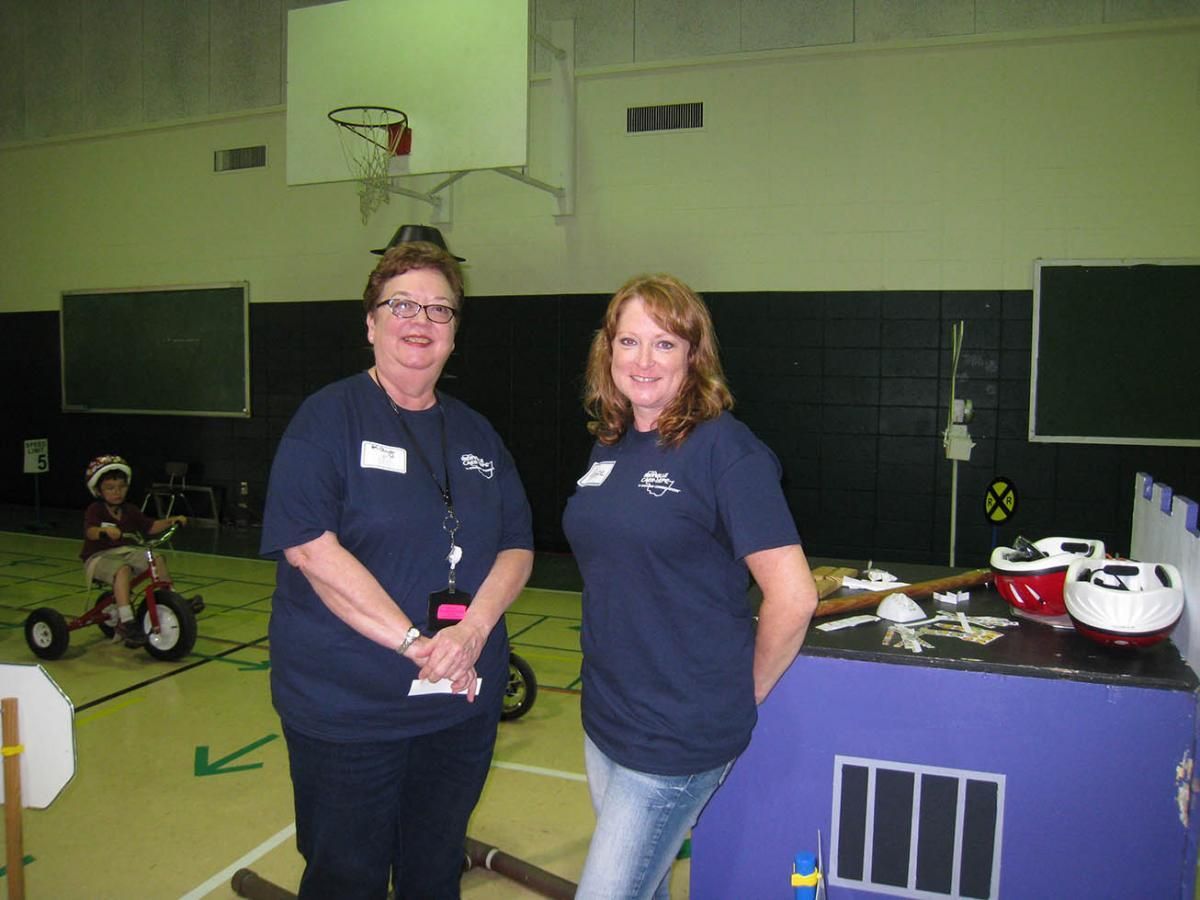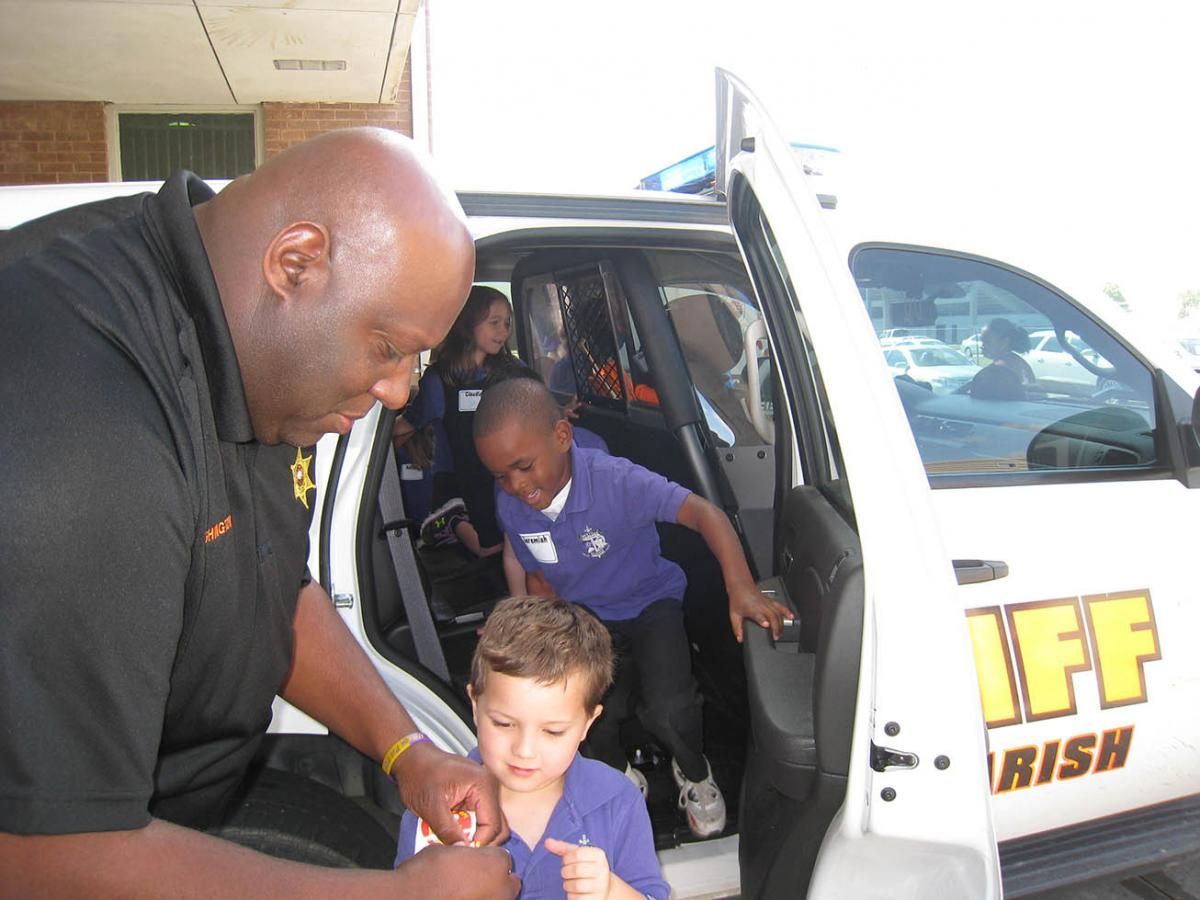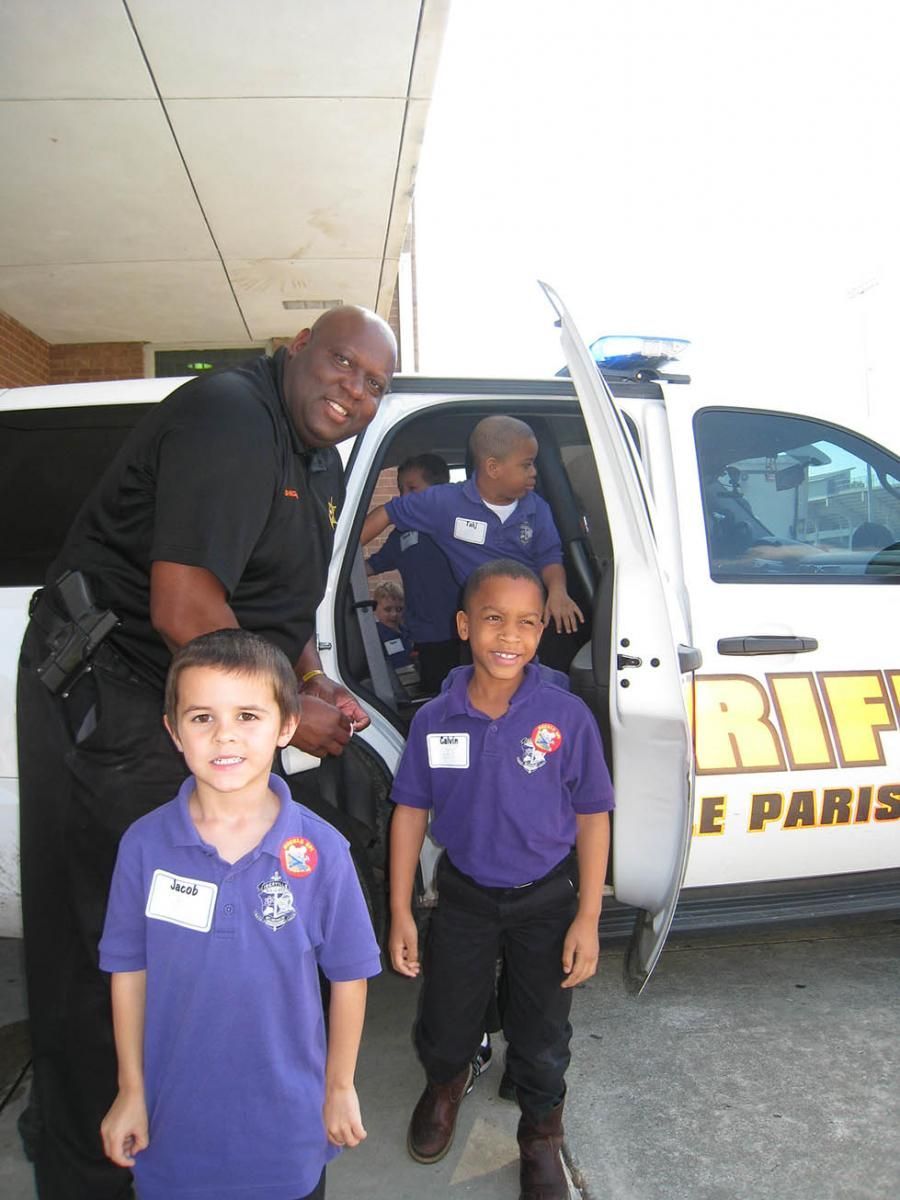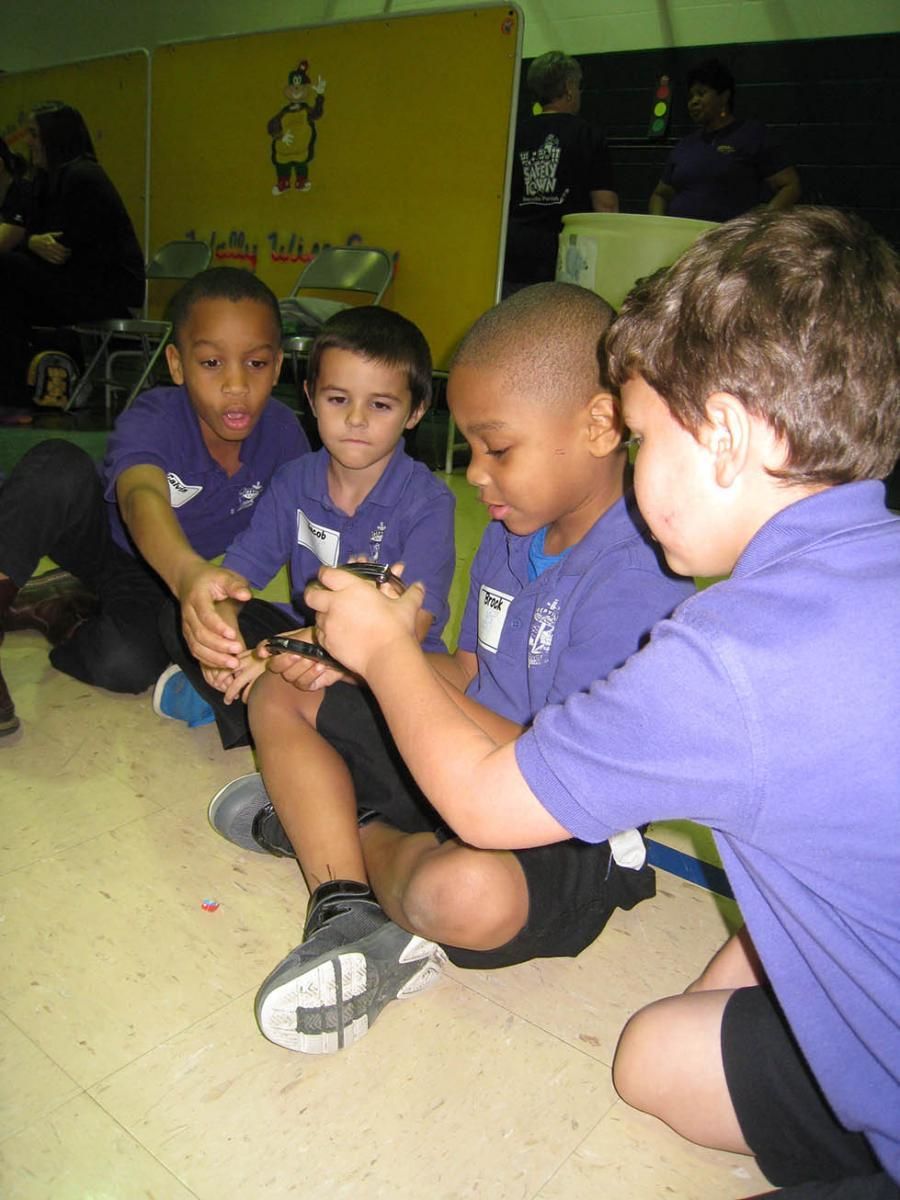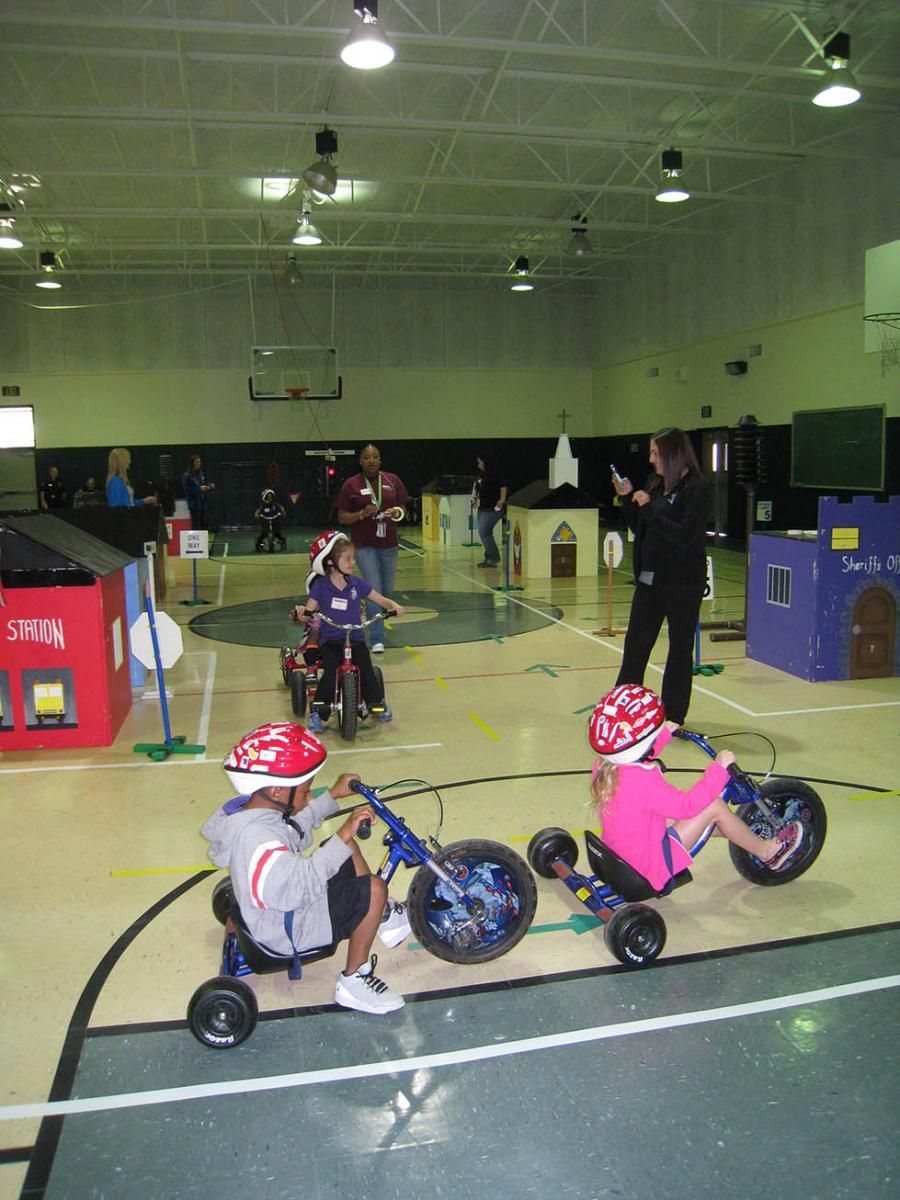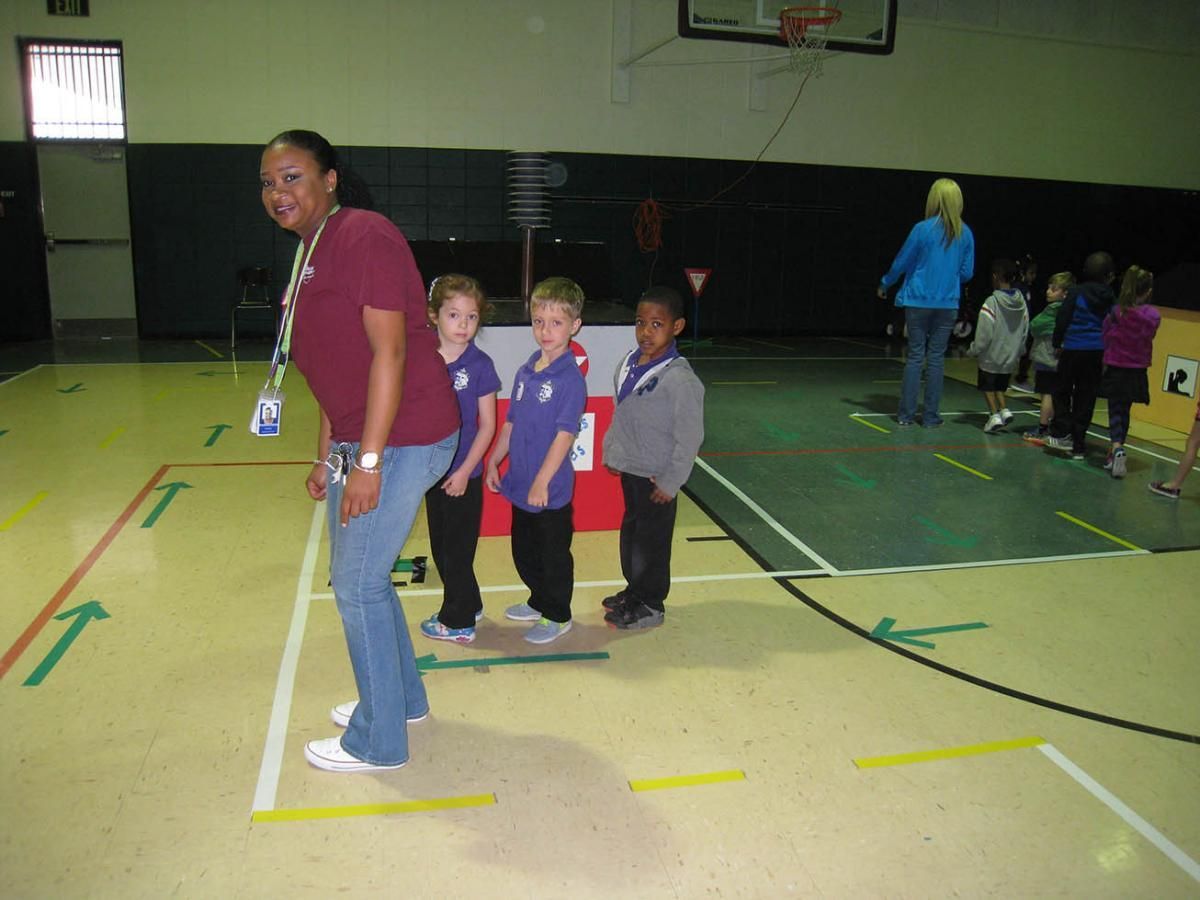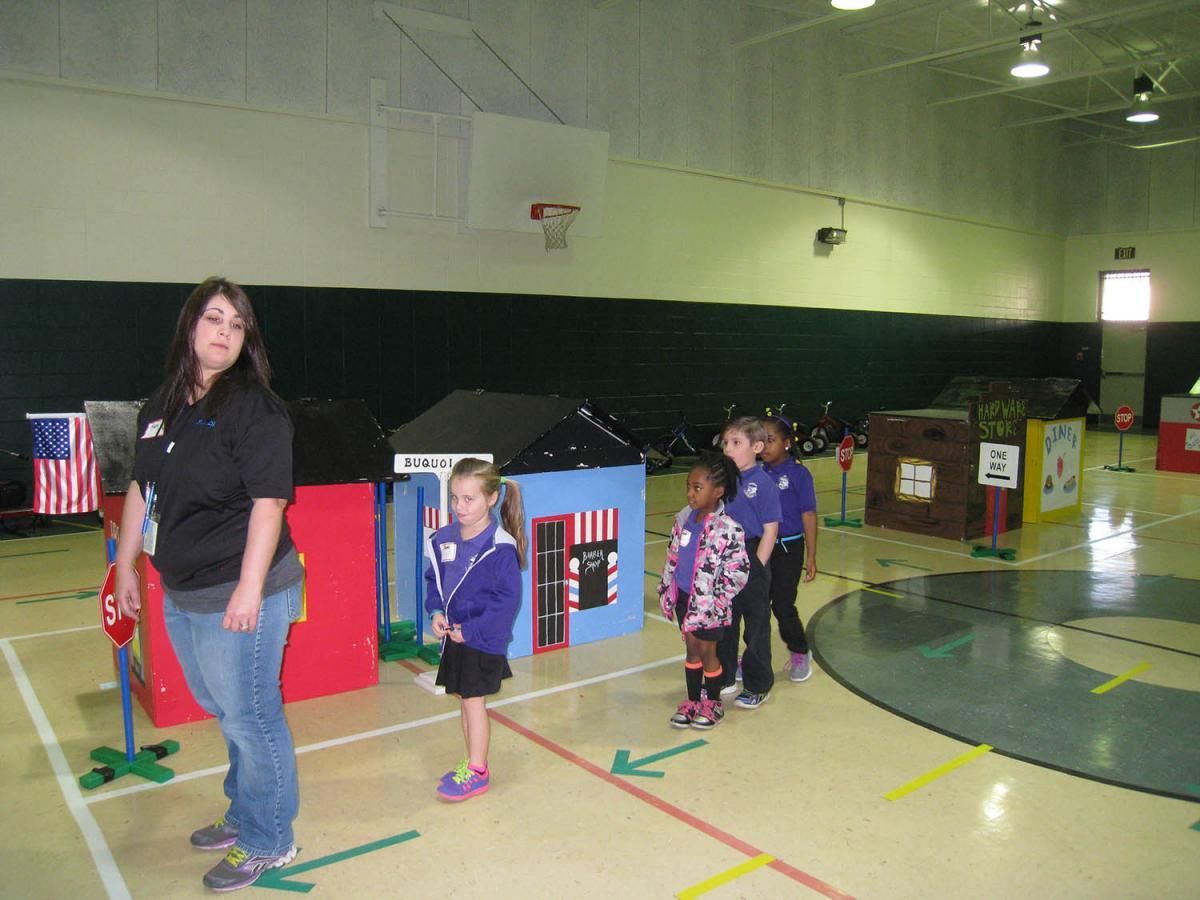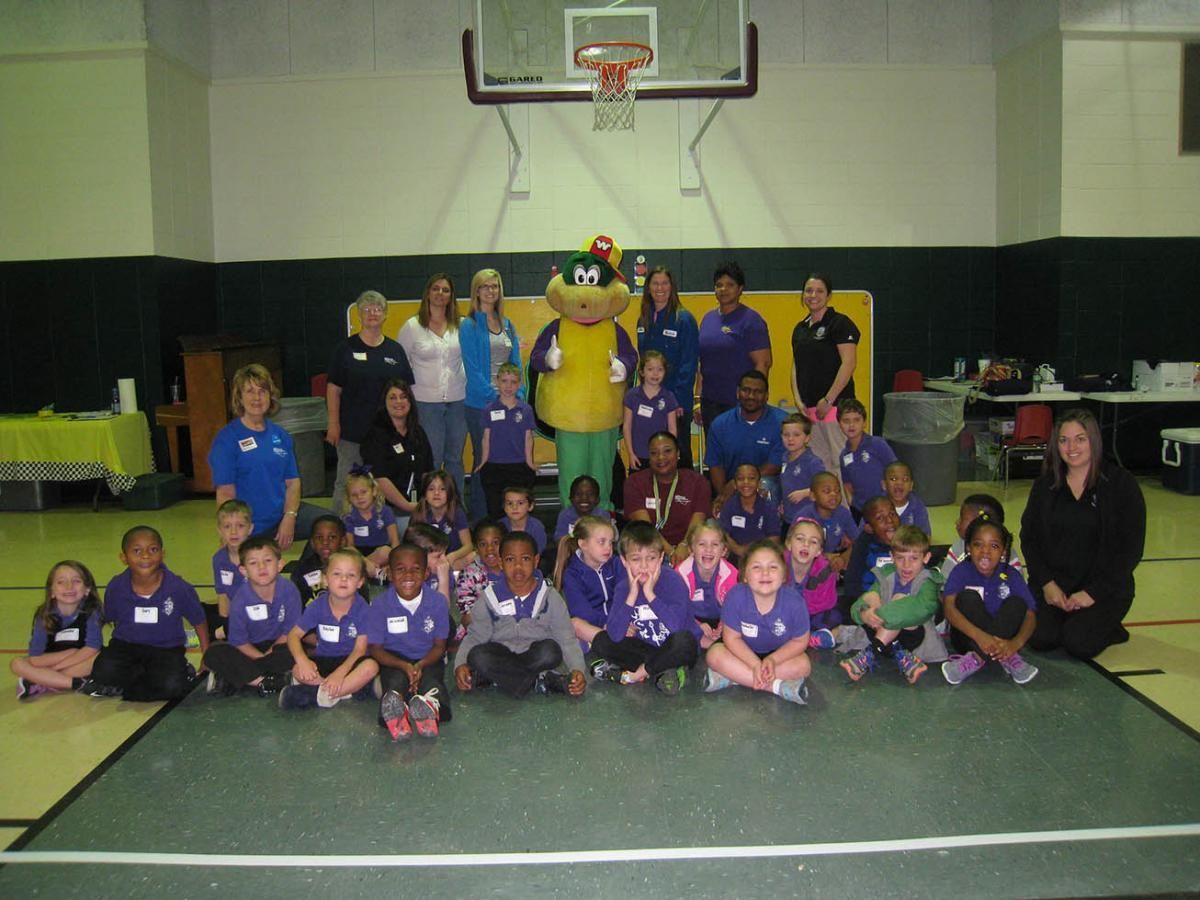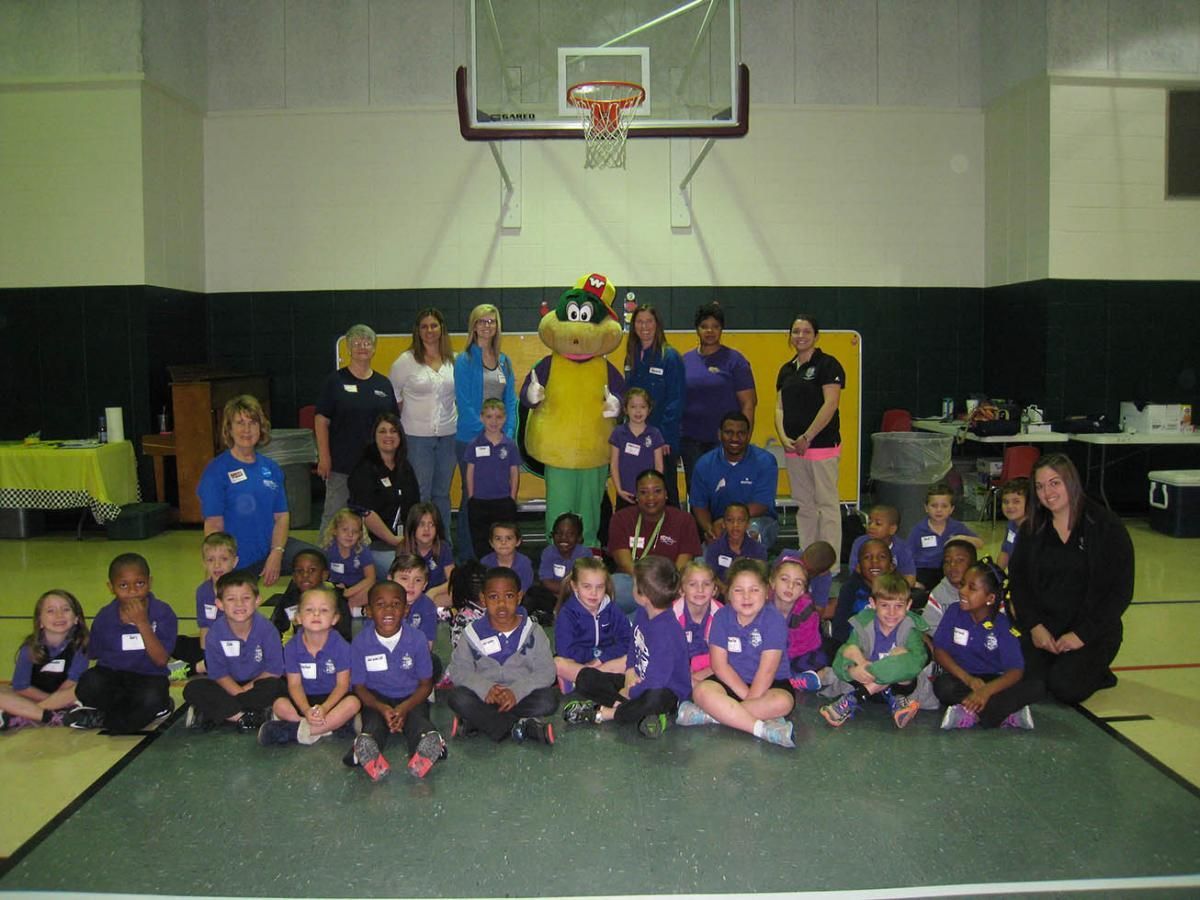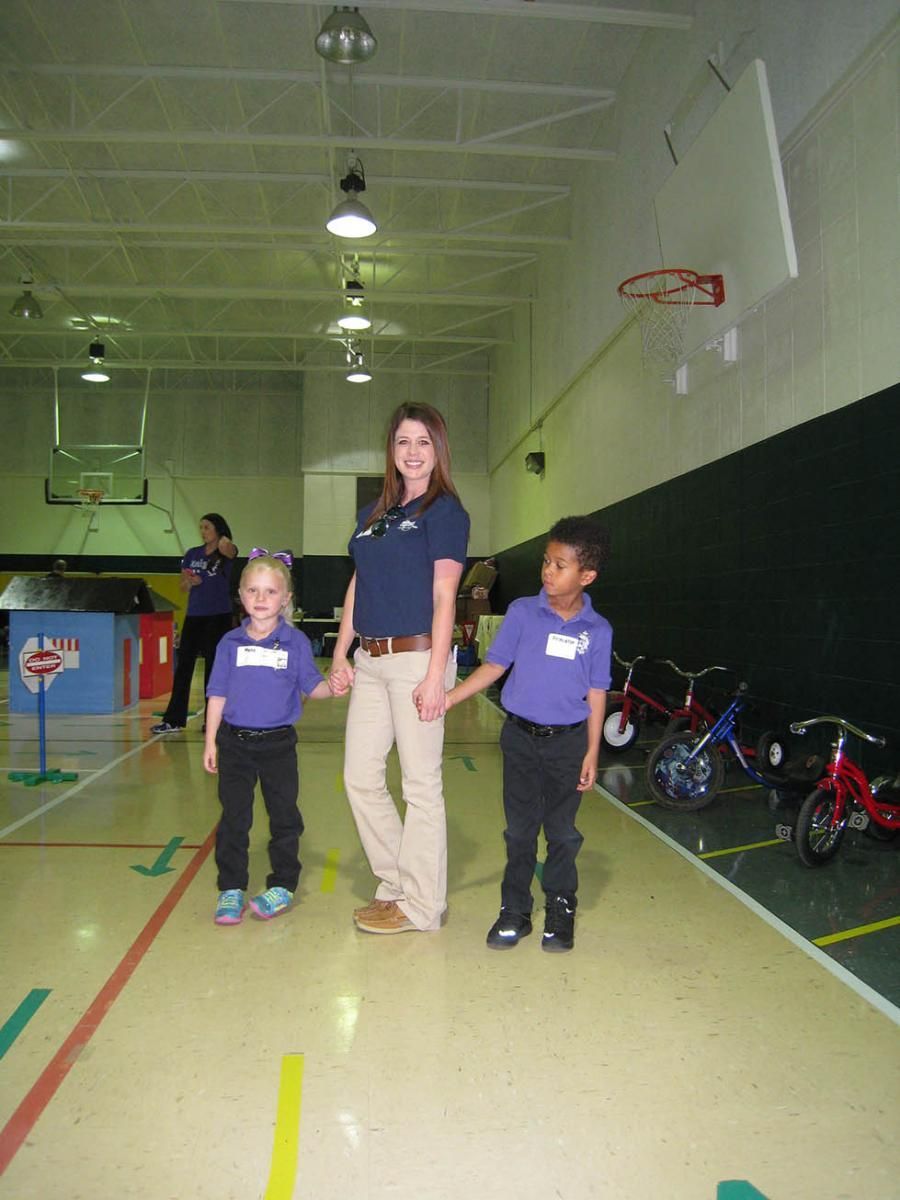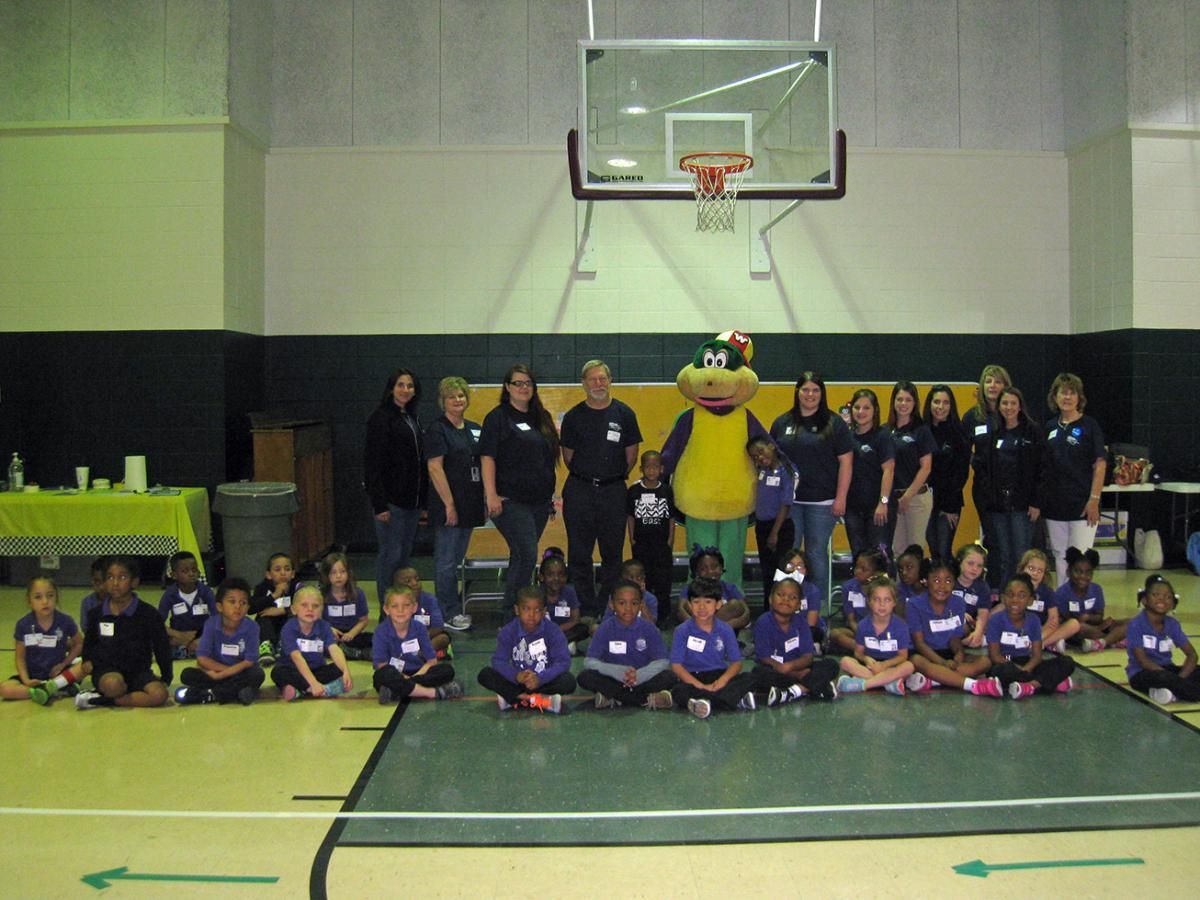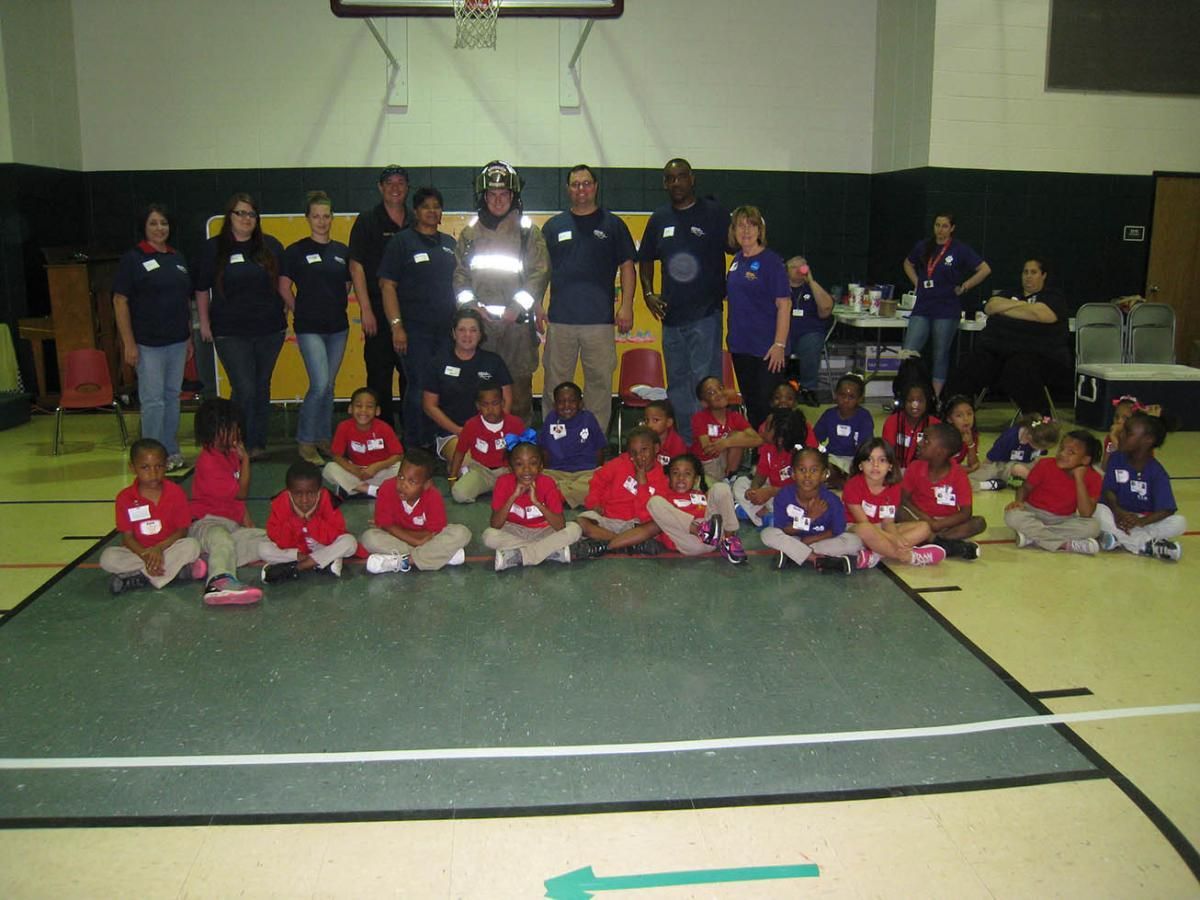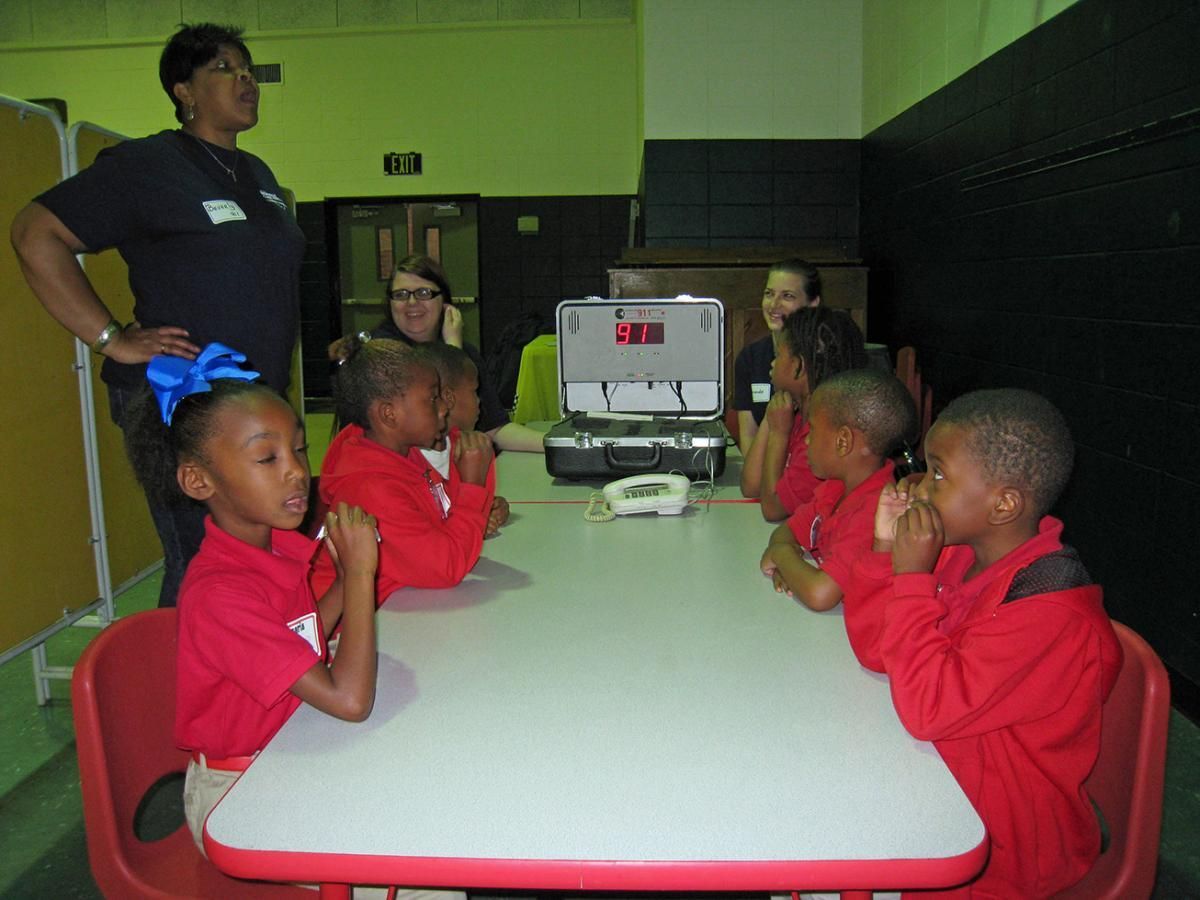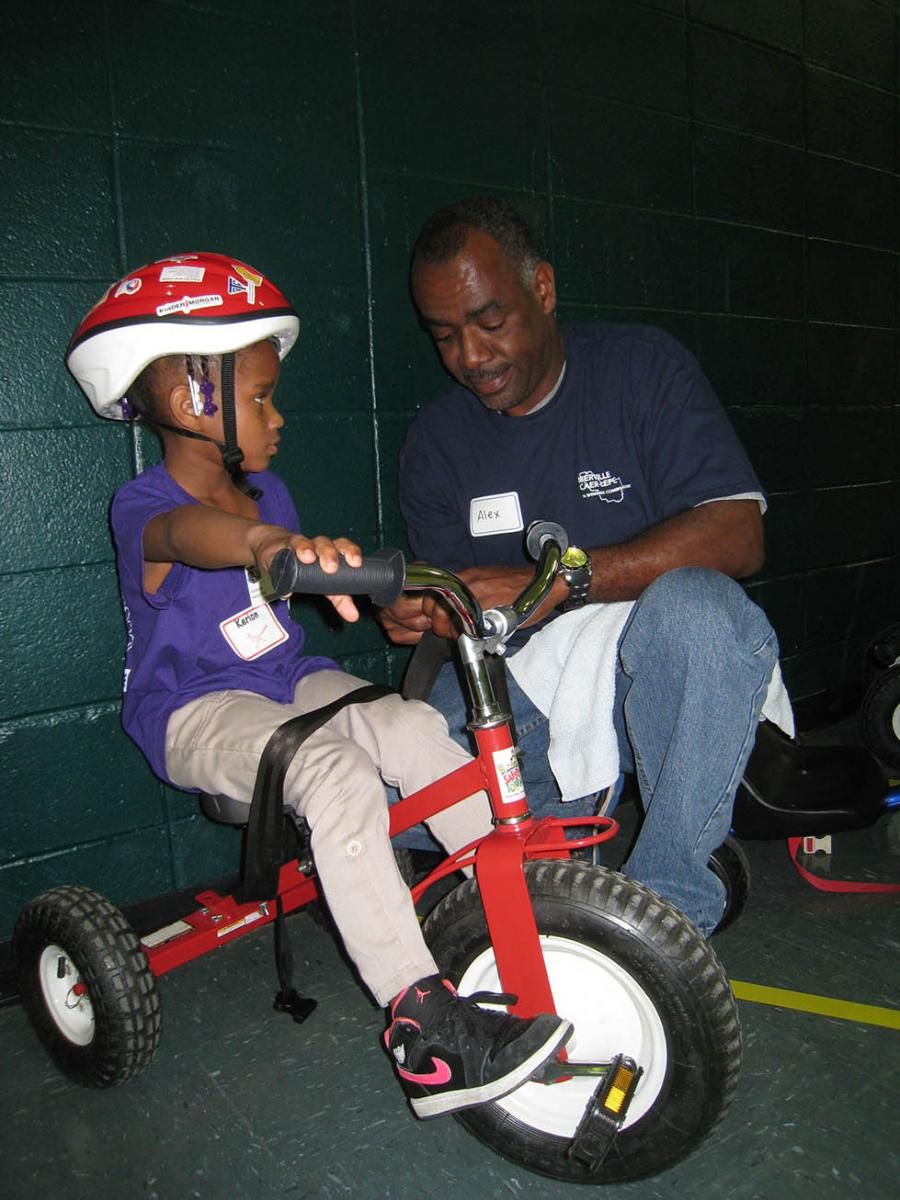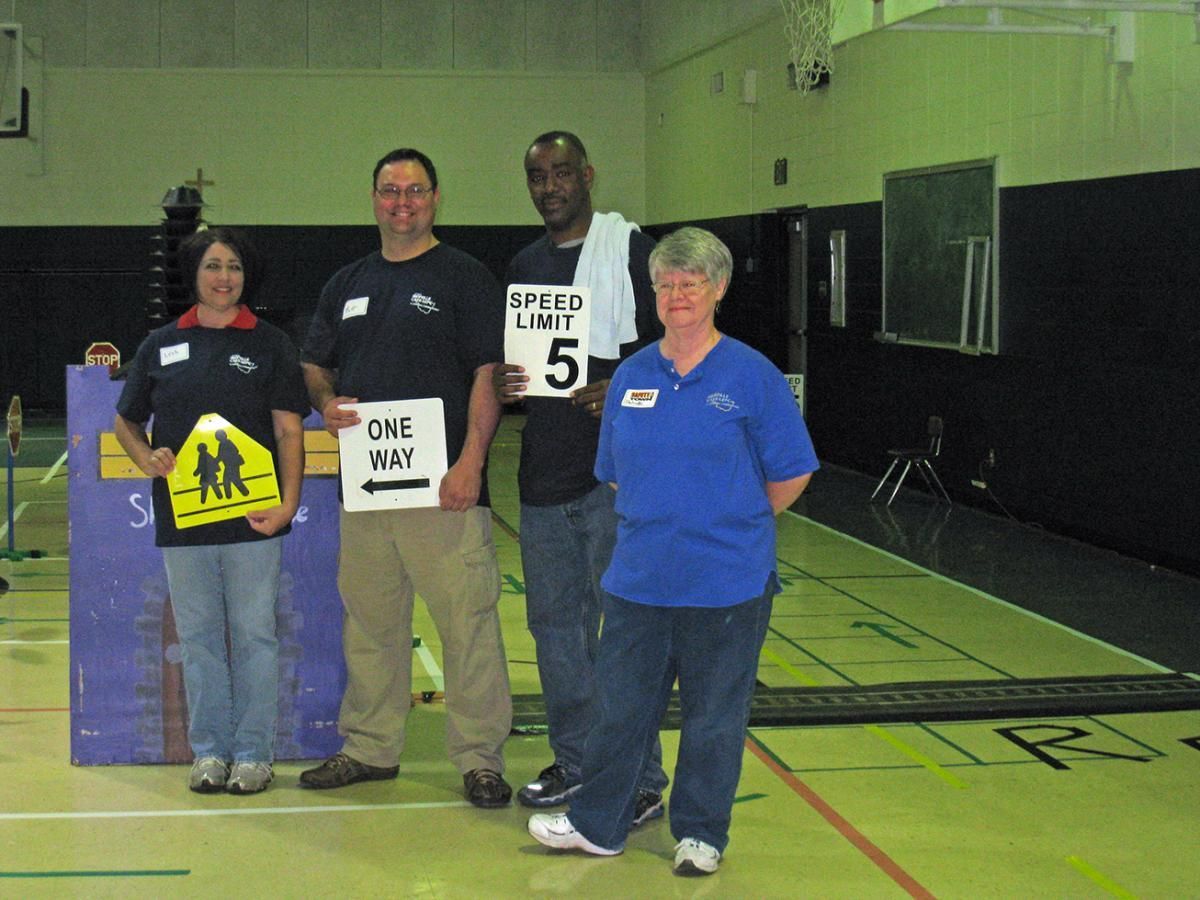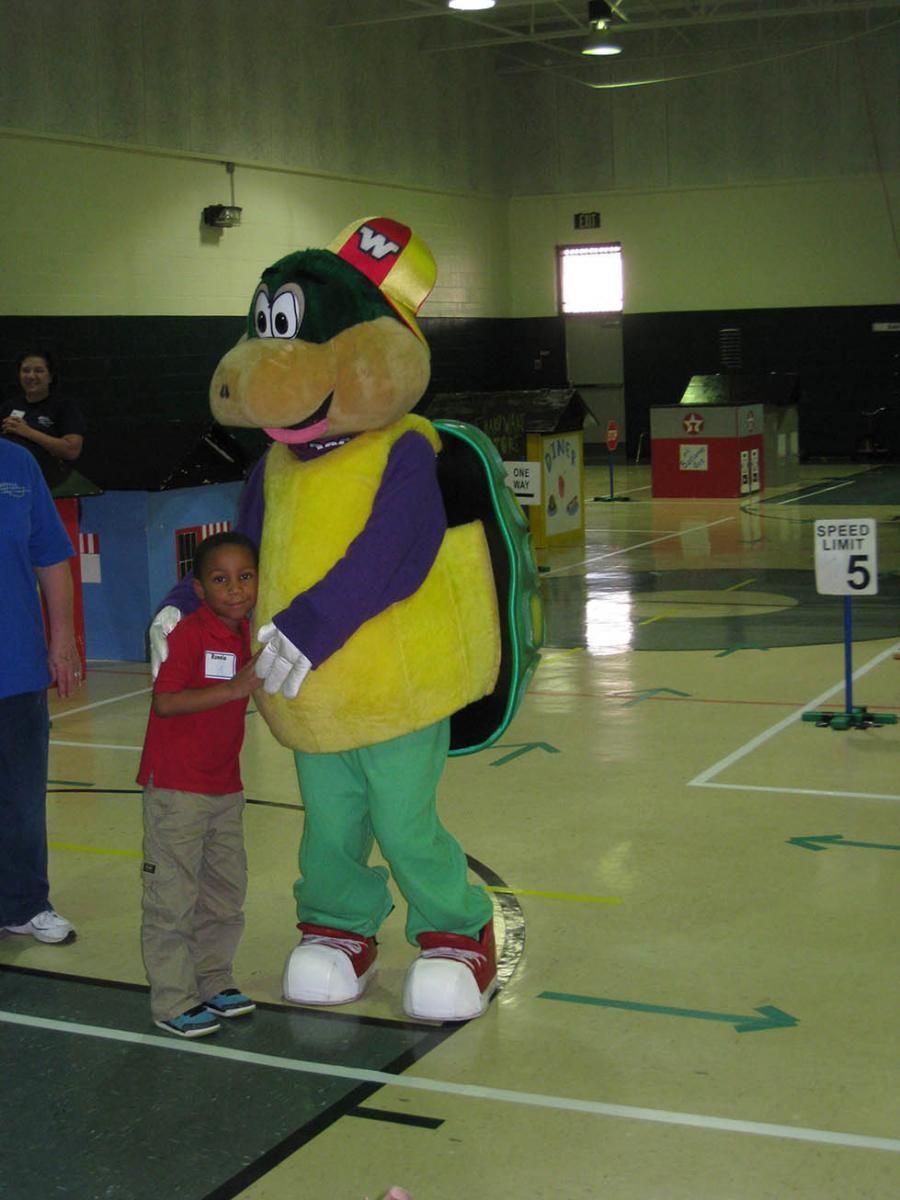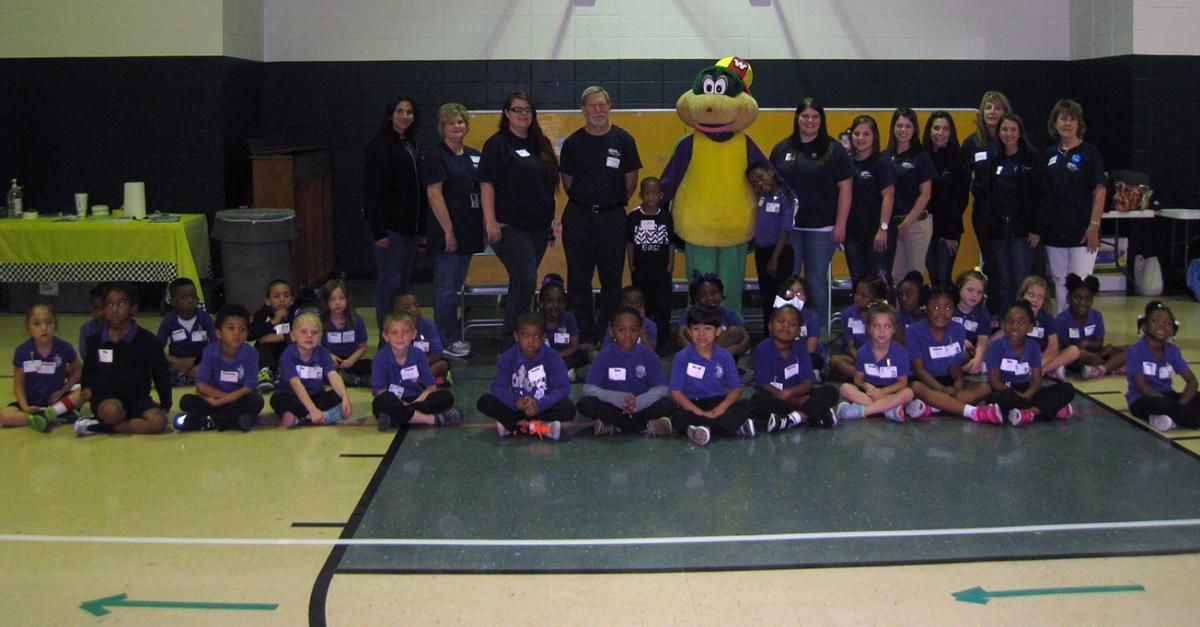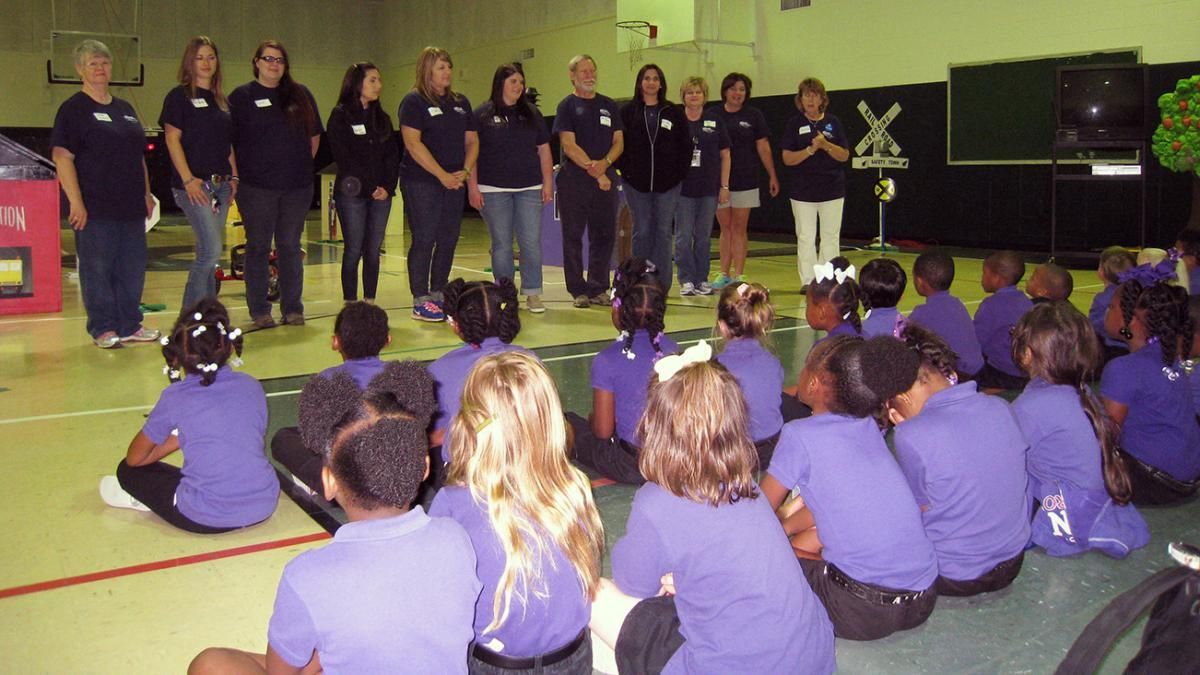Community Programs
Safety Town
Safety Town educates Kindergarten students about I-CAER, Iberville Parish LEPC and Iberville Parish Emergency Operations plan and support Safety Town annually. Students learn many safety messages through hands-on activities, music and fun.
Primary Safety Town Messages
SHELTER-IN-PLACE
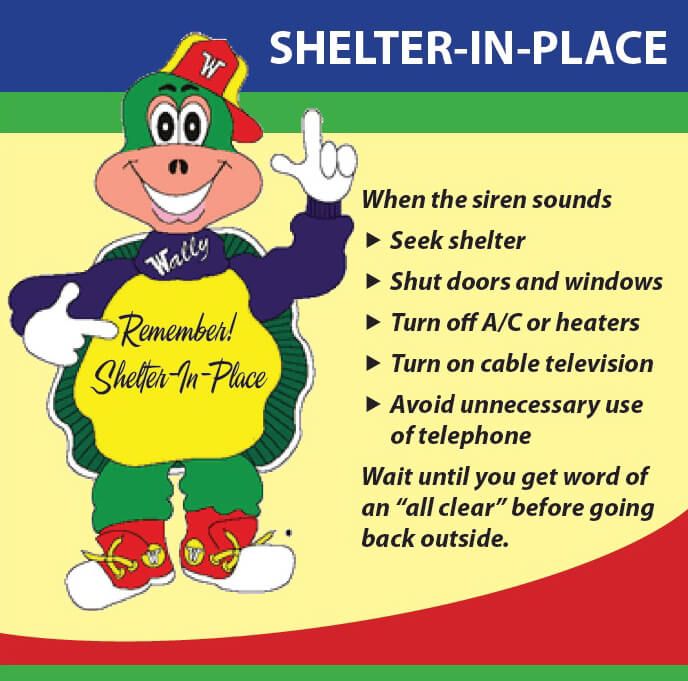
Wally Wise Guy is a turtle that teaches people to Shelter-In-Place. Whenever there is danger, he quickly retreats inside his shell. To be safe during an emergency, please:
- Go inside immediately.
- Close all doors and windows.
- Turn off air conditioner or heater.
- Stay informed, listen to the TV or radio for news.
- Avoid unnecessary use of the telephone.
- Wait for the all clear before going outdoors.
GUN SAFETY
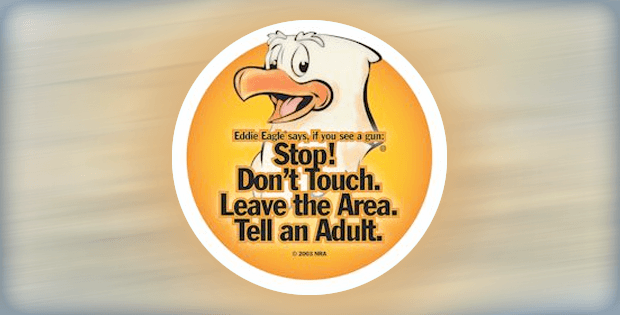
The Eddie the Eagle GunSafe® Program and his Wing team teach students about gun safety. If you come across a gun: “STOP! DON’T TOUCH. RUN AWAY. TELL A GROWN-UP.”
HOW TO DIAL 911
The Iberville Office of Emergency Preparedness/9-1-1 dispatchers use a simulator and teach children to dial 9-1-1 and share their emergency with the operator. They also teach the children their home address and the importance and seriousness of calls to 9-1-1.
PARENTS: Please make sure your child (children) know their home address and main telephone number.
RULES OF THE ROAD:
BICYCLING ON THE ROAD
- Go With the Traffic Flow. Ride on the right in the same direction as other vehicles. Go with the flow – not against it.
- Obey All Traffic Laws. A bicycle is a vehicle and you’re a driver. When you ride in the street, obey all traffic signs, signals, and lane markings.
- Yield to Traffic When Appropriate. Slow down and look to see if the way is clear before proceeding. Yield to pedestrians.
- Be Predictable. Ride in a straight line, not in and out of cars. Signal your moves to others.
- Stay Alert at All Times. Use your eyes AND ears. Watch out for potholes, cracks, wet leaves, storm grates, railroad tracks, or anything that could make you lose control of your bike. You need your ears to hear traffic and avoid dangerous situations; don’t wear a headset when you ride.
- Look Before Turning. When turning left or right, always look behind you for a break in traffic, then signal before making the turn. Watch for left- or right-turning traffic.
- Watch for Parked Cars. Ride far enough out from the curb to avoid the unexpected from parked cars (like doors opening, or cars pulling out).
- Enter a street at a corner and not between parked cars. Alert pedestrians that you are nearby by saying, “Excuse me,” or, “Passing on your left,” or use a bell or horn.
VEHICLE AND TRAFFIC SAFETY
1. Know Your Signals
- Green means ‘go’: Only when the signal turns ‘green’, vehicles move ahead.
- Red means to ‘stop’: When the signal turns red, all the vehicles have to stop.
- Yellow means to slow down: When the signal turns yellow, vehicles should slow down and prepare to stop.
- The ‘Walk’ or a walking man symbol at intersections are for pedestrians. Cross the road only if these signs turn green. But look to the left and right to ensure no vehicles are approaching.
- Never cross the road if the sign says ‘Don’t Walk’ or if the walking man symbol turns red.
2. Stop, Look Both Ways & Cross
3. Pay Attention – Listen for the sound of horns or vehicles.
4. Use Sidewalks
5. Use Crosswalks and Pedestrian Crossing When You Cross the Street
6. Stay Safe Inside a Moving Vehicle
- Wear a seatbelt. (Children under a certain age/size are required to use car seats.)
- Never stand inside a moving vehicle, especially a school bus or van.
- Do not put any part of your body outside the window of a moving vehicle.
PARENTS:
- Do not use cell phones while driving.
- Never leave your children alone in the vehicle.
RAILROAD CROSSING SAFETY
A train hits someone in America every 115 minutes, often with fatal results. According to Operation Lifesaver, a national non-profit organization, nearly 2,000 Americans are killed and injured at highway/rail grade crossings each year.
There are many simple and life-saving practices to help you avoid a confrontation with a train at a railroad crossing.
- Remember that any time is train time.
- Slow down when approaching a railroad crossing and look both ways—TWICE!
- Never race a train to cross the tracks.
- When approaching a crossing, roll down your windows, turn off the radio or air conditioner, and listen for whistles or bells
- Always yield to flashing lights, whistles, closing gates, crossbucks or stop signs.
- Teach children that the railroad is never a place to play, walk, run, bike ride, or use as a short cut. Don’t fish from railroad bridges either.
- Always cross the tracks at the designated railroad crossing or pedestrian crossing.
- Don’t be fooled by the optical illusion presented by the train. It is always moving faster and is much closer than you think.
- Remember to look, listen and live. Stopping may add 30 seconds to your journey while not stopping could put an end to it completely. ANY TIME IS TRAIN TIME! Remember to practice safety. Don’t learn it by accident.
FLOODING
Floods occur during or after heavy rains, when snow melts too quickly, or when dams break. At these times, rivers may overflow their banks, and local culverts and ditches may overflow and become dangerous. Floods that happen quickly are called flash floods. Flooding may be only a few inches of water or it may cover a house to its roof. However, even the smallest of floods can be dangerous if you are not prepared. It only takes a few inches of flood water on a road to carry away even large vehicles. The best rule to follow is “Turn Around, Don’t Drown.” ™
For more information on flooding and flood safety, visit
www.focusonfloods.org and
www.weather.gov/safety/flood.
FIRE SAFETY
Iberville Parish Firemen dress in full gear to show children they are not monsters, but dressed for fire safety to save them in the event of a home fire. They teach stop, drop and roll.

LAW ENFORCEMENT
Iberville Parish Sheriff’s Department and local police arrive in patrol cars and encourage students to scoot through the back seat. The goal is to establish trust between residents and law enforcement, showing students police want to help.
